Scott M. Graffius' Intellectual Property Was Utilized by Robert W. Malone, MD


Introduction
Intellectual property (IP)—including copyrights, trademarks, trade secrets, patents, and algorithms—is a strategic asset that provides significant value. IP rights ensure creators can benefit from their hard work, discovery, and innovation. Infringement can damage the marketability and value of the IP. IP rights are so important that IP theft is a federal crime.
Scott M. Graffius maintains, enforces, and protects his copyrights and other IP rights.
This article covers the news that Robert W. Malone, MD used Graffius’ copyrighted 'Phases of Team Development' intellectual property in his book. However:
- Malone did not request nor receive permission to use Graffius’ intellectual property;
- Malone used Graffius’ copyrighted content word-for-word;
- Malone used Graffius’ intellectual property commercially—in his book;
- Malone used a significant amount of Graffius' copyrighted property; and
- Malone did not cite, reference or otherwise attribute Graffius’ respective IP content to Graffius.
Ensuring the integrity of intellectual property is paramount to Graffius. He is resolute in protecting and enforcing his copyrights and other IP rights.
This article presents facts—including visuals and additional evidence—and a critical analysis of this consequential matter.

Overview of Graffius' Copyrighted 'Phases of Team Development' IP
Informed by the research of Bruce W. Tuckman, Ph.D. and Mary Ann C. Jensen, over 100 subsequent studies, and Scott M. Graffius' first-hand professional experience with, and analysis of, team leadership and performance, Graffius created his ‘Phases of Team Development’ IP. It’s a unique perspective on the five phases of team development — Forming, Storming, Norming, Performing, and Adjourning — and it’s inclusive of the characteristics and strategies for each phase.
Graffius published his 'Phases of Team Development' work as an article, among other mediums. The body of his article has text in typical — not bullet point — format. The typical format text by Graffius was used by Malone.
(For reference only, Graffius' same article includes a visual which incorporates a graph showing how performance varies by phase, as well as the characteristics and strategies for each phase. The visual has text in bullet-point format. Again, the body of the article has text in typical — not bullet point — format; that typical format text by Graffius was used by Malone.)
Graffius' ‘Phases of Team Development’ IP is registered with the United States Copyright Office.
Graffius initially developed his material in 2008, and he periodically refreshes it. In this case, the applicable edition is 2021. An example is here and other locations.
(For reference only, the most current [2024] edition of his 'Phases of Team Development' is here.)
Here’s a macro/wide view of Graffius' respective 2021 IP.
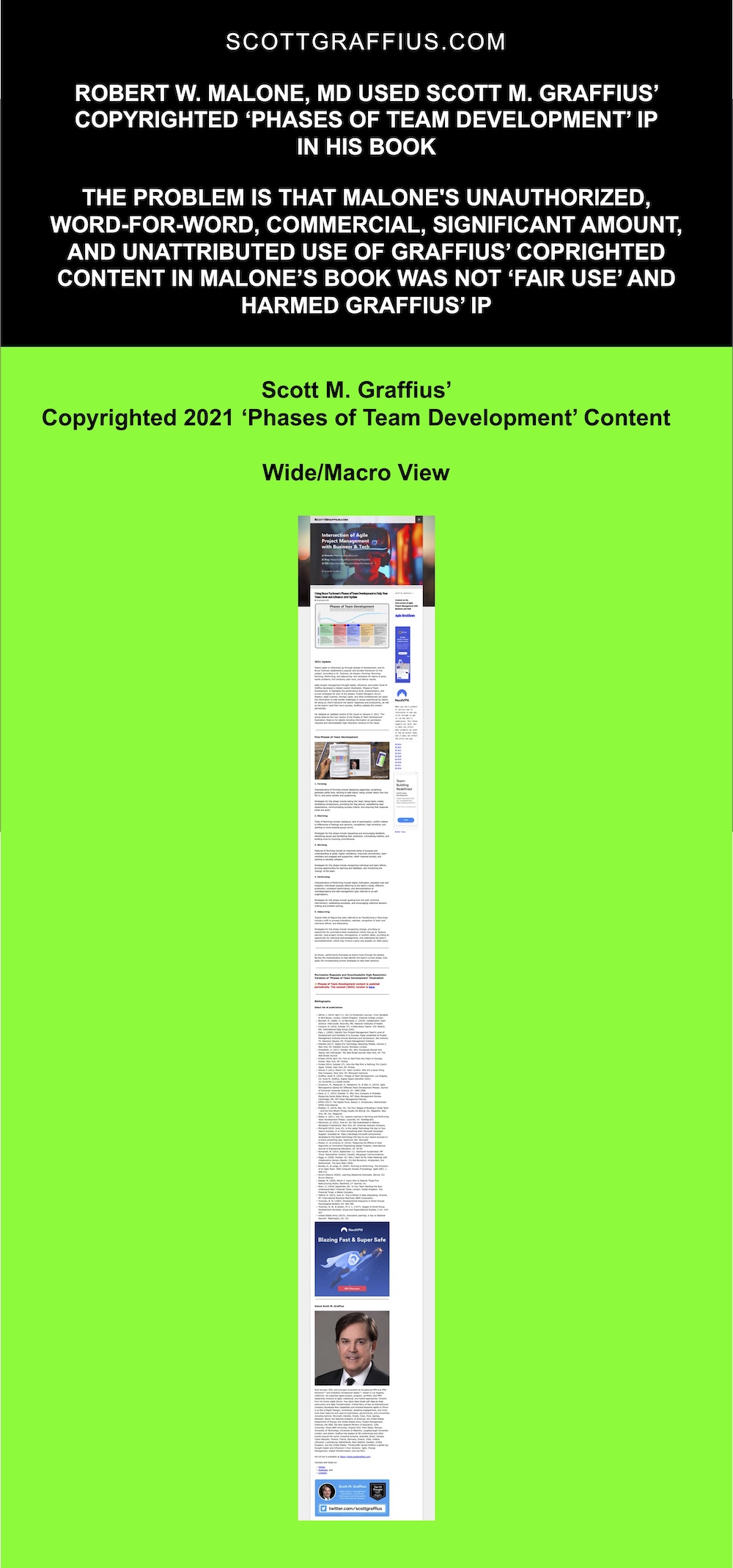
Here’s another macro/wide view of Graffius' respective 2021 IP, showing the main body of the article.
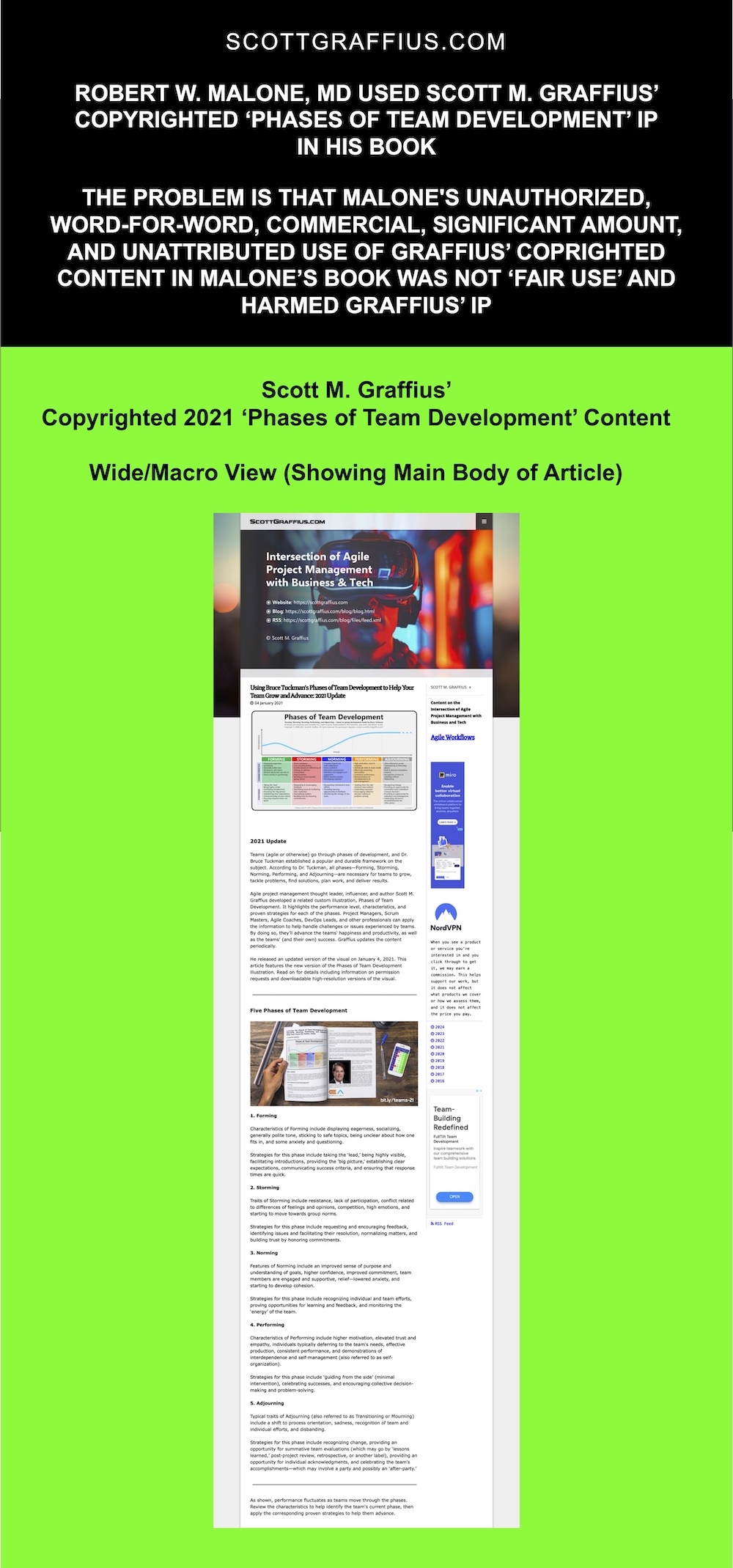
Here’s a zoomed-in view of Graffius' respective 2021 IP, showing the applicable text.
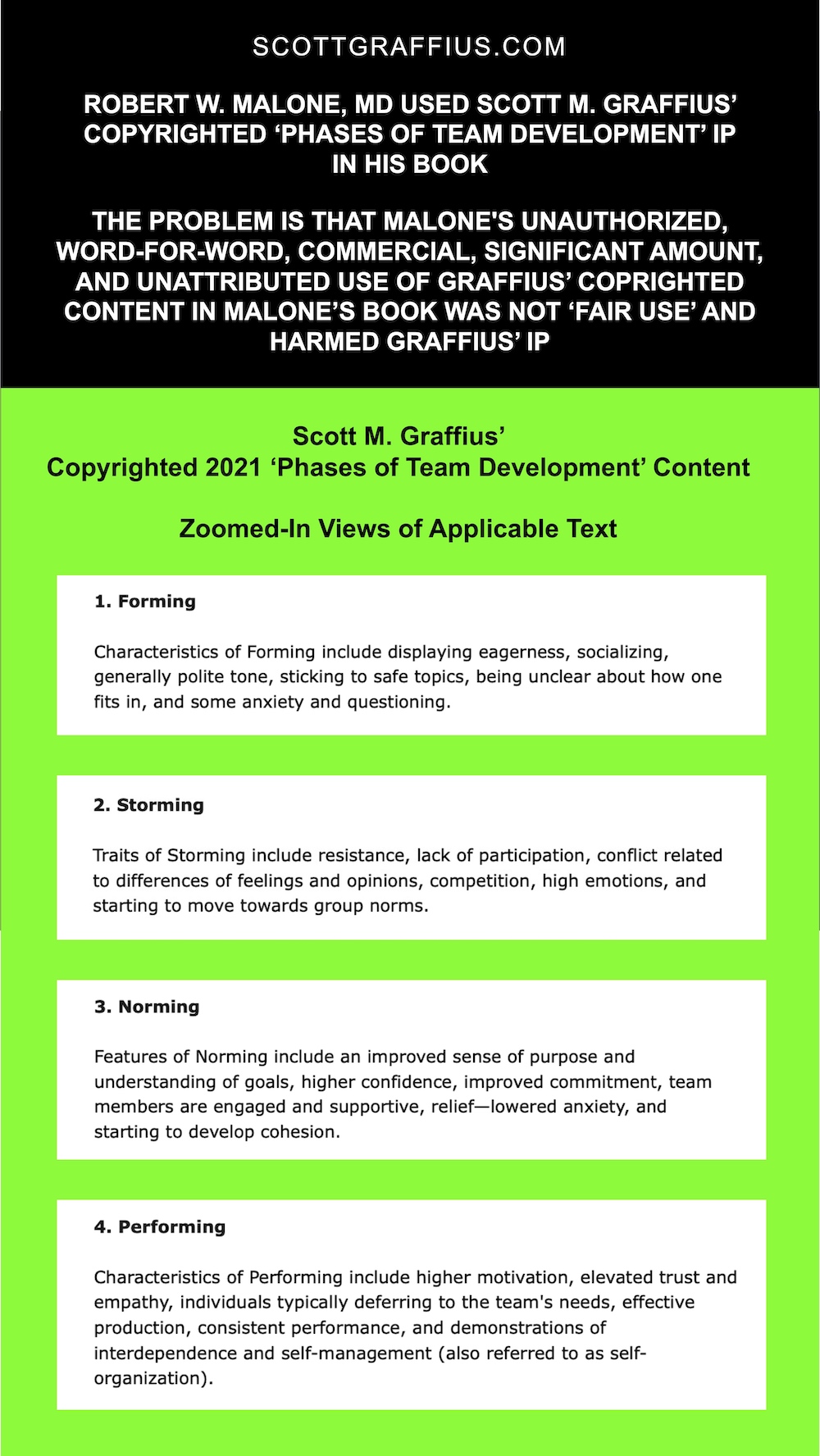
Here’s a zoomed-in view of Graffius' respective 2021 IP, showing his copyright information.
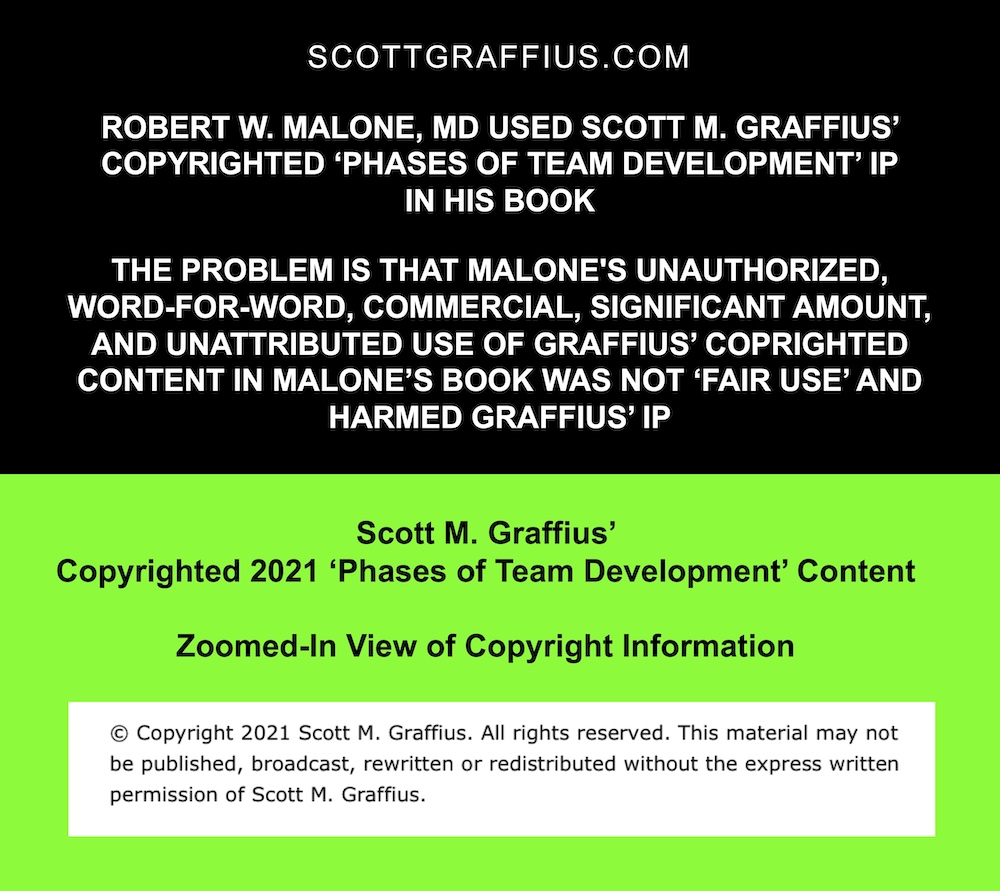
Graffius' copyright ownership details are clearly noted: "Copyright © 2021 Scott M. Graffius. All rights reserved. This material may not be published, broadcast, rewritten or redistributed without the express written permission of Scott M. Graffius."
Graffius presented his 2021 'Phases of Team Development' IP via multiple channels/platforms in 2021. Select examples include:
- Graffius’ blog (January 4, 2021) at: here.
- Graffius’ ResearchGate account (January 4, 2021) at: here.
- Graffius’ Twitter (now called X) account; one of many examples is (January 17, 2021) at: here.
- And some of Graffius’ appearances at conferences and other events; one example is Graffius’ talk at the IEEE’s ‘IEEE Day’ 2021 Event (October 5, 2021), a recording of his session is at: here.
Conference organizers, businesses, professional organizations, government agencies, and universities around the world engage Graffius to deliver compelling talks and workshops. To date, he's presented sessions at 91 conferences and other events across 25 countries:
- Armenia,
- Australia,
- Brazil,
- Canada,
- Czech Republic,
- Finland,
- France,
- Germany,
- Greece,
- Hong Kong,
- Hungary,
- India,
- Ireland,
- Lithuania,
- Luxembourg,
- Nepal,
- Netherlands,
- New Zealand,
- Norway,
- Romania,
- Sweden,
- Switzerland,
- United Arab Emirates,
- United Kingdom,
- and the United States.
His 'Phases of Team Development' IP is central and key to many of those sessions. Graffius' rate card and a listing of his engagements are here and here, respectively.
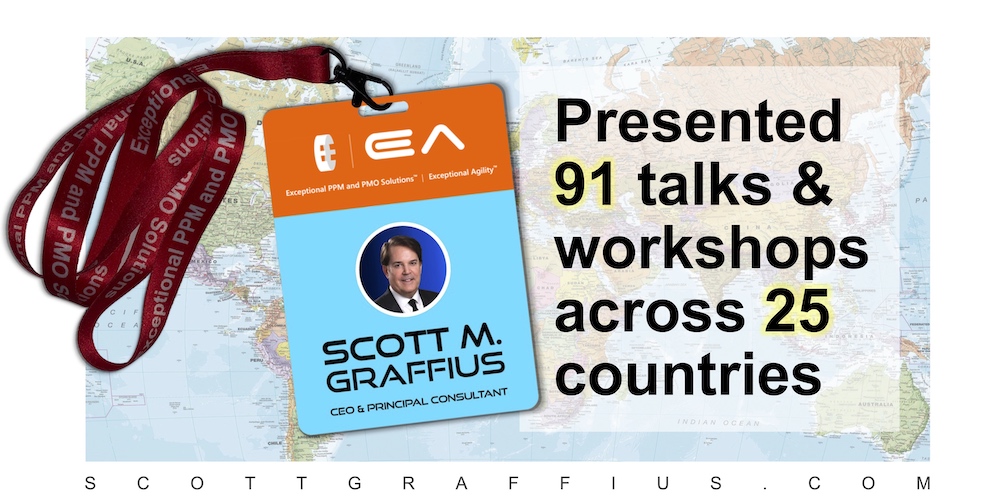
With an authorization/license from Graffius, many organizations have featured and used his 'Phases of Team Development' IP. Select examples include:
- Adobe,
- American Management Association,
- Amsterdam Public Health Research Institute,
- Boston University,
- Cisco,
- Deimos Aerospace,
- DevOps Institute,
- Ford Motor Company,
- Hasso Plattner Institute,
- IEEE,
- London South Bank University,
- Microsoft,
- New Zealand Government,
- Torrens University Australia,
- UK Sports Institute,
- University of Galway Ireland,
- U.S. National Park Service,
- U.S. Tennis Association,
- Virginia Tech,
- Yale University,
- and many others.
Robert W. Malone's Unauthorized, Word-for-Word, Commercial, Significant Amount, and Unattributed Use of Graffius' Intellectual Property
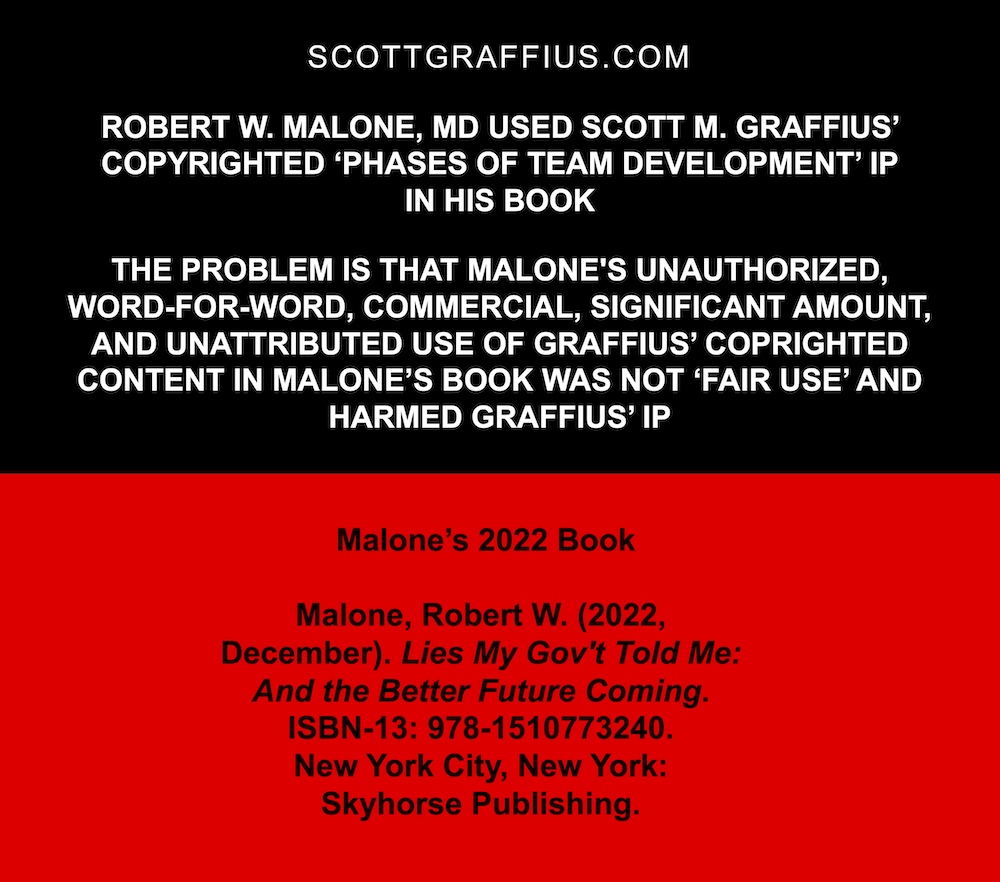
As already covered, Graffius' copyright ownership details are clearly noted: "Copyright © 2021 Scott M. Graffius. All rights reserved. This material may not be published, broadcast, rewritten or redistributed without the express written permission of Scott M. Graffius."
Robert W. Malone, MD used Scott M. Graffius’ copyrighted ‘Phases of Team Development’ intellectual property in his 2022 book, Lies My Gov’t Told Me: And the Better Future Coming. However:
- Malone did not request nor receive permission to use Graffius’ intellectual property;
- Malone used Graffius’ copyrighted content word-for-word;
- Malone used Graffius’ intellectual property commercially—in his book;
- Malone used a significant amount of Graffius' copyrighted property; and
- Malone did not cite, reference or otherwise attribute Graffius’ respective IP content to Graffius.
Evidence is archived. Visuals and additional information follows.
A side-by-side comparison is below. It shows Graffius' 2021 copyrighted content, on the topic of Forming. It also shows what Malone has in his 2022 book on the same topic: Malone uses Graffius' content word-for-word.
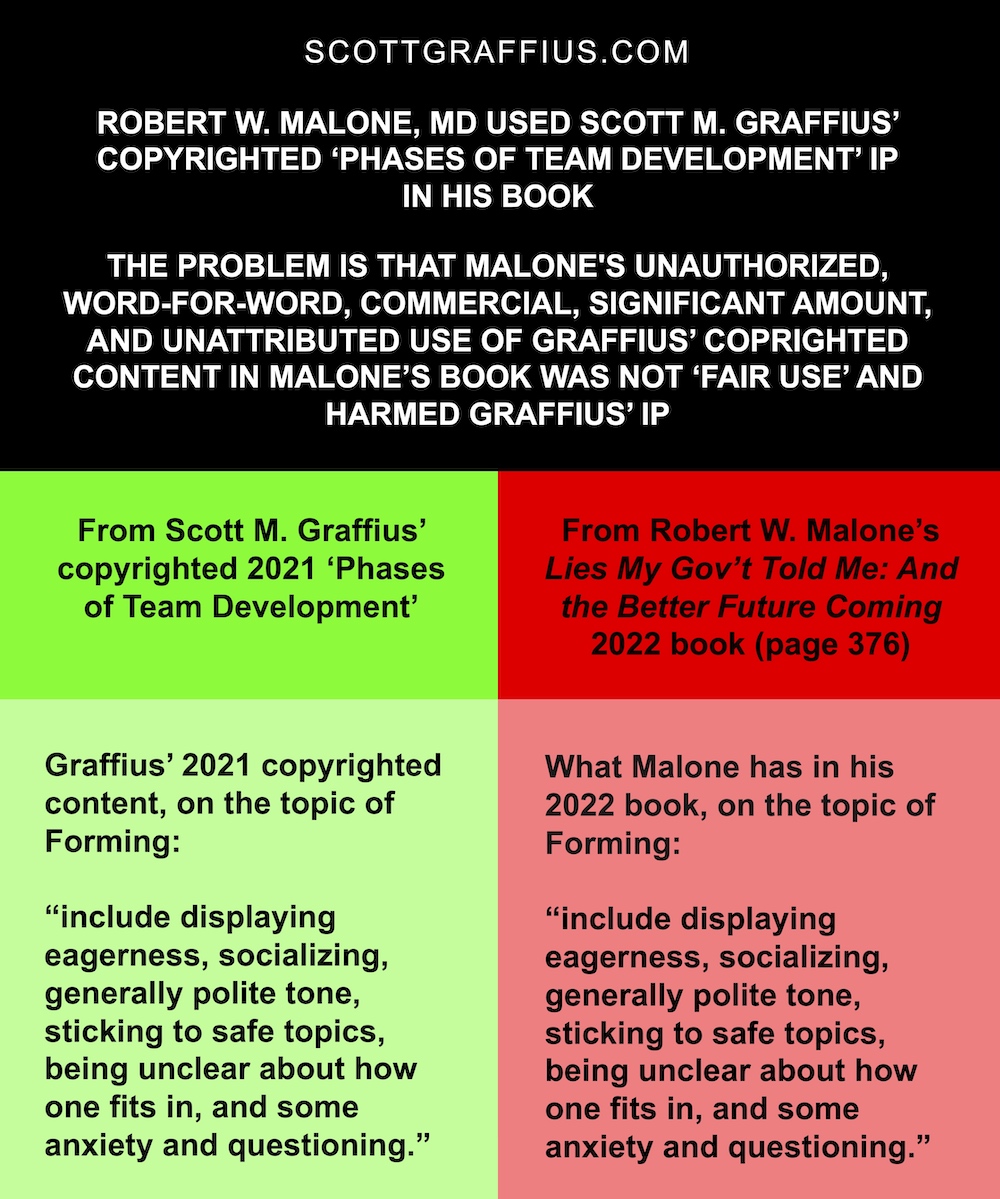
A side-by-side comparison is below. It shows Graffius' 2021 copyrighted content, on the topic of Storming. It also shows what Malone has in his 2022 book on the same topic: Malone uses Graffius' content word-for-word.
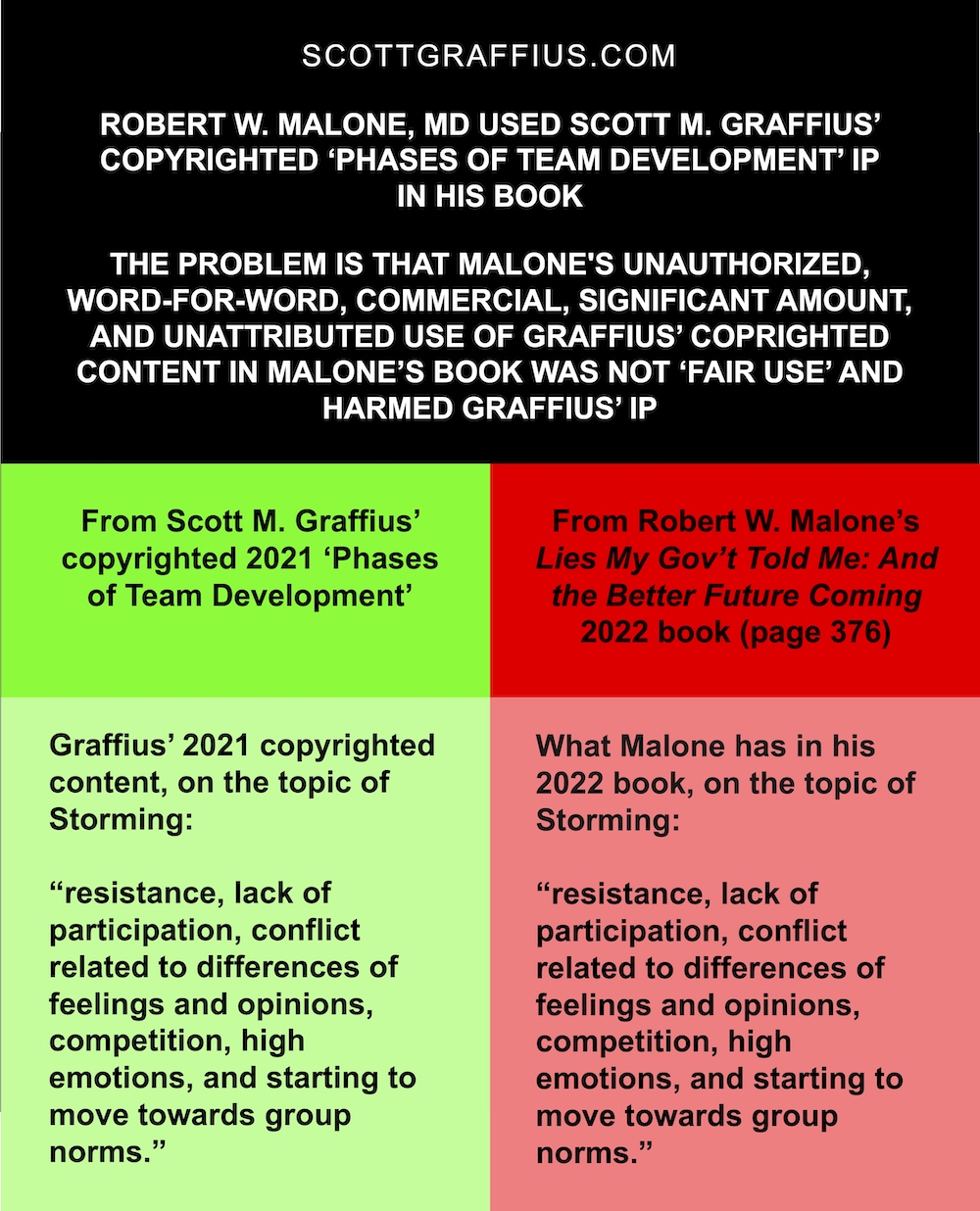
A side-by-side comparison is below. It shows Graffius' 2021 copyrighted content, on the topic of Norming. It also shows what Malone has in his 2022 book on the same topic: Malone uses Graffius' content word-for-word.
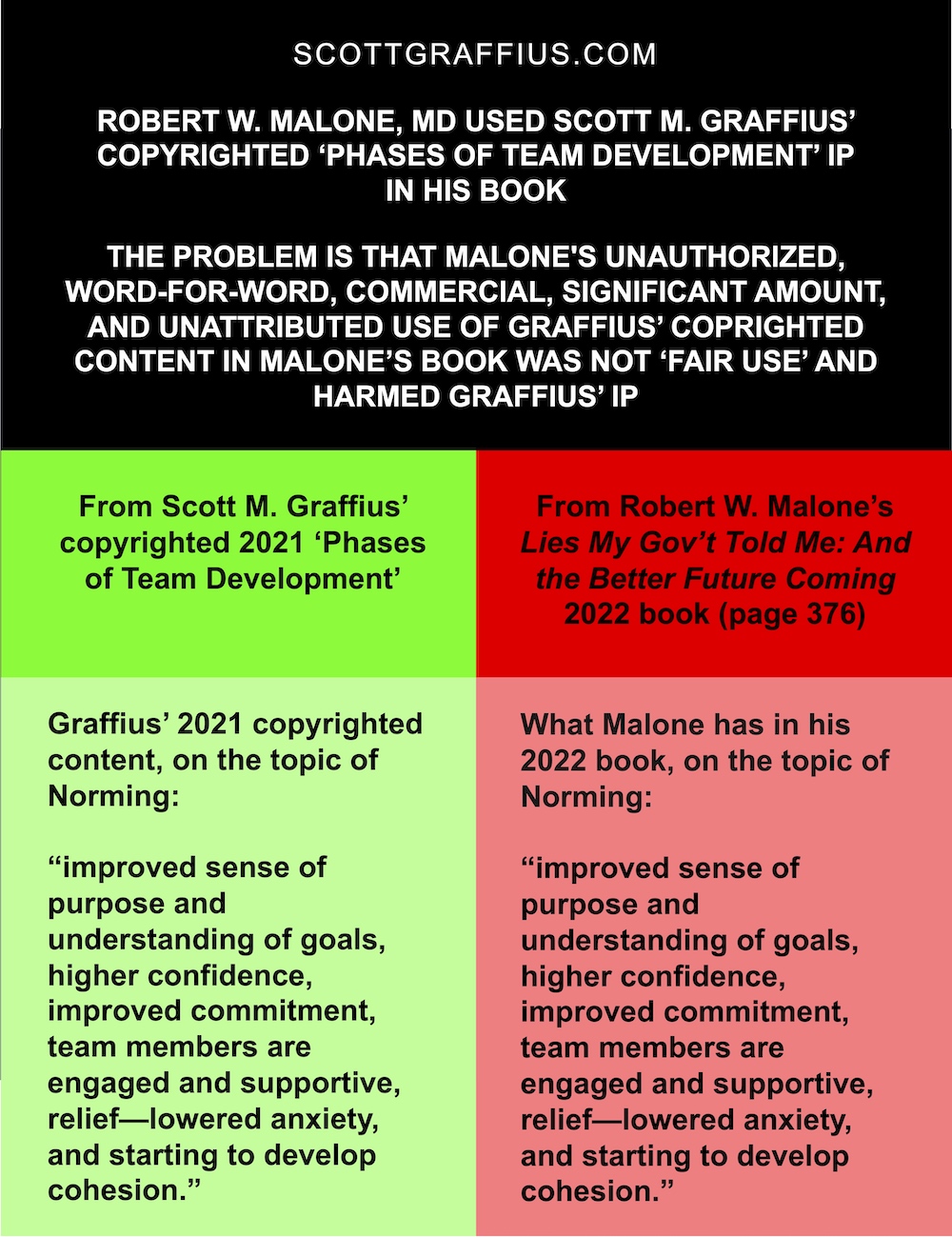
A side-by-side comparison is below. It shows Graffius' 2021 copyrighted content, on the topic of Performing. It also shows what Malone has in his 2022 book on the same topic: Malone uses Graffius' content word-for-word.
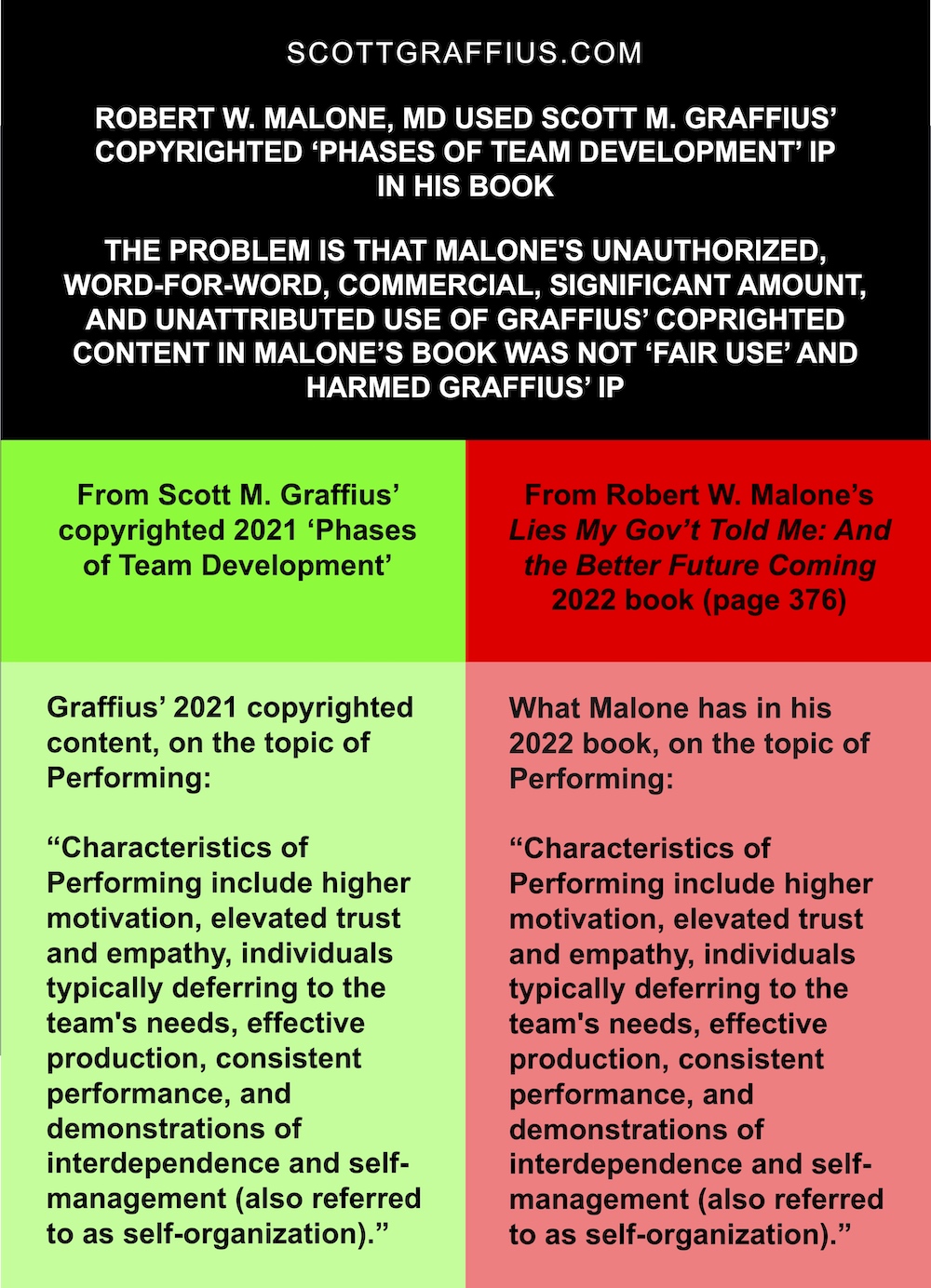
A comparison is also delineated next.
🟢 From Graffius' copyrighted 2021 'Phases of Team Development' IP, his content on Forming includes:
"include displaying eagerness, socializing, generally polite tone, sticking to safe topics, being unclear about how one fits in, and some anxiety and questioning."
🔴 From page 376 of Malone's 2022 book, Forming includes:
"include displaying eagerness, socializing, generally polite tone, sticking to safe topics, being unclear about how one fits in, and some anxiety and questioning."
🟢 From Graffius' copyrighted 2021 'Phases of Team Development' IP, his content on Storming includes:
"resistance, lack of participation, conflict related to differences of feelings and opinions, competition, high emotions, and starting to move towards group norms."
🔴 From page 376 of Malone's 2022 book, Storming includes:
"resistance, lack of participation, conflict related to differences of feelings and opinions, competition, high emotions, and starting to move towards group norms."
🟢 From Graffius' copyrighted 2021 'Phases of Team Development' IP, his content on Norming includes:
"improved sense of purpose and understanding of goals, higher confidence, improved commitment, team members are engaged and supportive, relief—lowered anxiety, and starting to develop cohesion."
🔴 From page 376 of Malone's 2022 book, Norming includes:
"improved sense of purpose and understanding of goals, higher confidence, improved commitment, team members are engaged and supportive, relief—lowered anxiety, and starting to develop cohesion."
🟢 From Graffius' copyrighted 2021 'Phases of Team Development' IP, his content on Performing includes:
"Characteristics of Performing include higher motivation, elevated trust and empathy, individuals typically deferring to the team's needs, effective production, consistent performance, and demonstrations of interdependence and self-management (also referred to as self-organization)."
🔴 From page 376 of Malone's 2022 book, Performing includes:
"Characteristics of Performing include higher motivation, elevated trust and empathy, individuals typically deferring to the team's needs, effective production, consistent performance, and demonstrations of interdependence and self-management (also referred to as self-organization)."
The indisputable proof shows that Malone used Graffius' copyrighted property.

Conclusion
Again, Graffius' copyright ownership details are clearly noted: "Copyright © 2021 Scott M. Graffius. All rights reserved. This material may not be published, broadcast, rewritten or redistributed without the express written permission of Scott M. Graffius."
Robert W. Malone, MD used Scott M. Graffius’ copyrighted ‘Phases of Team Development’ intellectual property in his book and:
- Malone did not request nor receive permission to use Graffius’ intellectual property;
- Malone used Graffius’ copyrighted content word-for-word;
- Malone used Graffius’ intellectual property commercially—in his book;
- Malone used a significant amount of Graffius' copyrighted property; and
- Malone did not cite, reference or otherwise attribute Graffius’ respective IP content to Graffius.
What Malone did was alarming and profoundly concerning. When others have done something not to Malone's liking or what he thought was wrong, Malone has been known to publicly criticize and characterize them as having "no moral compass." Examples are here and here.
Ensuring the integrity of intellectual property is paramount to Graffius. He is resolute in protecting and enforcing his copyrights and other IP rights.
This case is currently open.
Read on for additional information, including:
- About Scott M. Graffius;
- About Robert W. Malone;
- About Book by Robert W. Malone;
- About Copyright and Other Intellectual Property Rights;
- References/Sources; and
- How to Cite This Article.

About Scott M. Graffius

Scott M. Graffius, PMP, SA, CSP-SM, CSP-PO, CSM, CSPO, ITIL, LSSGB is an agile project management practitioner, consultant, creator, multi-award-winning author, and international public speaker. Founder and CEO of Exceptional PPM and PMO Solutions™ and subsidiary Exceptional Agility™, he has generated over $1.9 billion for Global Fortune 500 businesses and other organizations he has served. Graffius and content from his books, talks, workshops, and more have been featured and used by Microsoft, Oracle, Broadcom, Cisco, Gartner, Project Management Institute, IEEE, National Academy of Sciences, U.S. Department of Energy, U.S. National Park Service, U.S. Tennis Association, Yale University, and others. He delights audiences with dynamic and engaging talks and workshops on agile project management, AI, video game development, strategic alignment, the science of high performance teams, and more. To date, he's presented sessions at 91 conferences and other events across 25 countries. His full bio is available here.
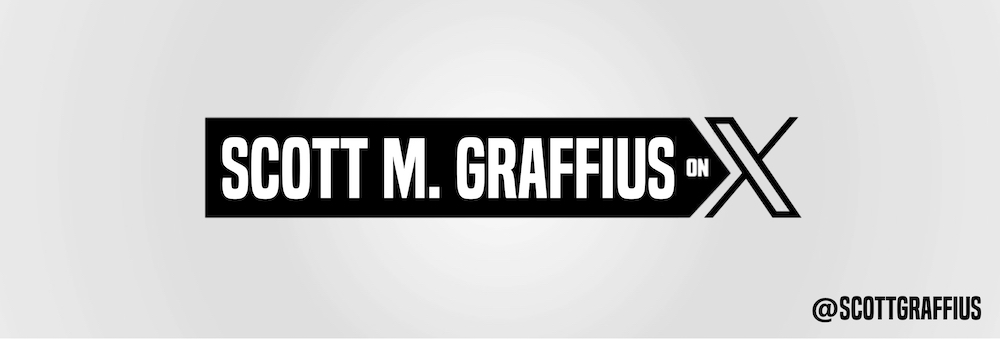
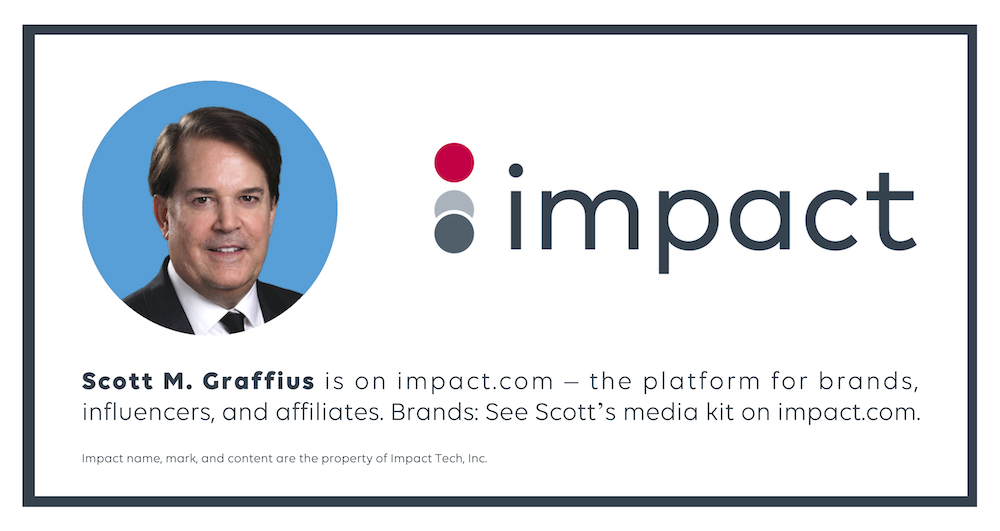

About Robert W. Malone
Robert Wallace Malone is a physician and biochemist. His early work focused on mRNA technology, pharmaceuticals, and drug repurposing research. He's the author of the bestselling book, Lies My Gov't Told Me: And the Better Future Coming. Malone used Scott M. Graffius’ copyrighted ‘Phases of Team Development’ intellectual property in his book. Malone did not request nor receive permission to use Graffius’ intellectual property (IP). Yet, Malone used Graffius’ IP word-for word; he used it commercially—in his book, for his financial gain; he used a significant amount of it; and he did not cite, reference or otherwise attribute Graffius’ respective IP content to Graffius.

About Book by Robert W. Malone
Malone, Robert W. (2022, December). Lies My Gov't Told Me: And the Better Future Coming. ISBN-13: 978-1510773240. New York City, New York: Skyhorse Publishing.

About Copyright and Other Intellectual Property Rights
For copyright/IP infringement cases, it is recommended that you consult a qualified attorney.
Infringement of copyright and other intellectual property (IP) rights is a deplorable act of intellectual theft, displaying a flagrant disregard for professionalism, morality, ethics, and the law. It undermines the hard work and innovation of others and is a disgraceful, unprofessional, dishonest, immoral, unethical, and illegal practice. IP rights are so important that IP theft is a federal crime.
To learn about copyrights, visit the United States Copyright Office’s website at https://www.copyright.gov.
The Reporting Intellectual Property Crime: A Guide for Victims of Copyright Infringement, Trademark Counterfeiting, and Trade Secret Theft publication by the Criminal Division of the U.S. Department of Justice is a good resource.
The Intellectual Property Rights (IPR) Center coordinates the U.S. government’s response to intellectual property crimes. Visit their website at https://www.iprcenter.gov to learn more.
See the References/Sources section for additional information.


References/Sources
Select bibliography:
- Bartlett, Tom (2021, August 12). The Vaccine Scientist Spreading Vaccine Misinformation. The Atlantic. Available at: https://www.theatlantic.com/science/archive/2021/08/robert-malone-vaccine-inventor-vaccine-skeptic/619734/.
- Blaskovic, Andrew K.; Rusk, John-David; Parker, Victor C.; and Payne, Bryson R. (2022). Cybercrime and Intellectual Property Theft: An Analysis of Modern Digital Forensics. In book: Proceedings of the Future Technologies Conference (FTC) 2022, Volume 2. DOI: 10.1007/978-3-031-18458-1_36.
- Dolgin, Elie (2021, September 14). The Tangled History of mRNA Vaccines. Nature. Available at: https://www.nature.com/articles/d41586-021-02483-w.
- Dyer, Jeff; Furr, Nathan; Lefrandt, Chris; and Howell, Taeya (2023, January 17). Innovation Depends on Intellectual Honesty. MIT Sloan Management Review. Available at: https://sloanreview.mit.edu/article/why-innovation-depends-on-intellectual-honesty/.
- Exceptional PPM and PMO Solutions (n.d.). Rate Card for 2023-2024. Available at: https://scottgraffius.com/resources/Exceptional-PPM-and-PMO-Solutions-Rate-Card-for-2023-2024-v23110907.pdf.
- Graffius, Scott M. (2021, January 4). Phases of Team Development (Update for 2021). DOI: 10.13140/RG.2.2.22040.42246.
- Graffius, Scott M. (2021, January 4). Using Bruce Tuckman's Phases of Team Development to Help Your Team Grow and Advance: 2021 Update. Available at: https://www.scottgraffius.com/blog/files/team-21.html.
- Graffius, Scott M. (n.d.). Intellectual Property (IP). Available at: https://www.scottgraffius.com/intellectual-property.html.
- Graffius, Scott M. (n.d.). Public Speaker. Available at: https://scottgraffius.com/publicspeaker.html.
- Hartline, Devlin (2016, September 26). Criminal Copyright Infringement is Crime of "Moral Turpitude." George Mason University Center for Intellectual Property x Innovation Policy. Available at: https://cip2.gmu.edu/2016/09/26/criminal-copyright-infringement-is-crime-of-moral-turpitude/.
- Huppert, Elizabeth; and Levine, Emma (2023, August 31). The Rise of Dishonest Leaders: Causes and Solutions. Academy of Management Perspectives, 37 (3). DOI: 10.5465/amp.2021.0063.
- Kenton, Will (2022, August 23). What Is a Whistleblower? Protections, Law, Importance, and Example. Available at: https://www.investopedia.com/terms/w/whistleblower.asp.
- Malone, Robert W. (2023, August 8). Demonic Nihilism. Substack. Available at: https://rwmalonemd.substack.com/p/demonic-nihilism.
- Malone, Robert W. (2023, January 6). Project Veritas has Broken Pfizer's Gain-of-Function Research Program Wide Open. Substack. Available at: https://rwmalonemd.substack.com/p/project-veritas-has-broken-pfizers.
- Malone, Robert W. (2022, December). Lies My Gov't Told Me: And the Better Future Coming. ISBN-13: 978-1510773240. New York City, New York: Skyhorse Publishing.
- McGregor, Jena. (2017, May 15). More CEOs are Getting Forced Out for Ethical Violations. Washington Post. Available at: https://www.washingtonpost.com/news/on-leadership/wp/2017/05/15/more-ceos-are-getting-forced-out-for-ethics-violations/.
- National Intellectual Property Rights Coordination Center (IPR Center) (n.d.). About the Center. Available at: https://www.iprcenter.gov/about.
- Popomaronis, Tom (2020, August 20). These 11 Famously Disgraced CEOs Have Entered the Reputation Hall of Shame. Entrepreneur. Available at: https://www.entrepreneur.com/business-news/these-11-famously-disgraced-ceos-have-entered-the/354739.
- Rivera, Kristin; and Karlsson, Per-Ola (2017, June 6). CEOs Are Getting Fired for Ethical Lapses More Than They Used To. Harvard Business Review. Available at: https://hbr.org/2017/06/ceos-are-getting-fired-for-ethical-lapses-more-than-they-used-to.
- Smith, Isaac H.; Kouchaki, Maryam; and Wareham, Justin (2021, April 14). The Price Leaders Pay for Cutting Ethical Corners. MIT Sloan Management Review. Available at: https://sloanreview.mit.edu/article/the-price-leaders-pay-for-cutting-ethical-corners/.
- Steffen, Thomas (2019, May 24). For CEOs, Integrity Is the Best Policy. Yale School of Management. Available at: https://insights.som.yale.edu/insights/for-ceos-integrity-is-the-best-policy.
- Sterne, Robert; and Chaplick, Trevor (2005, February). Why Directors Must Take Responsibility for Intellectual Property. Intellectual Asset Management Magazine. Available at: https://www.wsgr.com/PDFSearch/IP_RESPONSIBILTY.pdf.
- Stim, Richard (2024). Patent, Copyright & Trademark: An Intellectual Property Desk Reference (18th Edition). Berkeley, California: Nolo.
- Stubben, Stephen; and Welch Kyle (2018, November 14). Whistleblowers Keep Companies Healthy. Harvard Business Review. Available at: https://hbr.org/2018/11/research-whistleblowers-are-a-sign-of-healthy-companies.
- Thomson Reuters (2022, December 16). Copyright Litigation 101. Available at: https://legal.thomsonreuters.com/blog/copyright-litigation-101/.
- United States Copyright Office (USCO) (n.d.). Can I Use Someone Else's Work? Can Someone Else Use Mine? (Excerpt: "In cases of willful infringement for profit, the U.S. Attorney may initiate a criminal investigation.") Available at: https://copyright.gov/help/faq/faq-fairuse.html.
- United States Copyright Office (USCO) (n.d.). Welcome to the U.S. Copyright Office. Available at: https://www.copyright.gov.
- United States Department of Homeland Security (DHS) (n.d.). Intellectual Property Theft and Commercial Fraud. Available at: https://www.dhs.gov/hsi/investigate/intellectual-property-and-commercial-fraud.
- United States Department of Homeland Security (US DHS) (n.d.). Intellectual Property Rights. Available at: https://www.dhs.gov/intellectual-property-rights.
- United States Department of Justice (DOJ) (n.d.). Reporting Intellectual Property Crime: A Guide for Victims of Copyright Infringement, Trademark Counterfeiting, and Trade Secret Theft (Third Edition). Available at: https://www.justice.gov/criminal/criminal-ccips/file/891011/dl.
- United States Department of Justice (DOJ), Office of the Inspector General (OIG) (n.d.). Whistleblower Rights and Protections. Available at: https://oig.justice.gov/hotline/whistleblower-protection.
- United States Patent and Trademark Office (USPTO) (2013, July 24). Copyright Policy, Creativity, and Innovation in the Digital Economy. Available at: https://www.uspto.gov/sites/default/files/news/publications/copyrightgreenpaper.pdf.
- Vitasek, Kate (2022, November 29). The Role of Honesty in Success (and Why Cutting Corners is a Bad Idea). Forbes. Available at: https://forbes.com/sites/katevitasek/2022/11/29/the-role-of-honesty-in-success-and-why-cutting-corners-is-a-bad-idea/.


How to Cite This Article
Graffius, Scott M. (2024, June 6). Scott M. Graffius' Intellectual Property Was Utilized by Robert W. Malone, MD. Available at: https://scottgraffius.com/blog/files/ip-theft.html.

About Agile Scrum: Your Quick Start Guide with Step-by-Step Instructions
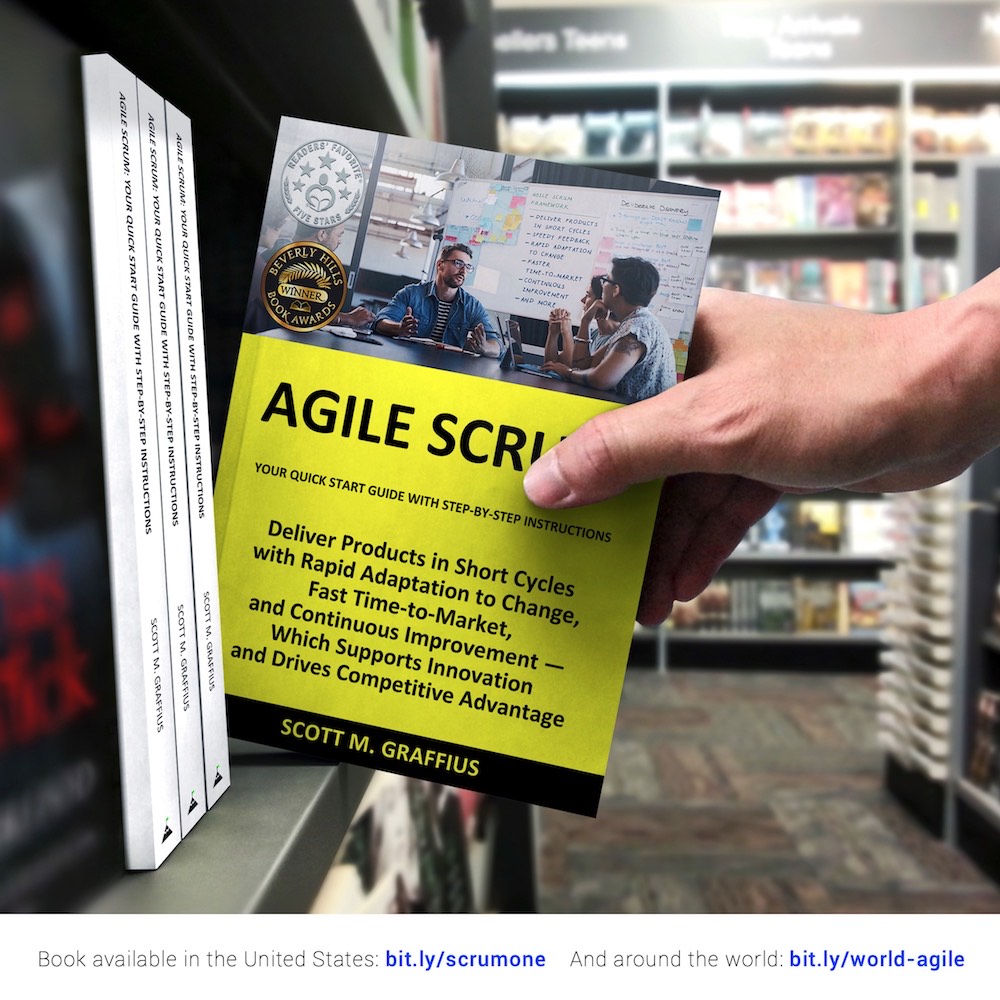
Shifting customer needs are common in today's marketplace. Businesses must be adaptive and responsive to change while delivering an exceptional customer experience to be competitive.
There are a variety of frameworks supporting the development of products and services, and most approaches fall into one of two broad categories: traditional or agile. Traditional practices such as waterfall engage sequential development, while agile involves iterative and incremental deliverables. Organizations are increasingly embracing agile to manage projects, and best meet their business needs of rapid response to change, fast delivery speed, and more.
With clear and easy to follow step-by-step instructions, Scott M. Graffius's award-winning Agile Scrum: Your Quick Start Guide with Step-by-Step Instructions helps the reader:
- Implement and use the most popular agile framework―Scrum;
- Deliver products in short cycles with rapid adaptation to change, fast time-to-market, and continuous improvement; and
- Support innovation and drive competitive advantage.
Hailed by Literary Titan as “the book highlights the versatility of Scrum beautifully.”
Winner of 17 first place awards.
Agile Scrum: Your Quick Start Guide with Step-by-Step Instructions is available in paperback and ebook/Kindle in the United States and around the world. Some links by country follow.
- 🇧🇷 Brazil
- 🇨🇦 Canada
- 🇨🇿 Czech Republic
- 🇩🇰 Denmark
- 🇫🇮 Finland
- 🇫🇷 France
- 🇩🇪 Germany
- 🇬🇷 Greece
- 🇭🇺 Hungary
- 🇮🇳 India
- 🇮🇪 Ireland
- 🇮🇱 Israel
- 🇮🇹 Italy
- 🇯🇵 Japan
- 🇱🇺 Luxembourg
- 🇲🇽 Mexico
- 🇳🇱 Netherlands
- 🇳🇿 New Zealand
- 🇳🇴 Norway
- 🇪🇸 Spain
- 🇸🇪 Sweden
- 🇨🇭 Switzerland
- 🇦🇪 UAE
- 🇬🇧 United Kingdom
- 🇺🇸 United States

About Agile Transformation: A Brief Story of How an Entertainment Company Developed New Capabilities and Unlocked Business Agility to Thrive in an Era of Rapid Change
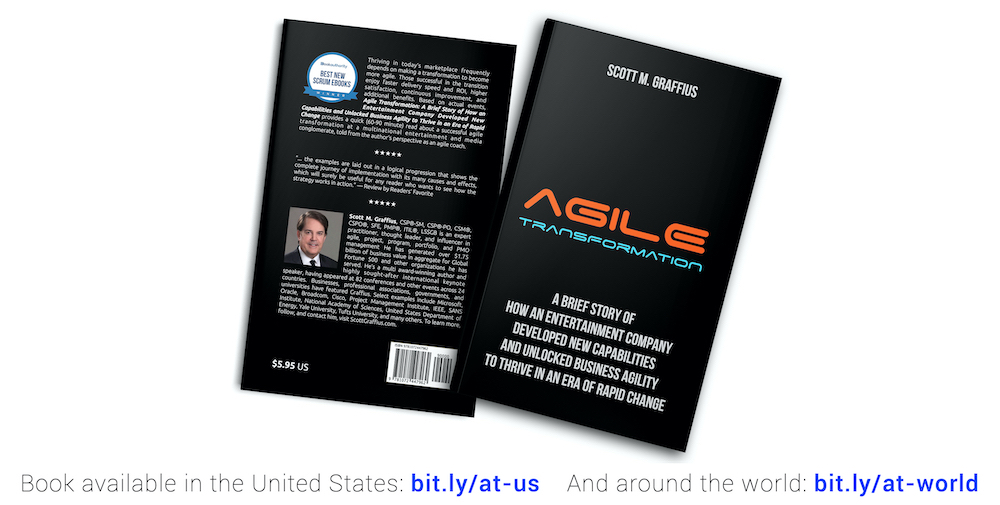
Thriving in today's marketplace frequently depends on making a transformation to become more agile. Those successful in the transition enjoy faster delivery speed and ROI, higher satisfaction, continuous improvement, and additional benefits.
Based on actual events, Agile Transformation: A Brief Story of How an Entertainment Company Developed New Capabilities and Unlocked Business Agility to Thrive in an Era of Rapid Change provides a quick (60-90 minute) read about a successful agile transformation at a multinational entertainment and media company, told from the author's perspective as an agile coach.
The award-winning book by Scott M. Graffius is available in paperback and ebook/Kindle in the United States and around the world. Some links by country follow.
- 🇦🇺 Australia
- 🇦🇹 Austria
- 🇧🇷 Brazil
- 🇨🇦 Canada
- 🇨🇿 Czech Republic
- 🇩🇰 Denmark
- 🇫🇮 Finland
- 🇫🇷 France
- 🇩🇪 Germany
- 🇬🇷 Greece
- 🇮🇳 India
- 🇮🇪 Ireland
- 🇯🇵 Japan
- 🇱🇺 Luxembourg
- 🇲🇽 Mexico
- 🇳🇱 Netherlands
- 🇳🇿 New Zealand
- 🇪🇸 Spain
- 🇸🇪 Sweden
- 🇨🇭 Switzerland
- 🇦🇪 United Arab Emirates
- 🇬🇧 United Kingdom
- 🇺🇸 United States

The short link for this article is https://bit.ly/theft-ip
© Copyright 2024 Scott M. Graffius. All rights reserved. This material may not be published, broadcast, rewritten or redistributed without the express written permission of Scott M. Graffius.

Using Bruce Tuckman's Phases of Team Development
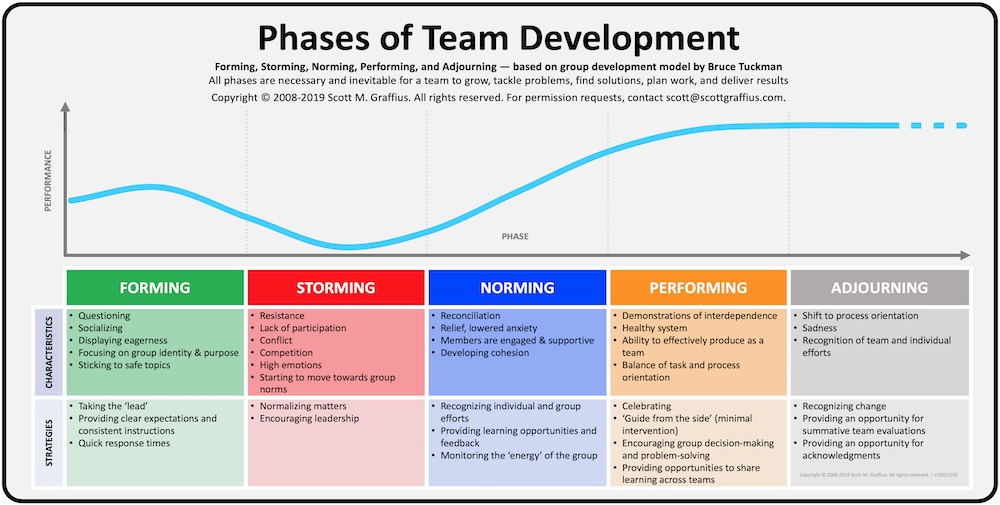
High Resolution Files of Visual: See Permission Request Information section

If there are any supplements or updates to this article after the date of publication, they will appear in the Post-Publication Notes section at the end of this article.

Teams go through stages of development, and Bruce Tuckman established a popular framework on the subject. According to Tuckman, all phases—Forming, Storming, Norming, Performing, and Adjourning—are necessary for the team to grow, tackle problems, find solutions, plan work, and deliver results. This article provides a brief overview of the model, including descriptions and strategies for each phase.

1. Forming
Characteristics of Forming include questioning, socializing, displaying eagerness, focusing on group identity and purpose, and sticking to safe topics. Strategies for this phase include taking the 'lead,' providing clear expectations and consistent instructions, and quick response times.
2. Storming
Traits of Storming include resistance, lack of participation, conflict, competition, high emotions, and moving towards group norms. Strategies for this stage include normalizing matters and encouraging leadership.
3. Norming
Features of Norming include reconciliation, relief, lowered anxiety, members are engaged and supportive, and developing cohesion. Strategies for this phase include recognizing individual and group efforts, providing learning opportunities and feedback, and monitoring the 'energy' of the group.
4. Performing
Characteristics of Performing include demonstrations of interdependence, healthy system, ability to effectively produce as a team, and balance of task and process orientation. Strategies for this stage include celebrating, 'guide from the side' (minimal intervention), encouraging group decision-making and problem-solving, and providing opportunities to share learning across teams.
5. Adjourning
Traits of Adjourning include a shift to process orientation, sadness, and recognition of team and individual efforts. Strategies for this phase include recognizing change, providing an opportunity for summative team evaluations, and providing an opportunity for acknowledgments.

The illustration summarizes the above information—and it shows how performance fluctuates as teams move through each phase. This information may be helpful for looking at your team.

Permission Request Information
To request permission to use the 'Phases of Team Development' visual, contact Scott M. Graffius. If approved, high resolution JPG and PNG image files will be provided, subject to terms and conditions.


Post-Publication Notes
Update on 7 January 2025
Scott M. Graffius periodically updates his 'Phases of Team Development' work. The most current edition is here.

© Copyright 2018 Scott M. Graffius. All rights reserved. This material may not be published, broadcast, rewritten or redistributed without the express written permission of Scott M. Graffius.

The Spanish Version of the 'Phases of Team Development' -- 'Fases del Desarrollo del Equipo' -- Now Available
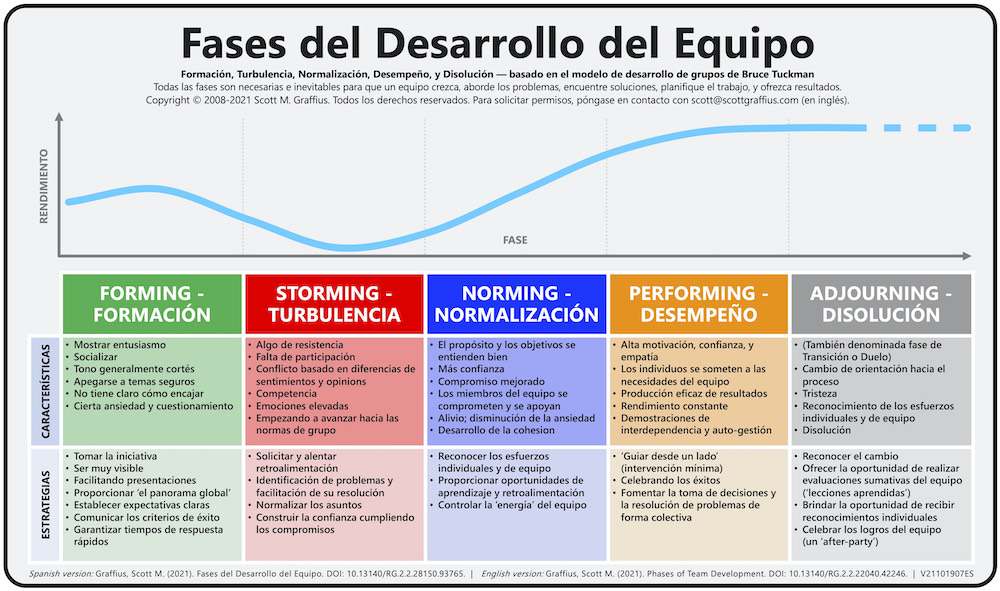
For permission requests and high resolution images, see below.
Phases of Team Development
Teams go through phases of development, and Dr. Bruce Tuckman established a popular and durable framework on the subject. According to Dr. Tuckman, all phases—Forming, Storming, Norming, Performing, and Adjourning—are necessary for teams to grow, tackle problems, find solutions, plan work, and deliver results.
Agile project management thought leader, influencer, and author Scott M. Graffius developed a related custom illustration, Phases of Team Development. It highlights the performance level, characteristics, and proven strategies for each of the phases. Project Managers, Scrum Masters, Agile Coaches, DevOps Leads, and other professionals can apply the information to help handle challenges or issues experienced by teams. By doing so, they’ll advance the teams' happiness and productivity, as well as the teams' (and their own) success. Graffius updates the content periodically.
Graffius translated his 'Phases of Team Development' intellectual property into Spanish: 'Fases del Desarrollo del Equipo' — Formación (Forming), Turbulencia (Storming), Normalización (Norming), Desempeño (Performing), and Disolución (Adjourning).
Sometimes, different words are used for the phases. For example, 'Storming' is translated as 'Turbulencia' — but 'Conflicto' or other alternatives are occasionally used instead. This article and the related Fases del Desarrollo del Equipo illustration incorporate the selections for phases referenced in the Spanish version of the Project Management Institute's A Guide to the Project Management Body of Knowledge. The five phases in Spanish are: Formación, Turbulencia, Normalización, Desempeño, y Disolución.
More on the Spanish version follows.


Permission Request Information
For permission requests to use Graffius' 'Fases del Desarrollo del Equipo' visual, contact Scott M. Graffius in English. If your request is approved, Graffius will give you an authorization/license and, if applicable, high-resolution file(s) of the visual.


How to Cite This Article
Graffius, Scott M. (2021, October 19). The Spanish Version of the 'Phases of Team Development' -- 'Fases del Desarrollo del Equipo' -- Now Available. Available at: https://scottgraffius.com/blog/files/equipo-21.html.
How to Cite Only the Visual
Graffius, Scott M. (2021). Fases del Desarrollo del Equipo. Digital Object Identifier (DOI): 10.13140/RG.2.2.28150.93765. DOI link: https://dx.doi.org/10.13140/RG.2.2.28150.93765.

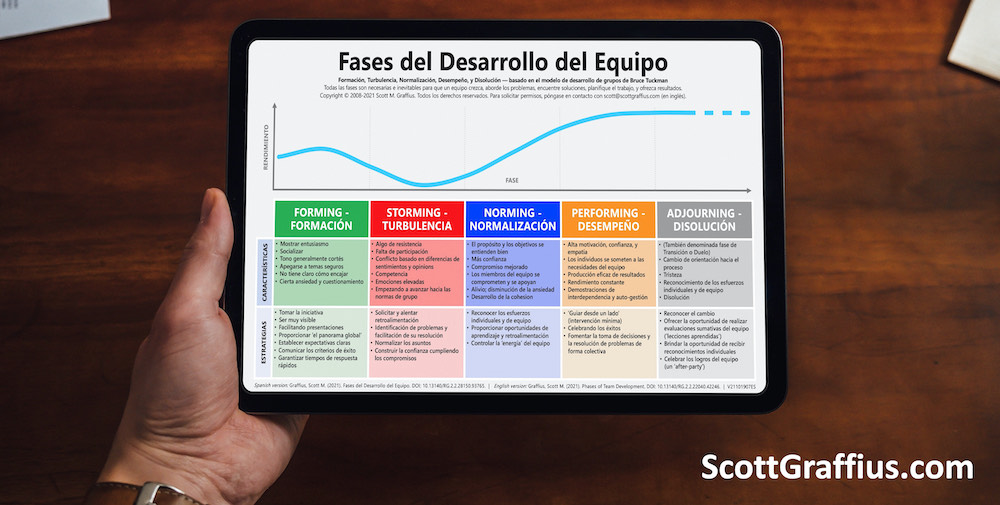
For information on the English version of the Phases of Team Development, visit here.

About Scott M. Graffius

Scott M. Graffius, PMP, CSP-SM, CSP-PO, CSM, CSPO, SFE, ITIL, LSSGB is an agile project management practitioner, consultant, award-winning author, and international speaker. He has generated over one billion dollars of business value in aggregate for the organizations he has served. Graffius is the founder, CEO, and principal consultant at Exceptional PPM and PMO Solutions™ and subsidiary Exceptional Agility™, based in Los Angeles, California. His expertise spans project, program, portfolio, and PMO leadership inclusive of agile, traditional, and hybrid approaches. Content from his books, workshops, speaking engagements, and more have been featured and used by businesses, governments, and universities including Gartner, Microsoft, Deloitte, Oracle, Cisco, Ford, Qantas, Atlassian, Bayer, the National Academy of Sciences, the United States Department of Energy, the United States Army, Project Management Institute, the IEEE, the New Zealand Ministry of Education, Tufts University, Texas A&M University, Virginia Tech, Penn State, Warsaw University of Technology, University of Waterloo, Loughborough University London, and others. Graffius has spoken at 58 conferences and other events around the world, including Armenia, Australia, Brazil, Canada, Czech Republic, Finland, France, Germany, Greece, India, Ireland, Lithuania, Luxembourg, Netherlands, New Zealand, Sweden, United Kingdom, and the United States. Thinkers360 named Graffius a global top thought leader and influencer in four domains: Agile, Change Management, Digital Transformation, and GovTech.
His full bio is available here.
Connect with Scott on:
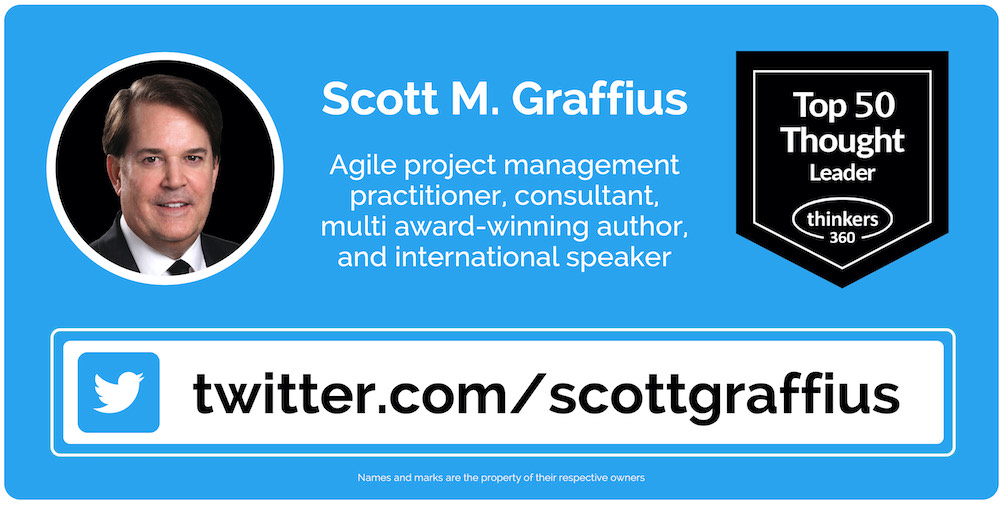


Copyright
Copyright © Scott M. Graffius. All rights reserved. This material may not be published, broadcast, rewritten or redistributed without the express written permission of Scott M. Graffius.

Bruce Tuckman’s Model (Forming, Storming, Norming, Performing, and Adjourning) is Highly Relevant and Beneficial, But It Doesn’t Please Everyone
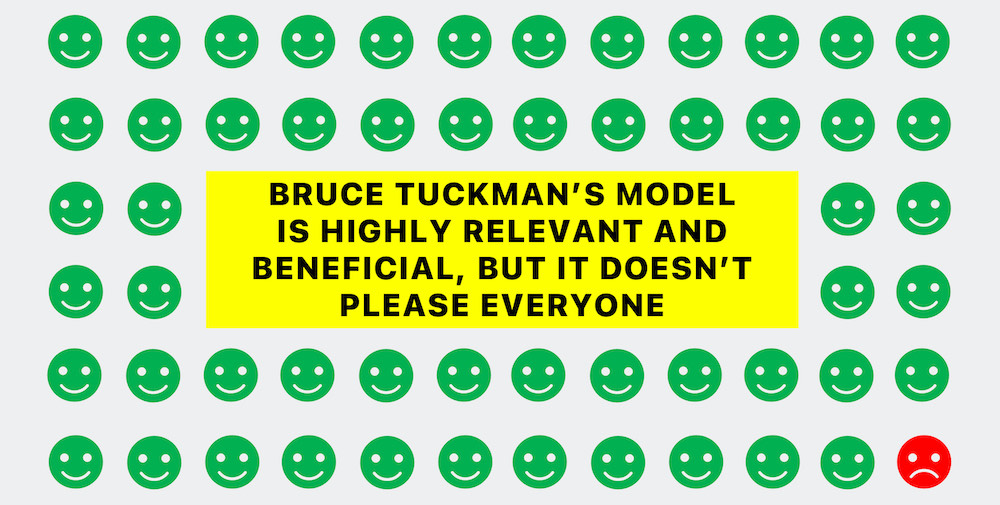
Names and certain identifying details are not included or are redacted (replaced with black rectangles) to respect privacy.

The Question
Steve Jobs famously said: “You can please some of the people some of the time” in response to a tough question at the 1997 Worldwide Developer Conference. The following experience reminded me of that quote.
In a recent workshop on team leadership, a student asked me, “What do you think about █████████’s disregard of Tuckman’s model?” (Note: The student was referring to a person who's a leader in Agile and Scrum. That person's name is redacted, subsequently referred to as “critic.” His or her stance seems to be the rare exception.) I’m detailing my response here.

The Background for Context
Bruce Tuckman (Ph.D. in Psychology from Princeton University) conducted extensive research on group dynamics, and he published a related model in 1965. At that time, the model included four phases: forming, storming, norming, and performing. However, Dr. Tuckman subsequently determined that adjourning was so important that he (with Mary Ann Jensen) updated his model in 1977 to add adjourning as the fifth phase. In the context of this discussion, phases and stages may be used interchangeably; and group dynamics is also referred to as group development, team dynamics, and team development.
Dr. Tuckman’s model has stood the test of time because it remains highly relevant and beneficial. Since his related work was published, it has been supported by additional peer-reviewed research. And it has received recommendations and coverage from leading organizations including Google, Harvard Business Review, IEEE, Forbes, MIT, Fast Company, NASA, Microsoft, TNW, Project Management Institute, Scrum Alliance, Scrum.org, Association for Project Management, Gartner, CIO, Spotify, Imperial College London, RAND Corporation, Princeton University, Software Engineering Institute, University of Edinburgh, Cisco, KPMG, Warsaw University of Technology, DevOps Institute, American Express, SANS Institute, Zurich University, SAP, ViacomCBS, Oxford University, American Management Association, AT&T, University of Southern California, IBM, and many others.
While Tuckman’s model is durable and relevant, no model is perfect. It can be helpful to understand any concerns or limitations—with an emphasis on any which are independently verifiable and are published in peer-reviewed studies.
I related to the student that there are critics of Tuckman’s model, but that they’re few—and I’m not familiar with criticisms meeting the aforementioned rigor of being independently verifiable with such findings appearing in peer-reviewed studies.
I said, for example, that I was already aware of the critic's stated disregard of Bruce Tuckman’s model. I previously looked into the situation to learn more. My research and findings follow.

The Research and Findings
In a █████ communication, the critic said “I never liked ...” referring to Tuckman’s model. He or she went on to state that his or her reason was that “Gersick tested it ...” (Tuckman’s model) and “...it’s not true.” The critic included a link to the paper which was the basis for his or her stance. The link goes to the following paper:
Curtis, B., Walz, D., and Elam, J. (1990, October 1). Studying the Process of Software Design Teams. In: ISPW '90: Proceedings of the 5th International Software Process Workshop on Experience with Software Process Models, pages 52-53.
The critic said that “Gersick tested it” and pointed to the paper. However, Gersick is not an author on the paper. Still, I reviewed the content to see what, if anything, the authors (Curtis, Walz, and Elam) said about Tuckman, Tuckman’s model, and/or Gersick. Here’s what I found.
On Tuckman: Tuckman was not mentioned anywhere in the paper.
On Tuckman’s model (a reference to forming, storming, norming, performing, and/or adjourning): The following appears: “Rather than the standard group process of form-storm-norm-perform, Gersick suggested there came a point halfway through a group project where the team faced its lack of progress.”
On Gersick: Gersick was mentioned four times: “Gersick (1988) observed such a point in a study of project teams” and “Rather than the standard group process of form-storm-norm-perform, Gersick suggested there came a point halfway through a group project where the team faced its lack of progress” and “Gersick's model may be more descriptive of temporary teams that are asked to perform tasks out of their area of expertise” and (a reference citation) “Gersick, C.J.G. (1988). Time and Transition in Work Teams: Toward a New Model of Work Development. Academy of Management Journal, 31 (1), 9-41.”
The critic said that “Gersick tested it” ... and “...it’s not true.” However, as a summary of the above, Gersick is not the author of the paper, and the authors (Curtis, Walz, and Elam) commented that Tuckman’s model did not seem to work for one project. On that one project, “Rather than ... form-storm-norm-perform ... there came a point halfway through ... where the team faced its lack of progress.” That does not negate Tuckman’s model. While teams typically move through the different phases, it’s entirely possible for a team to face a lack of progress at a given time. Phases don’t progress magically; the phase is a marker of the team’s current progress and effectiveness. The critic said that “Gersick tested it” ... and “...it’s not true.” The research specified by the critic did not state that it tested Tuckman’s model and found it to not be true. The research specified by the critic does not support his or her stand. Nevertheless, I dug deeper.
The above paper by Curtis, Walz, and Elam includes Gersick’s work as a reference. I found and carefully reviewed Gersick’s respective research. Again, it’s: “Gersick, C.J.G. (1988). Time and Transition in Work Teams: Toward a New Model of Work Development. Academy of Management Journal, 31 (1), 9-41.” I looked to see what Gersick said about Tuckman or his model. Here’s what I discovered.
Tuckman was mentioned five times: “There was no initial ‘storming’ (Tuckman, 1965; Tuckman & Jensen, 1977) in this group” and “First, as Tuckman pointed out in 1965 and others have noted up to the present (Hare, 1976; McGrath, 1986; Poole, 1983b), they offer snapshots of groups at different points in their life-spans but say little about the mechanisms of change” and “Since all teams were doing construction work on their projects during phase 2, similar to ‘performing’ in Tuckman’s (1965) synthesis, it was a time when teams were more similar to both each other and to the traditional model than they were in phase 1” and (a reference citation) “Tuckman, B. 1965. Developmental Sequence in Small Groups. Psychological Bulletin, 63: 384-399” and (another reference citation) “Tuckman, B., & Jensen, M. 1977. Stages of Small-Group Development. Group and Organizational Studies, 2: 419-427.”
The critic said that “Gersick tested it” ... and “...it’s not true.” However, as a summary of the above, Gersick did not state that Tuckman’s model was tested and found to not be true. For example, Gersick did not say that there was no storming; rather, it was qualified as “no initial ‘storming.’” Furthermore, and most importantly, Gersick provided the following caveat: “This study must be interpreted with caution. It was hypothesis-generating, not hypothesis-testing; the model is expressly provisional.” According to Gersick, the research did not test or prove anything.
The research—both the paper pointed to by the critic, and the reference study—does not supply the stated basis for the critic's stance.

The Conclusion with the Answer
In conclusion, Tuckman’s model has stood the test of time because it remains highly relevant and beneficial. No model is perfect, and it is helpful to understand any concerns or limitations—with an emphasis on any which are independently verifiable and are published in peer-reviewed studies.
My answer to the student’s question (“What do you think about █████████’s disregard of Tuckman’s model?”) was that I diligently reviewed the facts and neither the paper linked to by the critic, nor the other study cited by the paper, support the critic’s assertion that “Gersick tested it ...” (Tuckman’s model) and “...it’s not true.”
Maybe—or maybe not—the critic's view of the model is because of a misunderstanding regarding the research. Or maybe—or maybe not—there's another reason. As Steve Jobs said, “You can please some of the people some of the time.”



The Phases of Team Development Visual
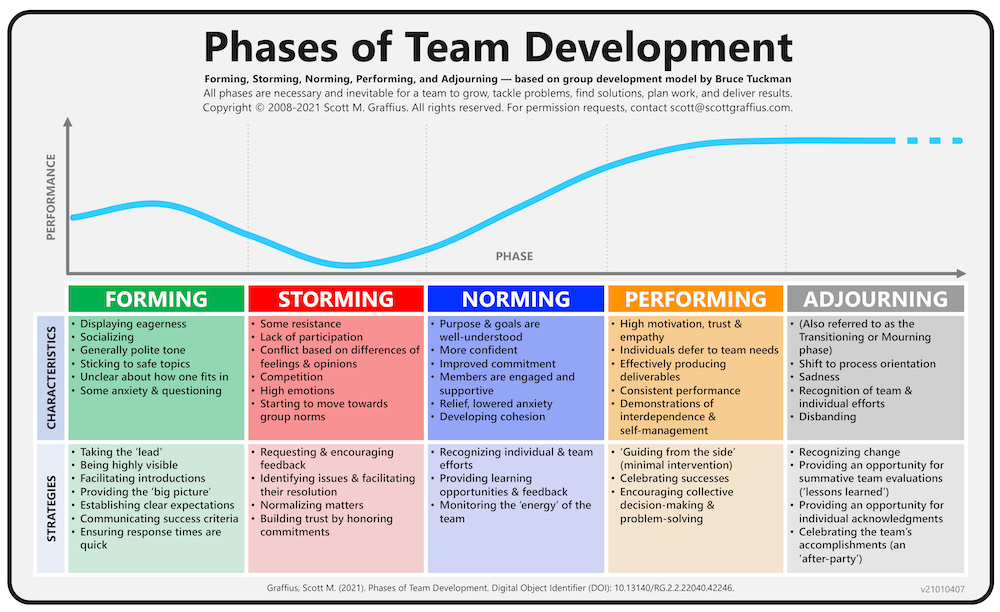
🔥 Update: The newest version is here.

About Scott M. Graffius

Scott M. Graffius, PMP, CSP-SM, CSP-PO, CSM, CSPO, SFE, ITIL, LSSGB is an agile project management practitioner, consultant, award-winning author, and international speaker. He has generated over 1.75 billion dollars of business value in aggregate for the organizations he has served. Graffius is the founder, CEO, and principal consultant at Exceptional PPM and PMO Solutions™ and subsidiary Exceptional Agility™, based in Los Angeles, California. His expertise spans project, program, portfolio, and PMO leadership inclusive of agile, traditional, and hybrid approaches. Content from his books (Agile Scrum and Agile Transformation), workshops, speaking engagements, and more have been featured and used by businesses, governments, and universities including Gartner, Microsoft, Deloitte, Oracle, Cisco, Ford, Qantas, Atlassian, Bayer, the National Academy of Sciences, the United States Department of Energy, the United States Army, Project Management Institute, the IEEE, the New Zealand Ministry of Education, Tufts University, Texas A&M University, Virginia Tech, Penn State, Warsaw University of Technology, University of Waterloo, Loughborough University London, and others. Graffius has spoken at 58 conferences and other events around the world, including Armenia, Australia, Brazil, Canada, Czech Republic, Finland, France, Germany, Greece, India, Ireland, Lithuania, Luxembourg, Netherlands, New Zealand, Sweden, United Kingdom, and the United States. Thinkers360 named Graffius a global top thought leader and influencer in four domains: Agile, Change Management, Digital Transformation, and GovTech.
His full bio is available here.
Connect with Scott on:


About Agile Scrum: Your Quick Start Guide with Step-by-Step Instructions

Shifting customer needs are common in today's marketplace. Businesses must be adaptive and responsive to change while delivering an exceptional customer experience to be competitive.
There are a variety of frameworks supporting the development of products and services, and most approaches fall into one of two broad categories: traditional or agile. Traditional practices such as waterfall engage sequential development, while agile involves iterative and incremental deliverables. Organizations are increasingly embracing agile to manage projects, and best meet their business needs of rapid response to change, fast delivery speed, and more.
With clear and easy to follow step-by-step instructions, Scott M. Graffius's award-winning Agile Scrum: Your Quick Start Guide with Step-by-Step Instructions helps the reader:
- Implement and use the most popular agile framework―Scrum;
- Deliver products in short cycles with rapid adaptation to change, fast time-to-market, and continuous improvement; and
- Support innovation and drive competitive advantage.
Hailed by Literary Titan as “the book highlights the versatility of Scrum beautifully.”
Winner of 17 first place awards.
Agile Scrum: Your Quick Start Guide with Step-by-Step Instructions is available in paperback and ebook/Kindle in the United States and around the world. Some links by country follow.
- 🇧🇷 Brazil
- 🇨🇦 Canada
- 🇨🇿 Czech Republic
- 🇩🇰 Denmark
- 🇫🇮 Finland
- 🇫🇷 France
- 🇩🇪 Germany
- 🇬🇷 Greece
- 🇭🇺 Hungary
- 🇮🇳 India
- 🇮🇪 Ireland
- 🇮🇱 Israel
- 🇮🇹 Italy
- 🇯🇵 Japan
- 🇱🇺 Luxembourg
- 🇲🇽 Mexico
- 🇳🇱 Netherlands
- 🇳🇿 New Zealand
- 🇳🇴 Norway
- 🇪🇸 Spain
- 🇸🇪 Sweden
- 🇨🇭 Switzerland
- 🇦🇪 UAE
- 🇬🇧 United Kingdom
- 🇺🇸 United States

About Agile Transformation: A Brief Story of How an Entertainment Company Developed New Capabilities and Unlocked Business Agility to Thrive in an Era of Rapid Change

Thriving in today's marketplace frequently depends on making a transformation to become more agile. Those successful in the transition enjoy faster delivery speed and ROI, higher satisfaction, continuous improvement, and additional benefits.
Based on actual events, Agile Transformation: A Brief Story of How an Entertainment Company Developed New Capabilities and Unlocked Business Agility to Thrive in an Era of Rapid Change provides a quick (60-90 minute) read about a successful agile transformation at a multinational entertainment and media company, told from the author's perspective as an agile coach.
The award-winning book by Scott M. Graffius is available in paperback and ebook/Kindle in the United States and around the world. Some links by country follow.
- 🇦🇺 Australia
- 🇦🇹 Austria
- 🇧🇷 Brazil
- 🇨🇦 Canada
- 🇨🇿 Czech Republic
- 🇩🇰 Denmark
- 🇫🇮 Finland
- 🇫🇷 France
- 🇩🇪 Germany
- 🇬🇷 Greece
- 🇮🇳 India
- 🇮🇪 Ireland
- 🇯🇵 Japan
- 🇱🇺 Luxembourg
- 🇲🇽 Mexico
- 🇳🇱 Netherlands
- 🇳🇿 New Zealand
- 🇪🇸 Spain
- 🇸🇪 Sweden
- 🇨🇭 Switzerland
- 🇦🇪 United Arab Emirates
- 🇬🇧 United Kingdom
- 🇺🇸 United States

The short URL for this article is: https://bit.ly/tckmn
Posts related to this article are on Twitter and Instagram (via @AgileScrumGuide)
© Copyright 2021 Scott M. Graffius. All rights reserved. This material may not be published, broadcast, rewritten or redistributed without the express written permission of Scott M. Graffius.

Aerospace Company Deimos Space Featured Scott M. Graffius' 'Phases of Team Development' Work
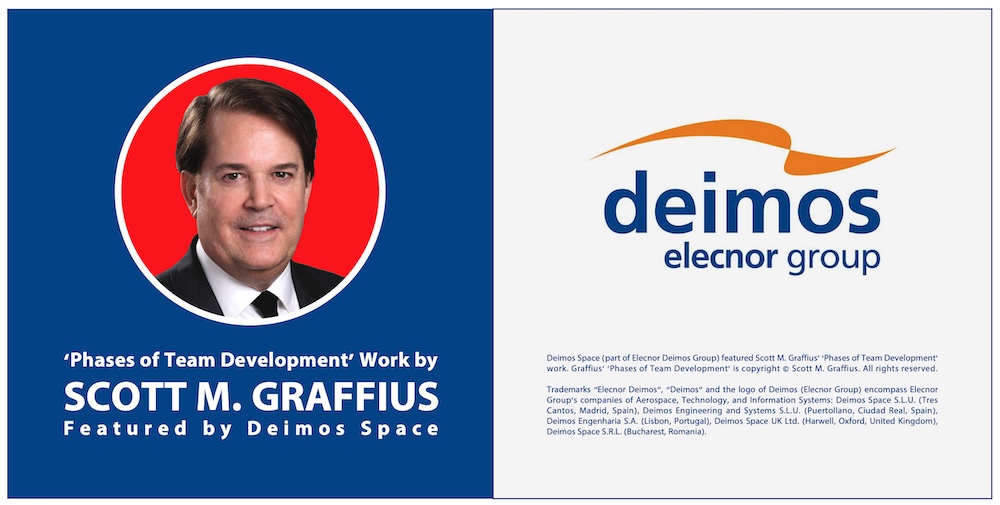
Informed by the research of Bruce W. Tuckman and Mary Ann C. Jensen, over 100 subsequent studies, and Scott M. Graffius' first-hand professional experience with, and analysis of, team leadership and performance, Graffius created his ‘Phases of Team Development’ as a unique perspective and visual conveying the five phases of team development — Forming, Storming, Norming, Performing, and Adjourning — inclusive of a graph showing how performance varies by phase, as well as the characteristics and strategies for each phase.
With permission/a license from Graffius, his ‘Phases of Team Development’ work is used by businesses, professional associations, governments, and universities around the world. Examples include Yale University, IEEE, Torrens University Australia, UK Sports Institute, Adobe, Amsterdam Public Health Research Institute, Academic Cooperation Association, Boston University, U.S. National Park Service, Bayer, Hasso Plattner Institute (Hasso-Plattner-Institut für Digital Engineering GmbH), Singapore University of Social Sciences, New Zealand Government, University of Galway Ireland, and many more.
Deimos Space, a leading Aerospace company, was added to the list.
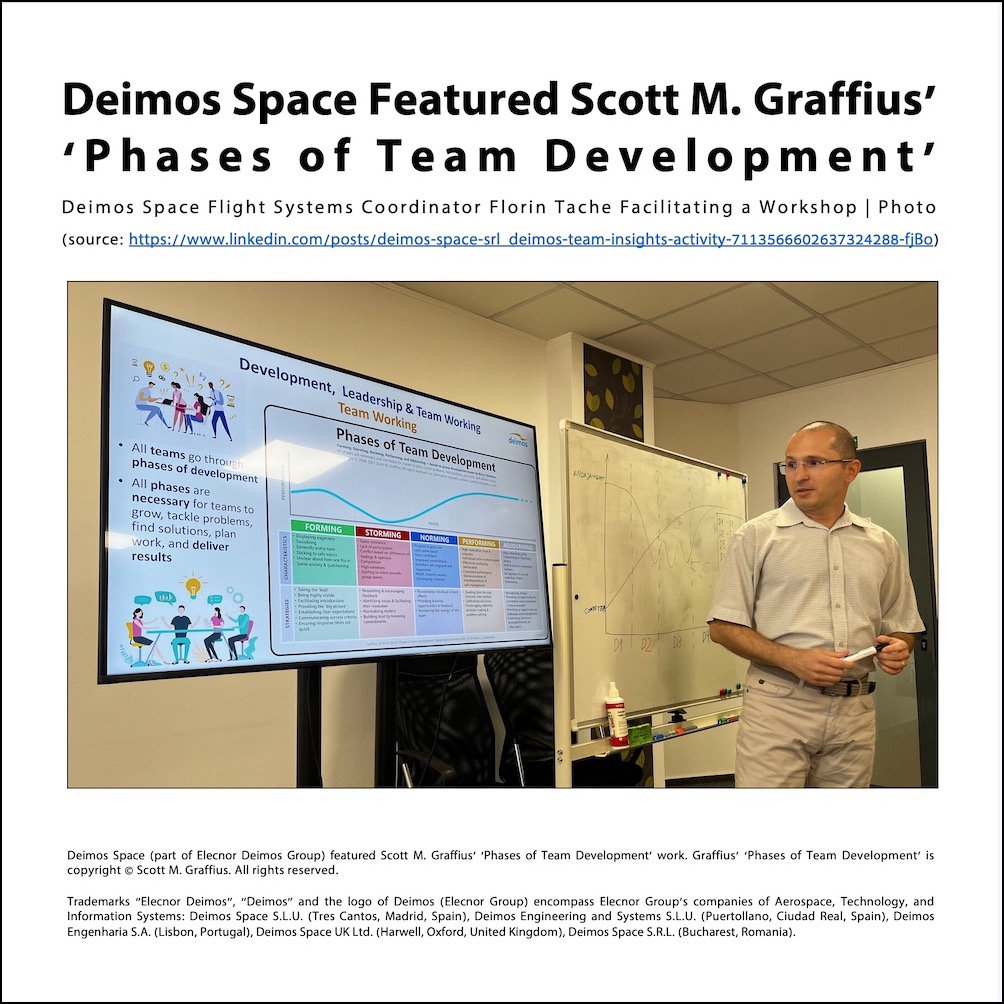
As shown above, Deimos Space featured Scott M. Graffius' 'Phases of Team Development' work during a training.
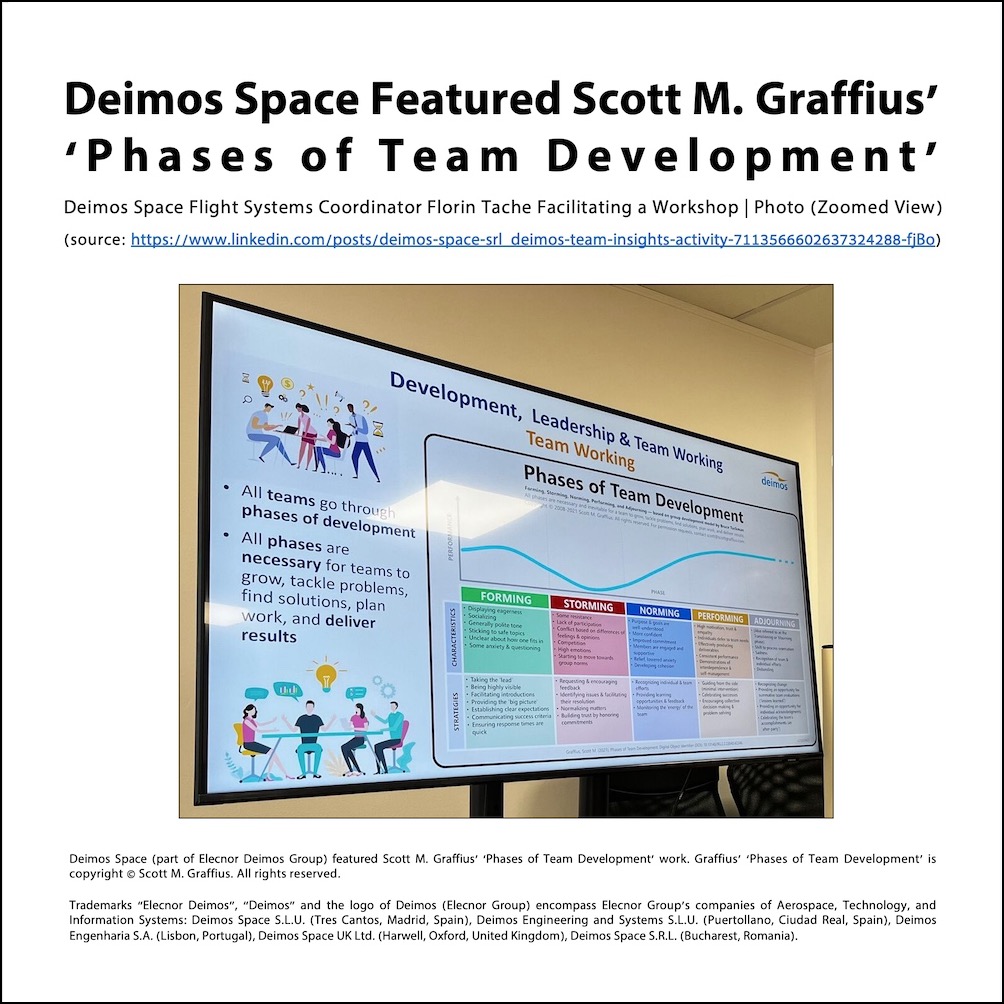
A zoomed-in version of the photo is shown above.
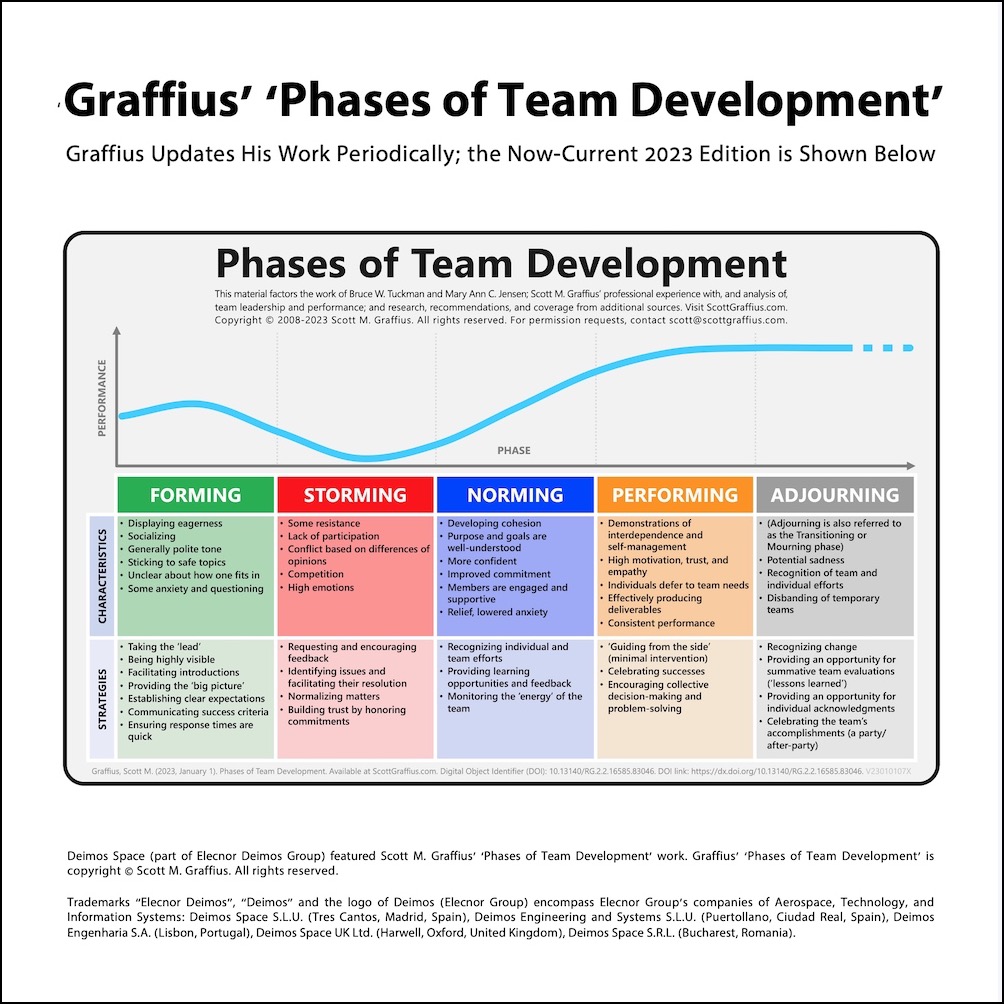
Graffius periodically updates his work. The most current (2023) edition of his 'Phases of Team Development' visual is shown above. Select here for details.
About Deimos Space
Deimos Space (part of Elecnor Deimos Group) is a leading company in the European Aerospace sector with an extensive portfolio of projects and solutions employed at the European Space Agency (ESA) and other organizations. Its expertise includes Satellite Navigation Systems, Space Situational Awareness, Mission Analysis and Design, Guidance Navigation and Control, Ground Segment Systems, and more. Visit their website — here — to learn more.




About Scott M. Graffius
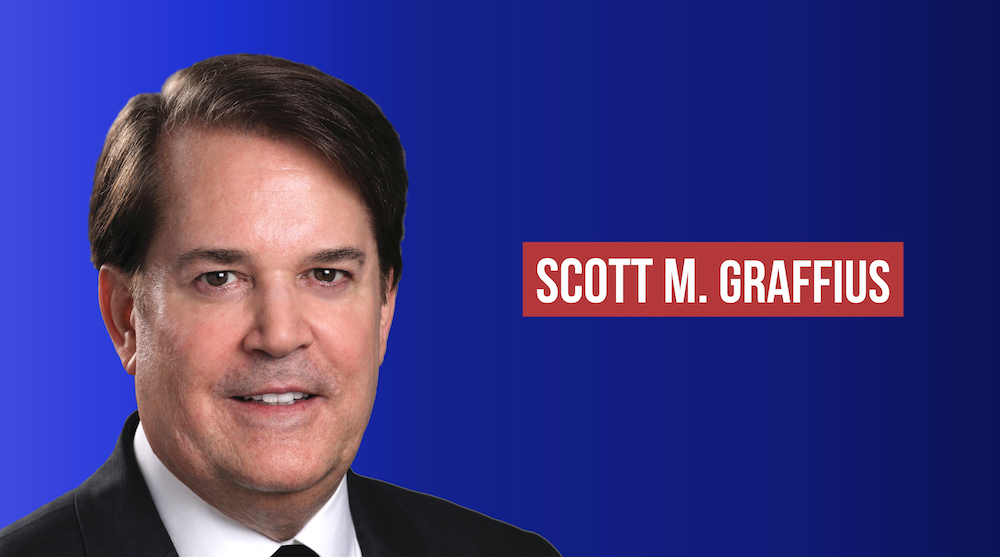
Scott M. Graffius, PMP, SA, CSP-SM, CSP-PO, CSM, CSPO, SFE, ITIL, LSSGB is an agile project management practitioner, consultant, multi-award-winning author, and international keynote speaker. He is the Founder of Exceptional PPM and PMO Solutions™ and subsidiary Exceptional Agility™. He has generated over $1.9 billion of business value in aggregate for Global Fortune 500 businesses and other organizations he has served. Graffius and content from his books, talks, workshops, and more have been featured and used by businesses, professional associations, governments, and universities. Examples include Microsoft, Oracle, Broadcom, Cisco, Gartner, Project Management Institute, IEEE, Qantas, National Academy of Sciences, United States Department of Energy, New Zealand Ministry of Education, Yale University, Tufts University, and others. He has delighted audiences with dynamic and engaging talks and workshops on agile, project management, and technology (including AI) leadership at 87 conferences and other events across 25 countries.
His full bio is available here.
Connect with Scott on:
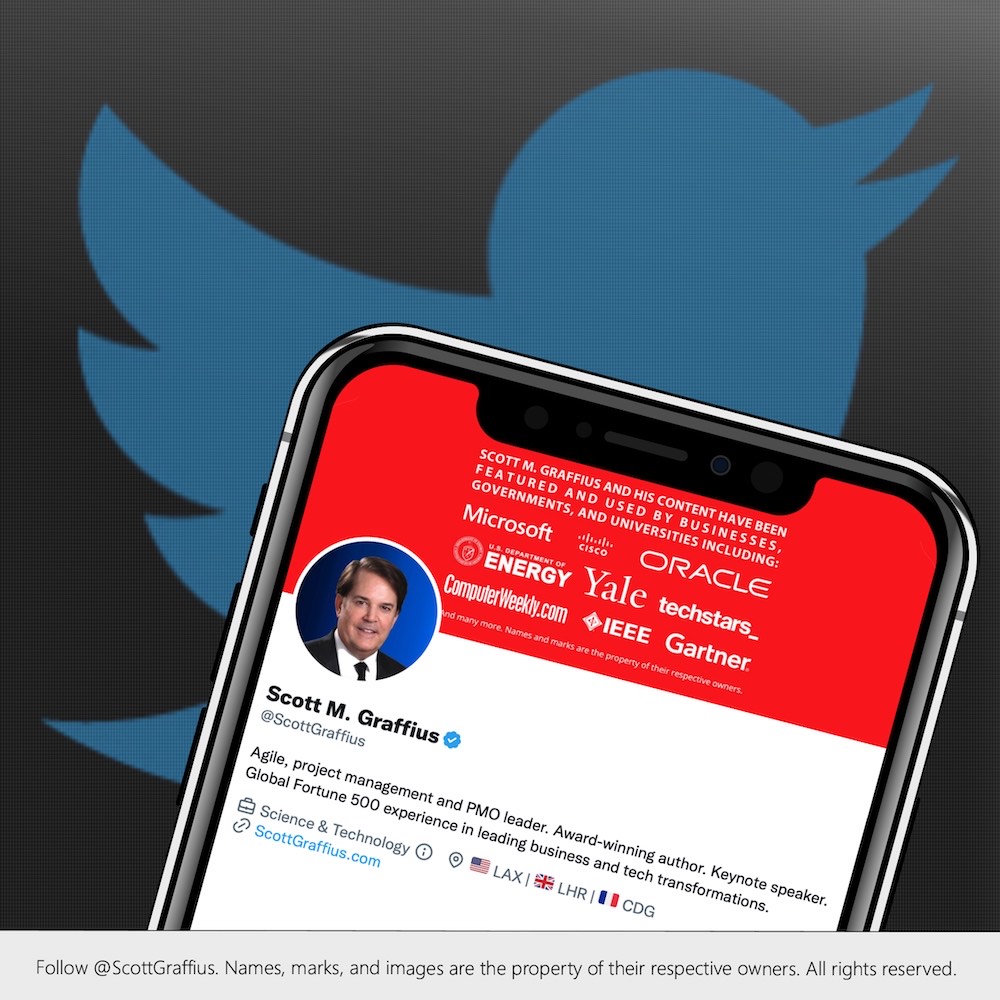

About Agile Scrum: Your Quick Start Guide with Step-by-Step Instructions

Shifting customer needs are common in today's marketplace. Businesses must be adaptive and responsive to change while delivering an exceptional customer experience to be competitive.
There are a variety of frameworks supporting the development of products and services, and most approaches fall into one of two broad categories: traditional or agile. Traditional practices such as waterfall engage sequential development, while agile involves iterative and incremental deliverables. Organizations are increasingly embracing agile to manage projects, and best meet their business needs of rapid response to change, fast delivery speed, and more.
With clear and easy to follow instructions, the multi award-winning Agile Scrum: Your Quick Start Guide with Step-by-Step Instructions book by Scott M. Graffius (Chris Hare and Colin Giffen, Technical Editors) helps the reader:
- Implement and use the most popular agile framework―Scrum;
- Deliver products in short cycles with rapid adaptation to change, fast time-to-market, and continuous improvement; and
- Support innovation and drive competitive advantage.
Hailed by Literary Titan as “the book highlights the versatility of Scrum beautifully.”
Winner of 17 first place awards.
Agile Scrum: Your Quick Start Guide with Step-by-Step Instructions is available in paperback and ebook/Kindle in the United States and around the world. Some links by country follow.
- 🇧🇷 Brazil
- 🇨🇦 Canada
- 🇨🇿 Czech Republic
- 🇩🇰 Denmark
- 🇫🇮 Finland
- 🇫🇷 France
- 🇩🇪 Germany
- 🇬🇷 Greece
- 🇭🇺 Hungary
- 🇮🇳 India
- 🇮🇪 Ireland
- 🇮🇱 Israel
- 🇮🇹 Italy
- 🇯🇵 Japan
- 🇱🇺 Luxembourg
- 🇲🇽 Mexico
- 🇳🇱 Netherlands
- 🇳🇿 New Zealand
- 🇳🇴 Norway
- 🇪🇸 Spain
- 🇸🇪 Sweden
- 🇨🇭 Switzerland
- 🇦🇪 UAE
- 🇬🇧 United Kingdom
- 🇺🇸 United States

About Agile Transformation: A Brief Story of How an Entertainment Company Developed New Capabilities and Unlocked Business Agility to Thrive in an Era of Rapid Change

Thriving in today's marketplace frequently depends on making a transformation to become more agile. Those successful in the transition enjoy faster delivery speed and ROI, higher satisfaction, continuous improvement, and additional benefits.
Based on actual events, Agile Transformation: A Brief Story of How an Entertainment Company Developed New Capabilities and Unlocked Business Agility to Thrive in an Era of Rapid Change provides a quick (60-90 minute) read about a successful agile transformation at a multinational entertainment and media company, told from the author's perspective as an agile coach.
The award-winning book by Scott M. Graffius is available in paperback and ebook/Kindle in the United States and around the world. Some links by country follow.
- 🇦🇺 Australia
- 🇦🇹 Austria
- 🇧🇷 Brazil
- 🇨🇦 Canada
- 🇨🇿 Czech Republic
- 🇩🇰 Denmark
- 🇫🇮 Finland
- 🇫🇷 France
- 🇩🇪 Germany
- 🇬🇷 Greece
- 🇮🇳 India
- 🇮🇪 Ireland
- 🇯🇵 Japan
- 🇱🇺 Luxembourg
- 🇲🇽 Mexico
- 🇳🇱 Netherlands
- 🇳🇿 New Zealand
- 🇪🇸 Spain
- 🇸🇪 Sweden
- 🇨🇭 Switzerland
- 🇦🇪 United Arab Emirates
- 🇬🇧 United Kingdom
- 🇺🇸 United States

The short URL for this article is: https://bit.ly/space-23.
© Copyright 2023 Scott M. Graffius. All rights reserved. This material may not be published, broadcast, rewritten or redistributed without the express written permission of Scott M. Graffius.

Graffius' 'Phases of Team Development' Featured by TAG at TBS24 Conference in Zermatt Switzerland
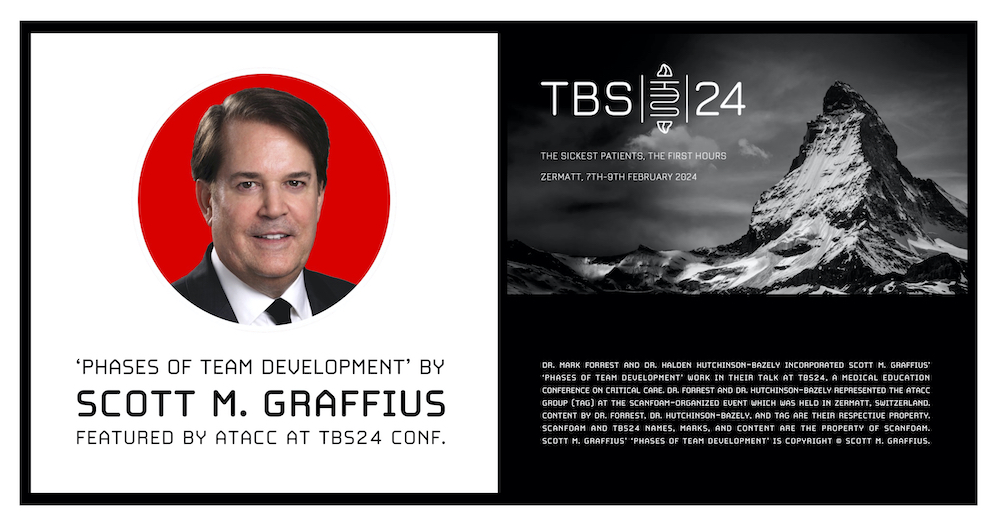

Informed by the research of Bruce W. Tuckman and Mary Ann C. Jensen, over 100 subsequent studies, and Scott M. Graffius' first-hand professional experience with, and analysis of, team leadership and performance, Graffius created his 'Phases of Team Development' as a unique perspective and visual conveying the five phases of team development — Forming, Storming, Norming, Performing, and Adjourning — inclusive of a graph showing how performance varies by phase, as well as the characteristics and strategies for each phase.
Leaders of teams can apply the information to help handle challenges or issues experienced by teams. By doing so, they’ll advance the teams' (and their own) happiness, productivity, and success.
Graffius initially developed the material in 2008, and he periodically refreshes it. For details on the current (2024) edition including permission request information, high resolution files, and more, visit here.
Graffius' 'Phases of Team Development' work is used by businesses, professional associations, government agencies, and universities around the world. Examples include Yale University, IEEE, Constructor Institute (Switzerland), Adobe, Boston University, Amsterdam Public Health Research Institute, United States National Park Service, Cisco, Bayer, Ford, University of Galway (Ireland), Hasso Plattner Institute (Germany), American Management Association, UC San Diego, and many more.
The ATACC Group (TAG) was added to the list. Dr. Mark Forrest and Dr. Halden Hutchinson-Bazely from TAG incorporated Graffius' 'Phases of Team Development' in their talk at TBS24 in Zermatt, Switzerland.
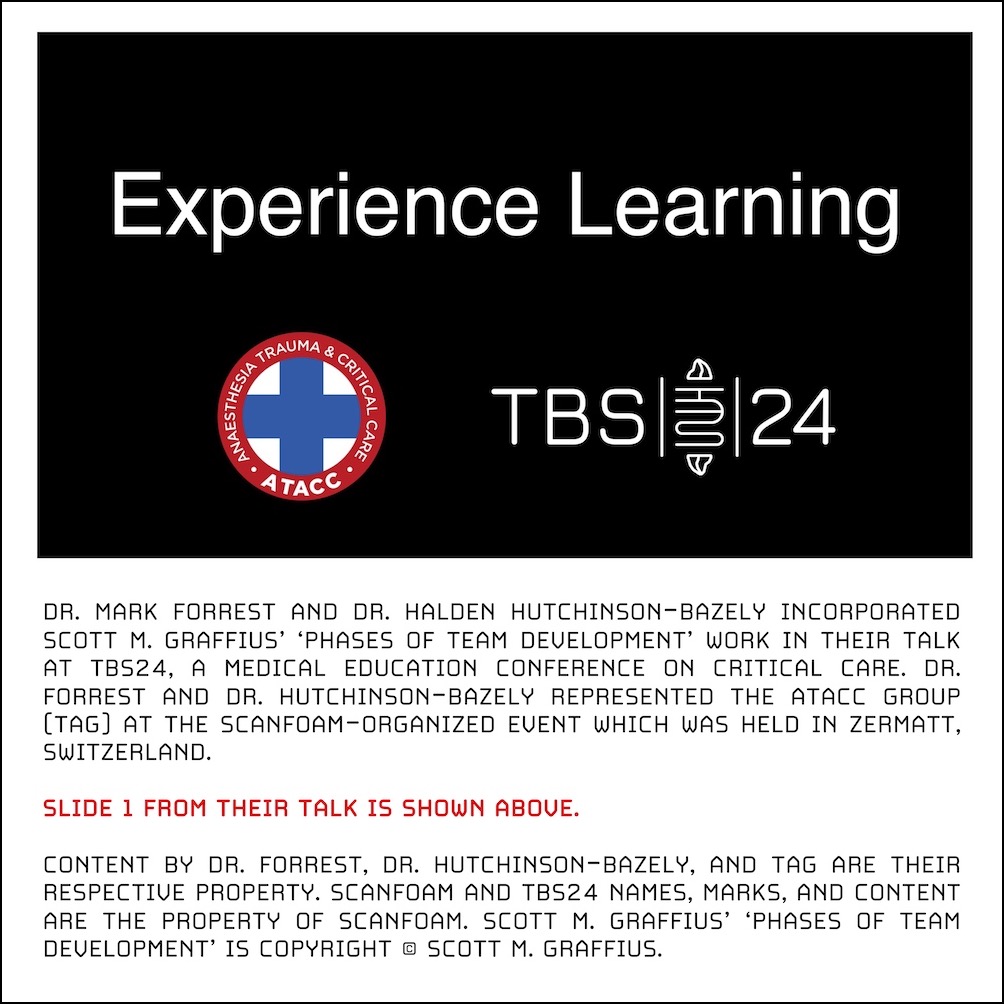
Slide 1 from their talk is shown above.
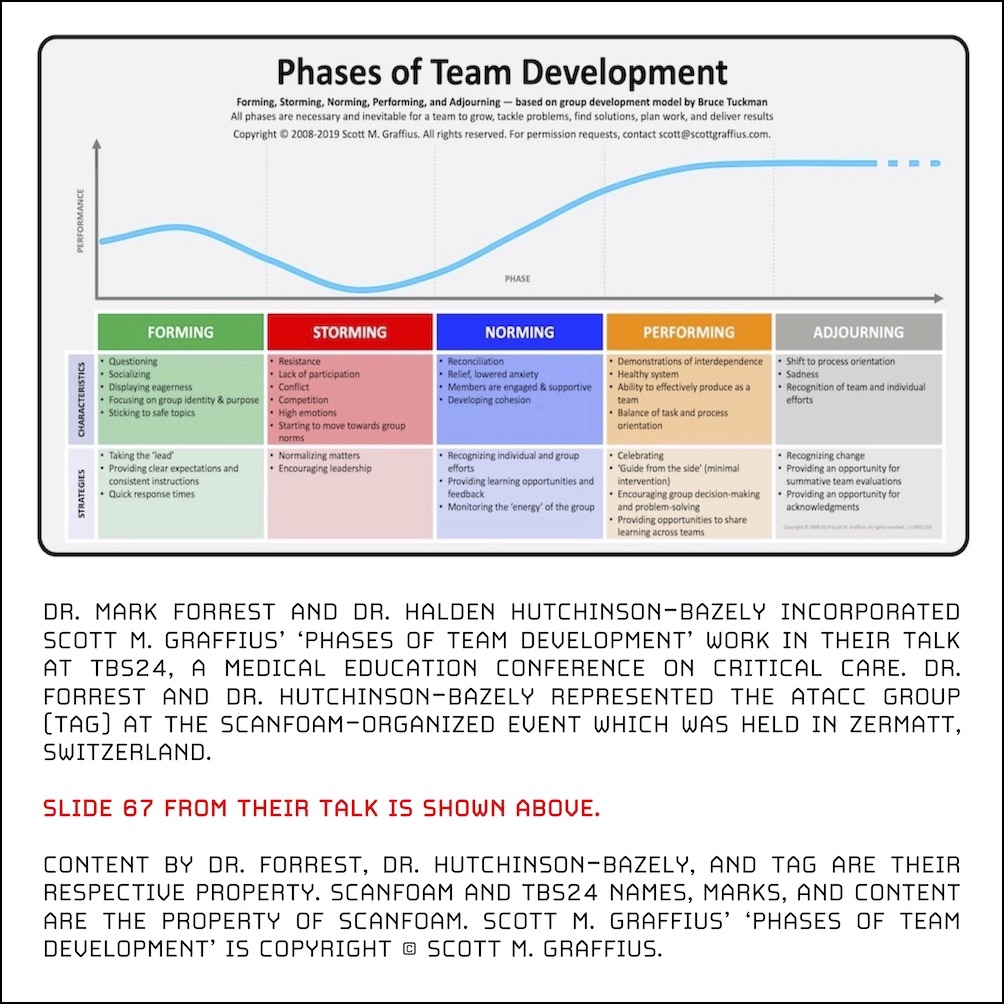
Slide 67 from their talk — which featured the 2019 edition of Graffius' 'Phases of Team Development' — is shown above. (For details on the current [2024] edition of Graffius' work including permission request information, high resolution files, and more, visit here.)
A recording of their session is on YouTube.
About Dr. Mark Forrest
The following includes content from https://scanfoam.org/tbs24.
Dr. Mark Forrest is a consultant in anaesthetics, critical care, prehospital care from the North West of England and Associate Medical Director in his NHS Trust. He has over 35 years of experience in these fields and has additional experience in aeromedical retrieval (including Paeds and ECMO), diving/hyperbaric medicine, and tactical medicine. Dr. Forrest flies as a consultant on HeliMed 29 and responds on a day-to-day basis as a 'Fire & Rescue Doctor.' He is passionate about trauma and critical care, especially in the prehospital arena and has a specialist interest in vehicle extrication as a Road Traffic Collision Extrication Instructor and Clinical Advisor to the National Fire Service College.
Dr. Forrest was the first appointed Medical Director for Fire & Rescue in the UK, over 17 years ago and now directs 9 UK Police Forces and 3 Fire and Rescue Services, through the ATACC Group.
Dr. Forrest is the Founder and Medical Director of the internationally renowned ATACC (Anesthesia Trauma and Critical Care) course and he is the First President of the Faculty of Trauma & Critical Care. He is an advocate for immersive simulation, unique training and innovation and has written over 20 varied courses for The ATACC Group as a Royal College Surgeons (London) Education Centre.
About Dr. Halden Hutchinson-Bazely
The following includes content from https://scanfoam.org/tbs24.
Dr. Halden Hutchinson-Bazely is an intensive care medicine doctor and pre hospital emergency medicine doctor in the UK. He works in a large, major trauma centre ICU, and he is a Helicopter Emergency Medical System (HEMS) doctor at East Anglian Air Ambulance (EAAA).
Dr. Hutchinson-Bazely is committed to delivering contemporary and compassionate critical care, and supporting others to do the same, so much of his non-clinical work is education. He is a faculty member at EAAA, where he specializes in endovascular resuscitation techniques. Dr. Hutchinson-Bazely is also part of the faculty for the international Endovascular Trauma Management (EVTM) society. His main commitment to education is as a deputy medical director for ATACC, where he co-directs the ATACC course.
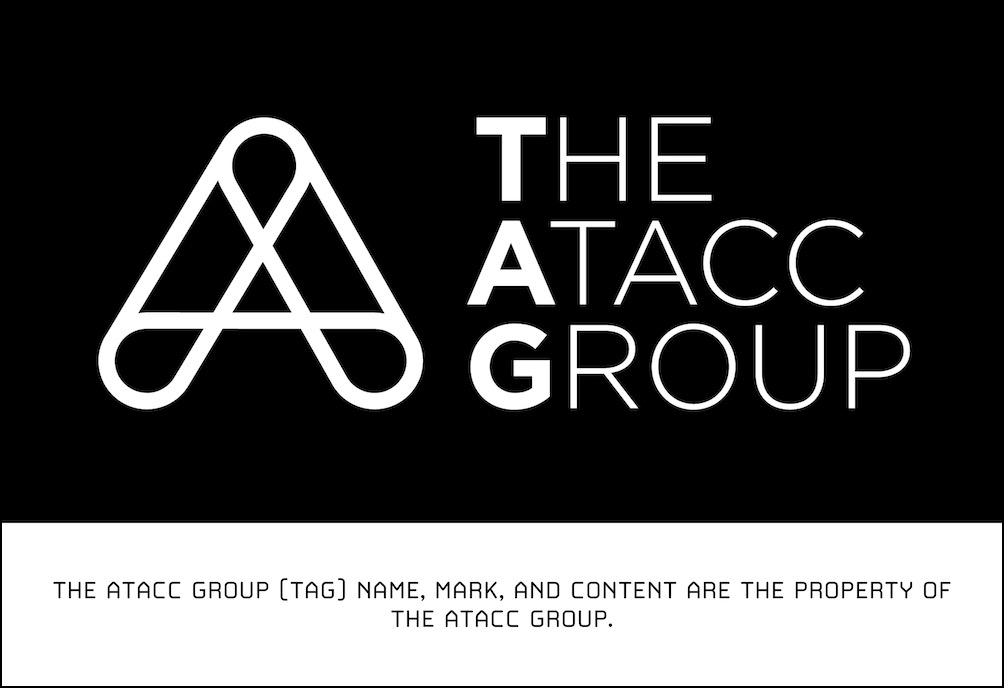
About The ATACC Group
The ATACC Group (TAG) is known for providing high quality first aid, clinical and medical education and training to every level of provider involved in patient care. It offers a suite of regulated qualifications in collaboration with Qualification Network UK (QNUK) who are an Ofqual, CCEA, and Qualification Wales recognized Awarding Organization. TAG is also a Royal College of Surgeons, London approved Educational Centre. ATACC is an acronym for Anesthesia, Trauma, and Critical Care. Visit https://www.ataccgroup.com to learn more.
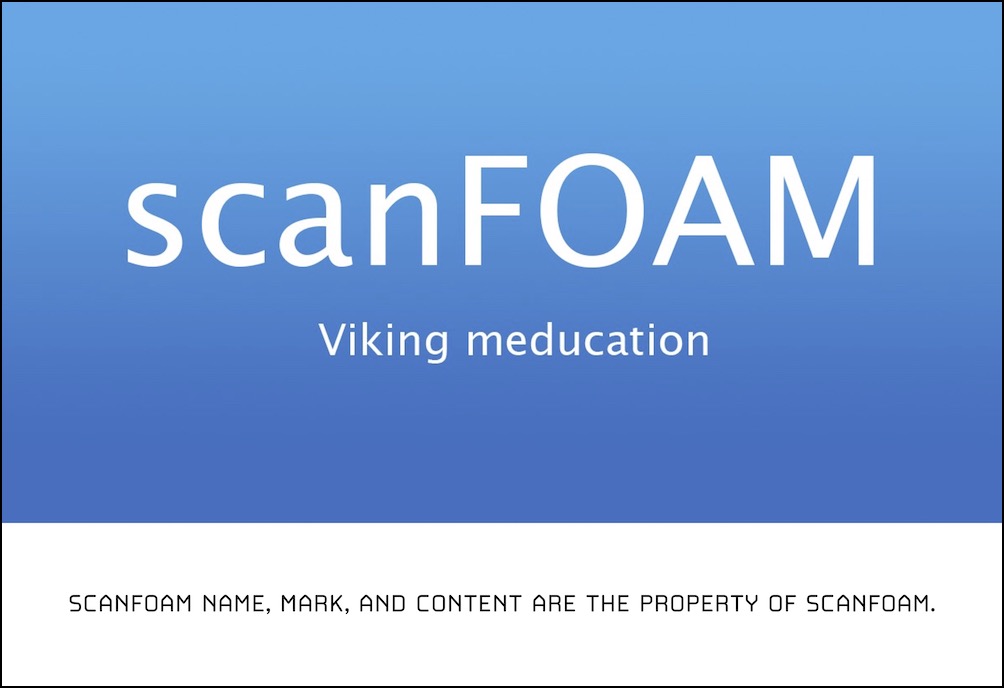
About scanFOAM
Scandinavia-based not-for-profit scanFOAM provides resources, conferences (such as TBS24), and more aimed at improving medicine. ScanFOAM is short for Scandinavia Free Open Access Meducation (or medical education). Visit https://scanfoam.org/ to learn more.
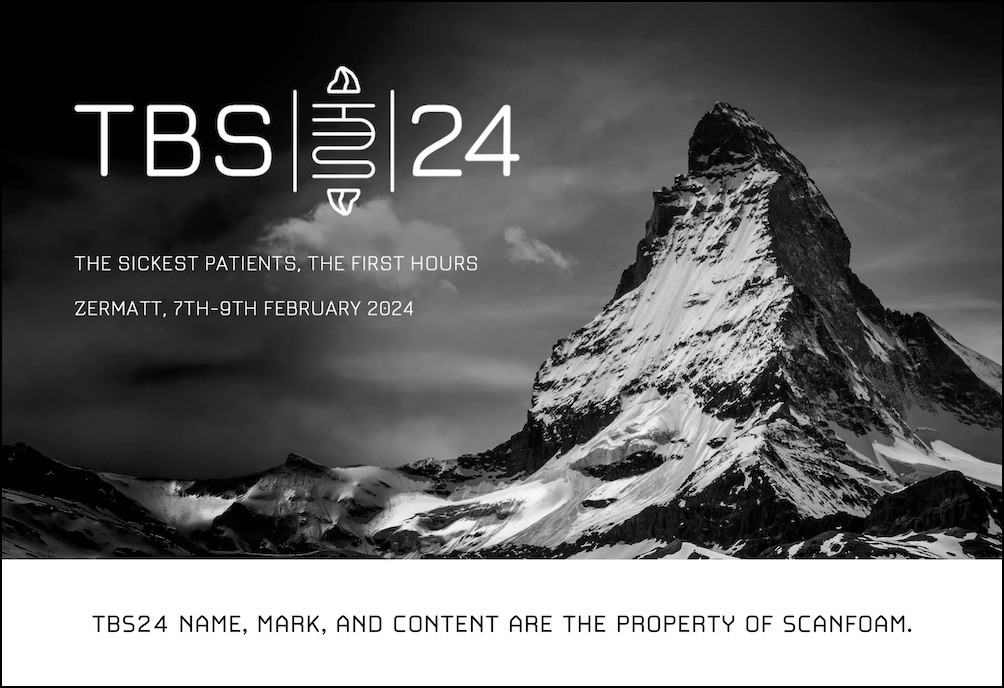
About the TBS24 Conference
TBS24 – the 6th iteration of cutting-edge talks on critical care, organized by scanFOAM – was held in beautiful Zermatt, Switzerland, on 7-9 February 2024. Visit https://scanfoam.org/tbs24/ to learn more.
How to Cite This Article
Graffius, Scott M. (2024, April 25). Graffius' 'Phases of Team Development' Featured by TAG at TBS24 Conference in Zermatt Switzerland. Available at: https://scottgraffius.com/blog/files/tbs24.html. DOI: 10.13140/RG.2.2.36021.90087.




About Scott M. Graffius

Scott M. Graffius, PMP, SA, CSP-SM, CSP-PO, CSM, CSPO, ITIL, LSSGB is an agile project management practitioner, consultant, thinker, creator, multi-award-winning author, and international public speaker. Founder and CEO of Exceptional PPM and PMO Solutions™ and subsidiary Exceptional Agility™, he has generated over $1.9 billion for Global Fortune 500 businesses and other organizations he has served. Graffius and content from his books, talks, workshops, and more have been featured and used by Microsoft, Oracle, Broadcom, Cisco, Gartner, Project Management Institute, IEEE, National Academy of Sciences, United States Department of Energy, Yale University, Tufts University, and others. He delights audiences with dynamic and engaging talks and workshops on agile project management, AI, Tech leadership, video game development, strategic alignment, the science of high performance teams, and more. To date, he's presented sessions at 89 conferences and other events across 25 countries.
His full bio is available here.
Connect with Scott on:



About Agile Scrum: Your Quick Start Guide with Step-by-Step Instructions

Shifting customer needs are common in today's marketplace. Businesses must be adaptive and responsive to change while delivering an exceptional customer experience to be competitive.
There are a variety of frameworks supporting the development of products and services, and most approaches fall into one of two broad categories: traditional or agile. Traditional practices such as waterfall engage sequential development, while agile involves iterative and incremental deliverables. Organizations are increasingly embracing agile to manage projects, and best meet their business needs of rapid response to change, fast delivery speed, and more.
With clear and easy to follow step-by-step instructions, Scott M. Graffius's award-winning Agile Scrum: Your Quick Start Guide with Step-by-Step Instructions helps the reader:
- Implement and use the most popular agile framework―Scrum;
- Deliver products in short cycles with rapid adaptation to change, fast time-to-market, and continuous improvement; and
- Support innovation and drive competitive advantage.
Hailed by Literary Titan as “the book highlights the versatility of Scrum beautifully.”
Winner of 17 first place awards.
Agile Scrum: Your Quick Start Guide with Step-by-Step Instructions is available in paperback and ebook/Kindle in the United States and around the world. Some links by country follow.
- 🇧🇷 Brazil
- 🇨🇦 Canada
- 🇨🇿 Czech Republic
- 🇩🇰 Denmark
- 🇫🇮 Finland
- 🇫🇷 France
- 🇩🇪 Germany
- 🇬🇷 Greece
- 🇭🇺 Hungary
- 🇮🇳 India
- 🇮🇪 Ireland
- 🇮🇱 Israel
- 🇮🇹 Italy
- 🇯🇵 Japan
- 🇱🇺 Luxembourg
- 🇲🇽 Mexico
- 🇳🇱 Netherlands
- 🇳🇿 New Zealand
- 🇳🇴 Norway
- 🇪🇸 Spain
- 🇸🇪 Sweden
- 🇨🇭 Switzerland
- 🇦🇪 UAE
- 🇬🇧 United Kingdom
- 🇺🇸 United States

About Agile Transformation: A Brief Story of How an Entertainment Company Developed New Capabilities and Unlocked Business Agility to Thrive in an Era of Rapid Change

Thriving in today's marketplace frequently depends on making a transformation to become more agile. Those successful in the transition enjoy faster delivery speed and ROI, higher satisfaction, continuous improvement, and additional benefits.
Based on actual events, Agile Transformation: A Brief Story of How an Entertainment Company Developed New Capabilities and Unlocked Business Agility to Thrive in an Era of Rapid Change provides a quick (60-90 minute) read about a successful agile transformation at a multinational entertainment and media company, told from the author's perspective as an agile coach.
The award-winning book by Scott M. Graffius is available in paperback and ebook/Kindle in the United States and around the world. Some links by country follow.
- 🇦🇺 Australia
- 🇦🇹 Austria
- 🇧🇷 Brazil
- 🇨🇦 Canada
- 🇨🇿 Czech Republic
- 🇩🇰 Denmark
- 🇫🇮 Finland
- 🇫🇷 France
- 🇩🇪 Germany
- 🇬🇷 Greece
- 🇮🇳 India
- 🇮🇪 Ireland
- 🇯🇵 Japan
- 🇱🇺 Luxembourg
- 🇲🇽 Mexico
- 🇳🇱 Netherlands
- 🇳🇿 New Zealand
- 🇪🇸 Spain
- 🇸🇪 Sweden
- 🇨🇭 Switzerland
- 🇦🇪 United Arab Emirates
- 🇬🇧 United Kingdom
- 🇺🇸 United States

An abridged version of this article is on LinkedIn.
The short link for this article is https://bit.ly/tbs-24
© Copyright 2024 Scott M. Graffius. All rights reserved. This material may not be published, broadcast, rewritten or redistributed without the express written permission of Scott M. Graffius.

Semiconductor Manufacturing Firm Lam Research Features Scott M. Graffius' 'Phases of Team Development' Intellectual Property

Semiconductor Manufacturing Firm Lam Research Features Scott M. Graffius' 'Phases of Team Development' IP
Informed by the research of Bruce W. Tuckman and Mary Ann C. Jensen, over 100 subsequent studies, and Scott M. Graffius' first-hand professional experience with, and analysis of, team leadership and performance, Graffius created his 'Phases of Team Development' as a unique perspective and visual conveying the five phases of team development — Forming, Storming, Norming, Performing, and Adjourning — inclusive of a graph showing how performance varies by phase, as well as the characteristics and strategies for each phase. Graffius' 'Phases of Team Development' is registered with the U.S. Copyright Office.
Leaders of teams can apply Graffius' information to help handle challenges or issues experienced by teams. By doing so, they’ll advance the teams’ (and their own) happiness, productivity, and success.
Graffius' 'Phases of Team Development' intellectual property is used by businesses, professional associations, government agencies, and universities around the world. Select examples include:
- Adobe,
- American Management Association,
- Amsterdam Public Health Research Institute,
- Bayer,
- Boston University,
- Cisco,
- Deimos Aerospace,
- DevOps Institute,
- Ford Motor Company,
- Hasso Plattner Institute (Germany),
- IEEE,
- London South Bank University,
- Microsoft,
- New Zealand Government,
- Torrens University Australia,
- UC San Diego,
- TBS Switzerland,
- UK Sports Institute,
- University of Galway Ireland,
- U.S. National Park Service,
- U.S. Tennis Association,
- Virginia Tech,
- Yale University,
- and many others.
Semiconductor manufacturing firm Lam Research was added to the list.
Here's email 1 of 5: The request from Lam Research to Graffius. (Personal, sensitive, or confidential information is redacted throughout.)
Here's email 2 of 5: Response from Graffius to Lam Research.
Here's email 3 of 5: Response from Lam Research to Graffius.
Here's email 4 of 5: Response from Graffius to Lam Research.
And here's email 5 of 5: Response from Lam Research to Graffius.
Graffius initially developed his respective material in 2008, and he periodically refreshes it. Information on the current (2024) edition of his 'Phases of Team Development' IP including how to request permission and more is provided later in this article.





About Scott M. Graffius

Scott M. Graffius, PMP, SA, CSP-SM, CSP-PO, CSM, CSPO, ITIL, LSSGB is an agile project management practitioner, consultant, creator, award-winning author (Agile Scrum and Agile Transformation), and international public speaker. Founder and CEO of Exceptional PPM and PMO Solutions™ and subsidiary Exceptional Agility™, he has generated over $1.9 billion for Global Fortune 500 businesses and other organizations he has served. Graffius and content from his books, talks, workshops, and more have been featured and used by Microsoft, Oracle, Broadcom, Cisco, Adobe, Gartner, Project Management Institute, IEEE, Qantas, National Academy of Sciences, EU's European Commission, Amsterdam Public Health Research Institute, Boston University, U.S. National Park Service, Bayer, Ford, London South Bank University, Warsaw University of Technology, U.S. Tennis Association, Hasso Plattner Institute, American Management Association, Virginia Tech, University of Galway Ireland, UC San Diego, Yale University, and others. He delights audiences with dynamic and engaging talks and workshops on agile project management, AI, video game development, strategic alignment, the science of high performance teams, and more. To date, he's presented sessions at 91 conferences and other events across 25 countries. His full bio is available here.



About Agile Scrum: Your Quick Start Guide with Step-by-Step Instructions

Shifting customer needs are common in today's marketplace. Businesses must be adaptive and responsive to change while delivering an exceptional customer experience to be competitive.
There are a variety of frameworks supporting the development of products and services, and most approaches fall into one of two broad categories: traditional or agile. Traditional practices such as waterfall engage sequential development, while agile involves iterative and incremental deliverables. Organizations are increasingly embracing agile to manage projects, and best meet their business needs of rapid response to change, fast delivery speed, and more.
With clear and easy to follow step-by-step instructions, Scott M. Graffius's award-winning Agile Scrum: Your Quick Start Guide with Step-by-Step Instructions helps the reader:
- Implement and use the most popular agile framework―Scrum;
- Deliver products in short cycles with rapid adaptation to change, fast time-to-market, and continuous improvement; and
- Support innovation and drive competitive advantage.
Hailed by Literary Titan as “the book highlights the versatility of Scrum beautifully.”
Winner of 17 first place awards.
Agile Scrum: Your Quick Start Guide with Step-by-Step Instructions is available in paperback and ebook/Kindle in the United States and around the world. Some links by country follow.
- 🇧🇷 Brazil
- 🇨🇦 Canada
- 🇨🇿 Czech Republic
- 🇩🇰 Denmark
- 🇫🇮 Finland
- 🇫🇷 France
- 🇩🇪 Germany
- 🇬🇷 Greece
- 🇭🇺 Hungary
- 🇮🇳 India
- 🇮🇪 Ireland
- 🇮🇱 Israel
- 🇮🇹 Italy
- 🇯🇵 Japan
- 🇱🇺 Luxembourg
- 🇲🇽 Mexico
- 🇳🇱 Netherlands
- 🇳🇿 New Zealand
- 🇳🇴 Norway
- 🇪🇸 Spain
- 🇸🇪 Sweden
- 🇨🇭 Switzerland
- 🇦🇪 UAE
- 🇬🇧 United Kingdom
- 🇺🇸 United States

About Agile Transformation: A Brief Story of How an Entertainment Company Developed New Capabilities and Unlocked Business Agility to Thrive in an Era of Rapid Change

Thriving in today's marketplace frequently depends on making a transformation to become more agile. Those successful in the transition enjoy faster delivery speed and ROI, higher satisfaction, continuous improvement, and additional benefits.
Based on actual events, Agile Transformation: A Brief Story of How an Entertainment Company Developed New Capabilities and Unlocked Business Agility to Thrive in an Era of Rapid Change provides a quick (60-90 minute) read about a successful agile transformation at a multinational entertainment and media company, told from the author's perspective as an agile coach.
The award-winning book by Scott M. Graffius is available in paperback and ebook/Kindle in the United States and around the world. Some links by country follow.
- 🇦🇺 Australia
- 🇦🇹 Austria
- 🇧🇷 Brazil
- 🇨🇦 Canada
- 🇨🇿 Czech Republic
- 🇩🇰 Denmark
- 🇫🇮 Finland
- 🇫🇷 France
- 🇩🇪 Germany
- 🇬🇷 Greece
- 🇮🇳 India
- 🇮🇪 Ireland
- 🇯🇵 Japan
- 🇱🇺 Luxembourg
- 🇲🇽 Mexico
- 🇳🇱 Netherlands
- 🇳🇿 New Zealand
- 🇪🇸 Spain
- 🇸🇪 Sweden
- 🇨🇭 Switzerland
- 🇦🇪 United Arab Emirates
- 🇬🇧 United Kingdom
- 🇺🇸 United States

About Graffius' Copyrighted 'Phases of Team Development'
Graffius' intellectual property was briefly covered earlier in this article. This section provides additional information.
Graffius initially developed the material in 2008, and he periodically refreshes it. For details on the current (2024) edition including permission request information, high resolution files, and more, select here.
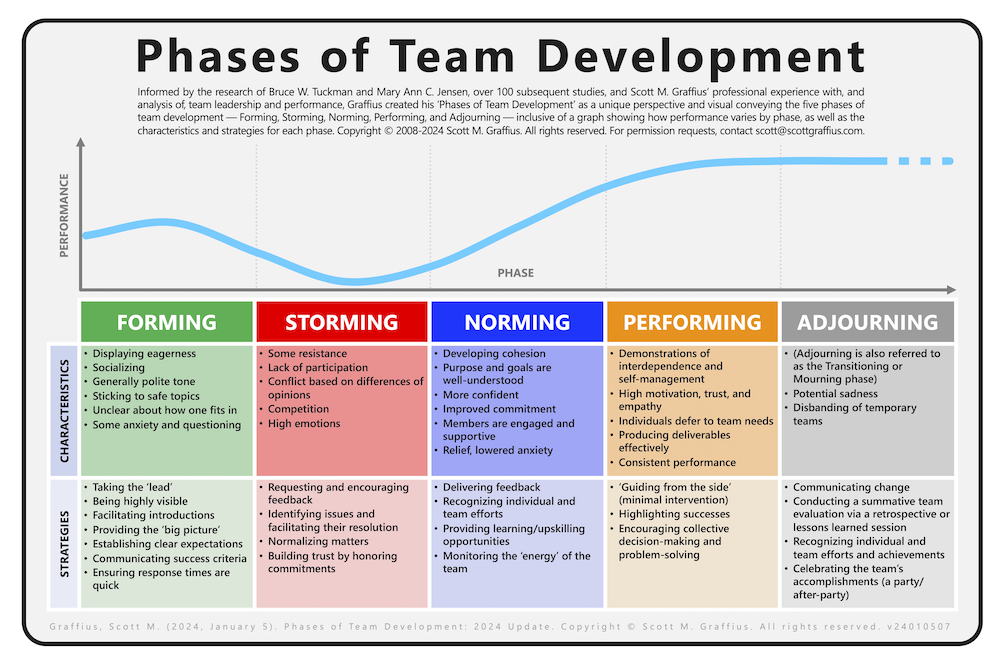
The visual from the 2024 edition of Graffius' 'Phases of Team Development' is shown above.

About Lam Research
Lam Research Corporation is a global supplier of innovative wafer fabrication equipment and services to the semiconductor industry. Lam's products and services enable customers to build smaller and better performing devices. Today, most advanced chips are built with Lam technology. Lam Research combines superior systems engineering, technology leadership, and a strong values-based culture, with an unwavering commitment to its customers. Lam Research (Nasdaq: LRCX) is a FORTUNE 500® company headquartered in Fremont, California, with operations around the globe. Visit https://www.lamresearch.com to learn more.

How to Cite This Article
Graffius, Scott M. (2024, June 13). Semiconductor Manufacturing Firm Lam Research Features Scott M. Graffius' 'Phases of Team Development' Intellectual Property. Available at: https://scottgraffius.com/blog/files/lam.html. DOI: 10.13140/RG.2.2.34699.30246.

© Copyright 2024 Scott M. Graffius. All rights reserved. This material may not be published, broadcast, rewritten or redistributed without the express written permission of Scott M. Graffius.

FINAT (Fédération Internationale des Fabricants et Transformateurs d'Adhésifs et Thermocollants sur Papiers et Autres Supports) Features Scott M. Graffius’ Intellectual Property


Scott M. Graffius' Intellectual Property on Teamwork Tradecraft
Informed by the research of Bruce W. Tuckman and Mary Ann C. Jensen, over 100 subsequent studies, and Scott M. Graffius' first-hand professional experience with, and analysis of, team leadership and performance, Graffius created his ‘Phases of Team Development’ as a unique perspective and visual conveying the five phases of team development — Forming, Storming, Norming, Performing, and Adjourning — inclusive of a graph showing how performance varies by phase, as well as the characteristics and strategies for each phase.
Graffius' intellectual property (IP) is registered with the United States Copyright Office.
Graffius initially developed his ‘Phases of Team Development’ unique material in 2008, and he periodically refreshes it.
For reference, the visual for the current (2024) edition is below and the details are here.

Organizations around the world engage Graffius to deliver compelling talks and workshops. To date, he's presented sessions at 91 conferences and other events across 25 countries: Armenia, Australia, Brazil, Canada, Czech Republic, Finland, France, Germany, Greece, Hong Kong, Hungary, India, Ireland, Lithuania, Luxembourg, Nepal, Netherlands, New Zealand, Norway, Romania, Sweden, Switzerland, United Arab Emirates, United Kingdom, and the United States.

Graffius ‘Phases of Team Development’ IP is central and key to many of those sessions. His rate card and a listing of his engagements are at https://scottgraffius.com/resources/Exceptional-PPM-and-PMO-Solutions-Rate-Card-for-2024-2025-v24071607.pdf and https://scottgraffius.com/publicspeaker.html, respectively.

Graffius' 'Phases of Team Development' Intellectual Property Is Used By Organizations Around The World — And FINAT Was Added To The List
With an authorization/license from Graffius, his ‘Phases of Team Development’ IP is featured and used by businesses, professional associations, government agencies, and universities around the globe. Examples include:
- Adobe,
- American Management Association,
- Amsterdam Public Health Research Institute,
- Bayer,
- Boston University,
- Broadcom,
- Cisco,
- Deimos Aerospace,
- DevOps Institute,
- Erste Group Bank AG (Austria),
- Ford Motor Company,
- FSU College of Medicine,
- Hasso Plattner Institute,
- IEEE,
- James Madison University,
- Johns Hopkins University,
- LeadingEng,
- London South Bank University,
- Manufacturers Alliance,
- Microsoft,
- New Zealand Government,
- Oracle,
- Royal Australasian College of Physicians,
- TBS Switzerland,
- Torrens University Australia,
- Tufts University,
- U.S. National Park Service,
- U.S. Tennis Association,
- UC San Diego,
- UK Sports Institute,
- University of Galway Ireland,
- Victorian Institute of Technology (Australia),
- Virginia Tech,
- Warsaw University,
- Western Sydney University,
- World Resources Institute,
- Yale University,
- ZHAW Zurich University of Applied Sciences,
- and many others.
FINAT — the international association for the label industry’s development, education, and innovation — was added to the list.
The following visual shows a post from FINAT on LinkedIn with text about and pictures (including one featuring Graffius’ IP) from the FINAT Committee Summit in May 2024 in Amsterdam.

The following visual includes a picture from FINAT on LinkedIn. It shows Graffius’ 'Phases of Team Development' IP displayed on-screen in a talk at the FINAT Committee Summit in May 2024 in Amsterdam.

To learn more about FINAT, read on.
To learn more about Graffius' 'Phases of Team Development' intellectual property, visit here.

This article uses limited excerpts from FINAT (a post shared by FINAT on LinkedIn, and a picture from the same post featuring Graffius’ IP), attributed to FINAT and used under fair use for news reporting and analysis. FINAT name, mark, and content are the property of FINAT. Graffius’ ‘Phases of Team Development’ is copyright © Scott M. Graffius. All rights reserved.

About FINAT
FINAT is the international association for the label industry’s development, education, and innovation.
FINAT is an abbreviation for Fédération Internationale des Fabricants et Transformateurs d'Adhésifs et Thermocollants sur Papiers et Autres Supports. In English: International Federation of Manufacturers and Processors of Adhesives and Heat-Sealable Materials on Paper and Other Supports.
FINAT’s mission involves empowering the label industry by being the uniting platform that helps the international label industry excel in their daily business. FINAT's scope is to:
- Provide a global communication and networking platform for converters and direct and indirect suppliers.
- Represent members' interests.
- Provide a central source for industry information.
- Produce and distribute related educational and technical publications.
- Represent the industry's views at the EU level.
- Establish and maintain industry-related best practices, standards, and test methods.
To learn more, visit https://www.finat.com.

About Scott M. Graffius

Scott M. Graffius is a global leader in agile project management, an expert on teamwork tradecraft, an authority on temporal dynamics on social media platforms, a creator, a consultant, a trainer, an award-winning author, and an international public speaker.
He's generated over $1.9 billion of business value in aggregate for Global Fortune 500 businesses and other organizations he's served. Businesses and industries range from consumer products to advanced technology (including AI, R&D), e-commerce, music, streaming/OTT video, television, film, video games, financial services, government, and more.
Graffius and content from his books (Agile Scrum and Agile Transformation), talks, workshops, and more have been featured and used by businesses, professional associations, governments, and universities around the world. Examples include Adobe, American Management Association, Amsterdam Public Health Research Institute, Bayer, Boston University, Broadcom, Cisco, Deimos Aerospace, DevOps Institute, EU's European Commission, Ford Motor Company, Hasso Plattner Institute Germany, IEEE, Johns Hopkins University, London South Bank University, Microsoft, National Academy of Sciences, New Zealand Government, Oracle, Project Management Institute, Torrens University Australia, UC San Diego, TBS Switzerland, UK Sports Institute, University of Galway Ireland, U.S. Department of Energy, U.S. National Park Service, U.S. Tennis Association, Virginia Tech, Warsaw University of Technology, Yale University, Zurich University of Applied Sciences, and many others.
He delights audiences around the world with dynamic and engaging talks and workshops. He's presented sessions at 91 conferences and other events across 25 countries. Visit here to learn more and here to ask Scott to speak at your event.



About Agile Scrum: Your Quick Start Guide with Step-by-Step Instructions

Shifting customer needs are common in today's marketplace. Businesses must be adaptive and responsive to change while delivering an exceptional customer experience to be competitive.
There are a variety of frameworks supporting the development of products and services, and most approaches fall into one of two broad categories: traditional or agile. Traditional practices such as waterfall engage sequential development, while agile involves iterative and incremental deliverables. Organizations are increasingly embracing agile to manage projects, and best meet their business needs of rapid response to change, fast delivery speed, and more.
With clear and easy to follow step-by-step instructions, Scott M. Graffius's award-winning Agile Scrum: Your Quick Start Guide with Step-by-Step Instructions helps the reader:
- Implement and use the most popular agile framework―Scrum;
- Deliver products in short cycles with rapid adaptation to change, fast time-to-market, and continuous improvement; and
- Support innovation and drive competitive advantage.
Hailed by Literary Titan as “the book highlights the versatility of Scrum beautifully.”
Winner of 17 first place awards.
Agile Scrum: Your Quick Start Guide with Step-by-Step Instructions is available in paperback and ebook/Kindle in the United States and around the world. Some links by country follow.
- 🇧🇷 Brazil
- 🇨🇦 Canada
- 🇨🇿 Czech Republic
- 🇩🇰 Denmark
- 🇫🇮 Finland
- 🇫🇷 France
- 🇩🇪 Germany
- 🇬🇷 Greece
- 🇭🇺 Hungary
- 🇮🇳 India
- 🇮🇪 Ireland
- 🇮🇱 Israel
- 🇮🇹 Italy
- 🇯🇵 Japan
- 🇱🇺 Luxembourg
- 🇲🇽 Mexico
- 🇳🇱 Netherlands
- 🇳🇿 New Zealand
- 🇳🇴 Norway
- 🇪🇸 Spain
- 🇸🇪 Sweden
- 🇨🇭 Switzerland
- 🇦🇪 UAE
- 🇬🇧 United Kingdom
- 🇺🇸 United States

About Agile Transformation: A Brief Story of How an Entertainment Company Developed New Capabilities and Unlocked Business Agility to Thrive in an Era of Rapid Change

Thriving in today's marketplace frequently depends on making a transformation to become more agile. Those successful in the transition enjoy faster delivery speed and ROI, higher satisfaction, continuous improvement, and additional benefits.
Based on actual events, Agile Transformation: A Brief Story of How an Entertainment Company Developed New Capabilities and Unlocked Business Agility to Thrive in an Era of Rapid Change provides a quick (60-90 minute) read about a successful agile transformation at a multinational entertainment and media company, told from the author's perspective as an agile coach.
The award-winning book by Scott M. Graffius is available in paperback and ebook/Kindle in the United States and around the world. Some links by country follow.
- 🇦🇺 Australia
- 🇦🇹 Austria
- 🇧🇷 Brazil
- 🇨🇦 Canada
- 🇨🇿 Czech Republic
- 🇩🇰 Denmark
- 🇫🇮 Finland
- 🇫🇷 France
- 🇩🇪 Germany
- 🇬🇷 Greece
- 🇮🇳 India
- 🇮🇪 Ireland
- 🇯🇵 Japan
- 🇱🇺 Luxembourg
- 🇲🇽 Mexico
- 🇳🇱 Netherlands
- 🇳🇿 New Zealand
- 🇪🇸 Spain
- 🇸🇪 Sweden
- 🇨🇭 Switzerland
- 🇦🇪 United Arab Emirates
- 🇬🇧 United Kingdom
- 🇺🇸 United States


How to Cite This Article
Graffius, Scott M. (2024, September 12). FINAT (Fédération Internationale des Fabricants et Transformateurs d'Adhésifs et Thermocollants sur Papiers et Autres Supports) Features Scott M. Graffius’ Intellectual Property. Available at: https://scottgraffius.com/blog/files/finat.html. DOI: 10.13140/RG.2.2.16446.50244.


Post-Publication Notes
If there are any supplements or updates to this article after the date of publication, they will appear here.

A PDF of this article is here
The short link for this article is https://bit.ly/finat-24
© Copyright 2024 Scott M. Graffius. All rights reserved. This material may not be published, broadcast, rewritten or redistributed without the express written permission of Scott M. Graffius.

TurningWest's 'Trial'


If there's an update after this article is published, the information will appear in the Post-Publication Notes section.

Introduction
Plagiarism—defined as ‘to steal and pass off (the ideas or words of another) as one’s own: use (another's production) without crediting the source’ (source: Merriam-Webster)—infringes on the intellectual property rights of others, results in misinformation, and often violates copyright.

Background
Informed by the research of Bruce W. Tuckman and Mary Ann C. Jensen, over 100 subsequent studies, and Scott M. Graffius' first-hand professional experience with, and analysis of, team leadership and performance, Graffius created his ‘Phases of Team Development’ as a unique perspective and visual conveying the five phases of team development—Forming, Storming, Norming, Performing, and Adjourning—inclusive of a graph showing how performance varies by phase, as well as the characteristics and strategies for each phase.
Graffius' intellectual property (IP) is registered with the United States Copyright Office.
Graffius initially developed his ‘Phases of Team Development’ unique material in 2008, and he periodically refreshes it.
For reference, the visual applicable to this case (2021 edition) is shown below [Exhibit 1] and is available at: https://dx.doi.org/10.13140/RG.2.2.22040.42246.

As shown above, Graffius’ copyright ownership details are integrated into and appear on his copyrighted property. Specifically, it reads: “Copyright © 2008-2021 Scott M. Graffius. All rights reserved. For permission requests, contact scott@scottgraffius.com.”
Again, this 2021 edition is referenced because it is the one applicable to this case.
Organizations around the world engage Graffius to deliver compelling talks and workshops. To date, he's presented sessions at 91 conferences and other events across 25 countries:
- Armenia,
- Australia,
- Brazil,
- Canada,
- Czech Republic,
- Finland,
- France,
- Germany,
- Greece,
- Hong Kong,
- Hungary,
- India,
- Ireland,
- Lithuania,
- Luxembourg,
- Nepal,
- Netherlands,
- New Zealand,
- Norway,
- Romania,
- Sweden,
- Switzerland,
- United Arab Emirates,
- United Kingdom,
- and the United States.

Graffius ‘Phases of Team Development’ IP is central and key to many of those sessions. His rate card and a listing of his engagements are at https://scottgraffius.com/resources/Exceptional-PPM-and-PMO-Solutions-Rate-Card-for-2024-2025-v24071607.pdf and https://scottgraffius.com/publicspeaker.html, respectively.
With an authorization/license from Graffius, his copyrighted ‘Phases of Team Development’ intellectual property is featured and used by businesses, professional associations, government agencies, and universities around the globe. Examples include:
- Adobe,
- American Management Association,
- Amsterdam Public Health Research Institute,
- Boston University,
- Broadcom,
- Cisco,
- Deimos Aerospace,
- DevOps Institute,
- Erste Group Bank AG (Austria),
- FINAT,
- Ford Motor Company,
- FSU College of Medicine,
- Hasso Plattner Institute,
- IEEE,
- James Madison University,
- Johns Hopkins University,
- LeadingEng,
- London South Bank University,
- Manufacturers Alliance,
- Microsoft,
- New Zealand Government,
- Oracle,
- Royal Australasian College of Physicians,
- TBS Switzerland,
- Torrens University Australia,
- Tufts University,
- U.S. National Park Service,
- U.S. Tennis Association,
- UC San Diego,
- UK Sports Institute,
- University of Galway Ireland,
- Victorian Institute of Technology (Australia),
- Virginia Tech,
- Warsaw University,
- Western Sydney University,
- World Resources Institute,
- Yale University,
- and many others.

Details on the Plagiarism
Note: All evidence has been preserved.
A whistleblower tip informed Scott M. Graffius that a video is using Graffius’ intellectual property. The video was identified as:
- Publisher of video: TurningWest
- Date of publication: 16 September 2024
- Title of video: ‘9 13 24 Mastering Team Dev webinar’ (note: the preceding is what is listed on YouTube as the title; however, for reference, the video itself notes that the title is: 'Mastering Team Development: Key Modules and Performance Examples')
- Link to video: https://www.youtube.com/watch?v=n7qldELhp7s
Exhibit 2 is shown below. It provides an overview, including thumbnail images from the the video.

Graffius reviewed TurningWest’s 2024 video and saw numerous examples of material—content on the characteristics and strategies for the phases of team development—plagiarized from Graffius’ 2021 copyrighted ‘Phases of Team Development’ property.
TurningWest did not request nor receive permission to use Graffius’ 2021 copyrighted ‘Phases of Team Development’ property. Yet, TurningWest used it (some with slight rewording such as changing "recognizing" to "recognize" and similar, which remains plagiarism) commercially and without attribution.
Again, plagiarism is defined as ‘to steal and pass off (the ideas or words of another) as one’s own: use (another's production) without crediting the source’ (source: Merriam-Webster). TurningWest’s presentation plagiarized Graffius’ copyrighted ’Phases of Team Development,’ violating his intellectual property.
Instances of TurningWest changing a word from a section from Graffius’ copyrighted property that’s in the present participle form (such as "recognizing") to the present simple form (such as "recognize") or otherwise similar slight rewording is still stealing Graffius' words and ideas; it is still plagiarism. The combination of such rewording and lack of attribution may be seen as a signal of intent to deceive. Regardless of whether the infringement was intentional or "inadvertent," the actions misrepresent the originator of the words and ideas, which is at the heart of plagiarism.
Plagiarism is a profound and disgraceful breach of professional ethics, moral standards, and Graffius’ intellectual property rights.
Graffius maintains, enforces, and protects his copyright and other intellectual property rights.
Graffius informed TurningWest and TurningWest’s Steve Goodwin about the infringement. An excerpt: "An authorized example of my copyrighted property is at https://dx.doi.org/10.13140/RG.2.2.22040.42246 and other locations. Steven Goodwin and Megan Sands of TurningWest's presentation used some of my intellectual property ... with no attribution to me whatsoever. By doing so, they are falsely leading others to wrongly believe that they are the authors and owners of my intellectual property. Uncool."
Here’s a reaction from TurningWest's Goodwin: "I have never heard of you before and have never seen any of your materials. This is very basic information and foundational to all team formation efforts." As shown by the indisputable proof to come, Goodwin's reaction is problematic for him. TurningWest plagiarized Graffius' work.
Here’s another reaction from TurningWest's Goodwin: "Who are you and what kind of scam are you trying to pull? I have NEVER heard your name before nor have I EVER seen one word of your materials." Again, as shown by the indisputable proof to come, Goodwin's reaction is problematic for him. TurningWest plagiarized Graffius' work.
Additionally, by TurningWest not taking responsibility for and addressing their damaging plagiarism, TurningWest continues to spread misinformation and is directly responsible for their ongoing violation of Graffius' intellectual property.
When Graffius reviewed the TurningWest's infringing 2024 video, he saw that content on the characteristics and strategies for the phases of team development was teeming with plagiarized material from Graffius’ 2021 copyrighted ‘Phases of Team Development’ property. The indisputable proof follows.
Here's Exhibit 3. It's a delineated, side-by-side comparison of content on the characteristics and strategies for the Forming phase of team development. Respective content from Graffius' 2021 copyrighted 'Phases of Team Development' appears with a green background. Material from TurningWest's infringing 2024 video is exposed with a red background. It shows examples of TurningWest's plagiarism—TurningWest stealing and passing off Graffius' words or ideas as their own.

Exhibit 4 is below. It provides diligent, side-by-side comparison of content on the characteristics and strategies for the Storming phase of team development. Respective content from Graffius' 2021 copyrighted 'Phases of Team Development' appears with a green background. Material from TurningWest's infringing 2024 video is exposed with a red background. It shows more examples of TurningWest's plagiarism—TurningWest stealing and passing off Graffius' words or ideas as their own.

Here's Exhibit 5. It's a delineated, side-by-side comparison of content on the characteristics and strategies for the Norming phase of team development. Respective content from Graffius' 2021 copyrighted 'Phases of Team Development' appears with a green background. Material from TurningWest's infringing 2024 video is exposed with a red background. It shows additional examples of TurningWest's plagiarism—TurningWest stealing and passing off Graffius' words or ideas as their own.

Here's Exhibit 6. It's a delineated, side-by-side comparison of content on the characteristics and strategies for the Performing phase of team development. Respective content from Graffius' 2021 copyrighted 'Phases of Team Development' appears with a green background. Material from TurningWest's infringing 2024 video is exposed with a red background. It shows examples of TurningWest's plagiarism—TurningWest stealing and passing off Graffius' words or ideas as their own.

Here's Exhibit 7. It's a delineated, side-by-side comparison of content on the characteristics and strategies for the Adjourning phase of team development. Respective content from Graffius' 2021 copyrighted 'Phases of Team Development' appears with a green background. Material from TurningWest's infringing 2024 video is exposed with a red background. It shows additional examples of TurningWest's plagiarism—TurningWest stealing and passing off Graffius' words or ideas as their own.

Each of the five immediately preceding exhibits (Exhibit 3, Exhibit 4, Exhibit 5, Exhibit 6, and Exhibit 7) showed examples of TurningWest's plagiarism—TurningWest stealing and passing off Graffius' words and ideas as their own. Individually, the exhibits are compelling. Collectively, they form an irrefutable, damning picture of TurningWest's plagiarism.
Given the indisputable facts, TurningWest’s Goodwin must now reflect on his earlier reactions with regret, as they have cast him in an entirely unfavorable light.
Graffius' 'Phases of Team Development' is registered with the US Copyright Office. TurningWest did not request nor receive permission to use Graffius' property. Yet, TurningWest used Graffius' property commercially and without attribution. TurningWest's actions are a disgraceful breach of professional ethics, moral standards, and Graffius’ intellectual property rights.
TurningWest's plagiarism damaged the marketability and value of Graffius' copyrighted property. Further, by not taking responsibility for and addressing their damaging plagiarism, TurningWest continues to spread misinformation and is directly responsible for their ongoing violation of Graffius' intellectual property.
Graffius maintains, enforces, and protects his copyright and other intellectual property rights. Plagiarism often involves the violation of copyright, and copyright infringement is so serious that it is a Federal crime. For many reasons including facts covered in this article, if Graffius opts to take legal action against TurningWest for their violation of his copyright, the Federal case will include the greater of statutory damages or actual damages, special charges for willful infringement (which has been clarified by the courts to be either "intentional behavior" or merely "reckless behavior"), and additional costs.

If there's an update after this article is published, the information will appear in the Post-Publication Notes section.

About Scott M. Graffius

Scott M. Graffius is a global leader in agile project management, an expert on teamwork tradecraft, an authority on temporal dynamics on social media platforms, a creator, a consultant, a trainer, an award-winning author, and an international public speaker.
See his bio to learn more.








About Agile Scrum: Your Quick Start Guide with Step-by-Step Instructions

Shifting customer needs are common in today's marketplace. Businesses must be adaptive and responsive to change while delivering an exceptional customer experience to be competitive.
There are a variety of frameworks supporting the development of products and services, and most approaches fall into one of two broad categories: traditional or agile. Traditional practices such as waterfall engage sequential development, while agile involves iterative and incremental deliverables. Organizations are increasingly embracing agile to manage projects, and best meet their business needs of rapid response to change, fast delivery speed, and more.
With clear and easy to follow step-by-step instructions, Scott M. Graffius's award-winning Agile Scrum: Your Quick Start Guide with Step-by-Step Instructions helps the reader:
- Implement and use the most popular agile framework―Scrum;
- Deliver products in short cycles with rapid adaptation to change, fast time-to-market, and continuous improvement; and
- Support innovation and drive competitive advantage.
Hailed by Literary Titan as “the book highlights the versatility of Scrum beautifully.”
Winner of 17 first place awards.
Agile Scrum: Your Quick Start Guide with Step-by-Step Instructions is available in paperback and ebook/Kindle in the United States and around the world. Some links by country follow.
- 🇧🇷 Brazil
- 🇨🇦 Canada
- 🇨🇿 Czech Republic
- 🇩🇰 Denmark
- 🇫🇮 Finland
- 🇫🇷 France
- 🇩🇪 Germany
- 🇬🇷 Greece
- 🇭🇺 Hungary
- 🇮🇳 India
- 🇮🇪 Ireland
- 🇮🇱 Israel
- 🇮🇹 Italy
- 🇯🇵 Japan
- 🇱🇺 Luxembourg
- 🇲🇽 Mexico
- 🇳🇱 Netherlands
- 🇳🇿 New Zealand
- 🇳🇴 Norway
- 🇪🇸 Spain
- 🇸🇪 Sweden
- 🇨🇭 Switzerland
- 🇦🇪 UAE
- 🇬🇧 United Kingdom
- 🇺🇸 United States

About Agile Transformation: A Brief Story of How an Entertainment Company Developed New Capabilities and Unlocked Business Agility to Thrive in an Era of Rapid Change

Thriving in today's marketplace frequently depends on making a transformation to become more agile. Those successful in the transition enjoy faster delivery speed and ROI, higher satisfaction, continuous improvement, and additional benefits.
Based on actual events, Agile Transformation: A Brief Story of How an Entertainment Company Developed New Capabilities and Unlocked Business Agility to Thrive in an Era of Rapid Change provides a quick (60-90 minute) read about a successful agile transformation at a multinational entertainment and media company, told from the author's perspective as an agile coach.
The award-winning book by Scott M. Graffius is available in paperback and ebook/Kindle in the United States and around the world. Some links by country follow.
- 🇦🇺 Australia
- 🇦🇹 Austria
- 🇧🇷 Brazil
- 🇨🇦 Canada
- 🇨🇿 Czech Republic
- 🇩🇰 Denmark
- 🇫🇮 Finland
- 🇫🇷 France
- 🇩🇪 Germany
- 🇬🇷 Greece
- 🇮🇳 India
- 🇮🇪 Ireland
- 🇯🇵 Japan
- 🇱🇺 Luxembourg
- 🇲🇽 Mexico
- 🇳🇱 Netherlands
- 🇳🇿 New Zealand
- 🇪🇸 Spain
- 🇸🇪 Sweden
- 🇨🇭 Switzerland
- 🇦🇪 United Arab Emirates
- 🇬🇧 United Kingdom
- 🇺🇸 United States


How to Cite This Article
Graffius, Scott M. (2024, October 8). TurningWest's Trial. Available at: https://scottgraffius.com/blog/files/turningwest.html. DOI: 10.13140/RG.2.2.19899.84008.


Post-Publication Notes
If there are any supplements or updates to this article after the date of publication, they will appear here.
Update on 6 November 2024
To date, the TurningWest has failed to remove their infringing material. Accordingly, TurningWest knowingly and willfully continues to spread misinformation and violate Graffius’ intellectual property rights.
Any further updates on this consequential matter will appear here.


Content Acknowledgements
This article uses limited excerpts from TurningWest, attributed to TurningWest and used under fair use for news reporting and analysis. TurningWest name, mark, and content (except for what was plagiarized) are the property of TurningWest.


Copyright
Copyright © Scott M. Graffius. All rights reserved.
Content on this site—including text, images, videos, and data—may not be used for training or input into any artificial intelligence, machine learning, or automatized learning systems, or published, broadcast, rewritten, or redistributed without the express written permission of Scott M. Graffius.

A PDF of this article is here
The short link for this article is https://bit.ly/turningwest

‘Comparative Methodological Guidelines: Handbook for Educators’ Violates Scott M. Graffius’ Copyright


If there's an update after this article is published, the information will appear in the Post-Publication Notes section.

Scott M. Graffius' 'Phases of Team Development' Copyrighted Property
Informed by the research of Bruce W. Tuckman and Mary Ann C. Jensen, over 100 subsequent studies, and Scott M. Graffius' first-hand professional experience with, and analysis of, team leadership and performance, Graffius created his ‘Phases of Team Development’ as a unique perspective and visual conveying the five phases of team development — Forming, Storming, Norming, Performing, and Adjourning — inclusive of a graph showing how performance varies by phase, as well as the characteristics and strategies for each phase.
Graffius' intellectual property (IP) is registered with the United States Copyright Office.
Graffius initially developed his ‘Phases of Team Development’ unique material in 2008, and he periodically refreshes it.
For reference, the visual from the edition applicable to this case (4 January 2021 edition) is shown below [Exhibit 1] and is available at: https://dx.doi.org/10.13140/RG.2.2.22040.42246. The integrated text applies.

As shown above, Graffius’ copyright ownership details are integrated into and appear on his copyrighted property. Specifically, it reads: “Copyright © 2008-2021 Scott M. Graffius. All rights reserved. For permission requests, contact scott@scottgraffius.com.”
Organizations around the world engage Graffius to deliver compelling talks and workshops. To date, he's presented sessions at 91 conferences and other events across 25 countries, including:
- Armenia,
- Australia,
- Brazil,
- Canada,
- Czech Republic,
- Finland,
- France,
- Germany,
- Greece,
- Hong Kong,
- Hungary,
- India,
- Ireland,
- Lithuania,
- Luxembourg,
- Nepal,
- Netherlands,
- New Zealand,
- Norway,
- Romania,
- Sweden,
- Switzerland,
- United Arab Emirates,
- United Kingdom,
- and the United States.

Graffius ‘Phases of Team Development’ IP is central and key to many of those sessions. His rate card and a listing of his engagements are at https://scottgraffius.com/resources/Exceptional-PPM-and-PMO-Solutions-Rate-Card-for-2024-2025-v24071607.pdf and https://scottgraffius.com/publicspeaker.html, respectively.
With an authorization/license from Graffius, his ‘Phases of Team Development’ IP is featured and used by businesses, professional associations, government agencies, and universities around the world. Examples include:
- Adobe,
- American Management Association,
- Amsterdam Public Health Research Institute,
- Bayer,
- Boston University,
- Broadcom,
- Cisco,
- Deimos Aerospace,
- DevOps Institute,
- Ford Motor Company,
- Hasso Plattner Institute,
- IEEE,
- Johns Hopkins University,
- LeadingEng,
- London South Bank University,
- Manufacturers Alliance,
- Microsoft,
- New Zealand Government,
- Oracle,
- TBS Switzerland,
- Torrens University Australia,
- U.S. National Park Service,
- U.S. Tennis Association,
- UC San Diego,
- UK Sports Institute,
- University of Galway Ireland,
- Virginia Tech,
- Warsaw University,
- Yale University,
- and many others.
Copyrights protect the intellectual property rights of creators, ensuring they receive recognition and compensation for their work, thus incentivizing creativity and innovation. Graffius is vigilant in upholding, protecting and enforcing his copyrights and other IP rights.

Comparative Methodological Guidelines: Handbook for Educators Violates Scott M. Graffius’ Copyright
Here's information on the infringing publication:
- Title of infringing publication: Comparative Methodological Guidelines: Handbook for Educators
- Authors of infringing publication: Maša Cek, Kety Zhvania-Tyson, Ema Žufić, Diana Maminaishvili, Sara Sušanj, and Tatia Gogishvili
- Infringing publication was created within the project: The Roadmap for Educators in Digital Soft Skills (TRENDSS)
- Infringing publication was co-funded by: Erasmus+ Programme of the European Union
- Known location(s) of the infringing publication: https://trendss.eu/wp-content/uploads/2021/06/Comparative-Methodological-Guidelines-Handbook-for-Digital-Educators.pdf
Details, including indisputable proof of the violation, are reported next.
Again, Graffius’ copyright ownership details and permission request information are integrated into and appear on his intellectual property.
The authors (Maša Cek, Kety Zhvania-Tyson, Ema Žufić, Diana Maminaishvili, Sara Sušanj, and Tatia Gogishvili) of Comparative Methodological Guidelines: Handbook for Educators did not request nor receive permission to use Graffius’ copyrighted property.
Nevertheless, the authors used Graffius’ 4 January 2021 copyrighted property in their publication.
Exhibit 2 is below. It shows thumbnail images of pages 1, 2, 73, 75, 77, 78, 80, and 89 from the infringing publication.

Comparing Graffius' copyrighted 4 January 2021 'Phases of Team Development' intellectual property with Comparative Methodological Guidelines reveals that Comparative Methodological Guidelines violated Graffius' copyright. There are too many examples to list, but some follow.
The infringing publication used Graffius’ copyrighted property on the characteristics and strategies for the phases of team development word-for-word. Here are some examples:
🟢 Graffius’ copyrighted Phases of Team Development has this content: "Some resistance"
🔴 Infringing Comparative Methodological Guidelines has this material: "Some resistance"
🟢 Graffius’ copyrighted Phases of Team Development has this content: "Lack of participation"
🔴 Infringing Comparative Methodological Guidelines has this material: "Lack of participation"
🟢 Graffius’ copyrighted Phases of Team Development has this content: "Requesting & encouraging feedback"
🔴 Infringing Comparative Methodological Guidelines has this material: "Requesting and encouraging feedback"
🟢 Graffius’ copyrighted Phases of Team Development has this content: "Identifying issues & facilitating their resolution"
🔴 Infringing Comparative Methodological Guidelines has this material: "Identifying issues and facilitating their resolutions"
🟢 Graffius’ copyrighted Phases of Team Development has this content: "Building trust by honoring commitments"
🔴 Infringing Comparative Methodological Guidelines has this material: "Building trust by honouring commitments"
🟢 Graffius’ copyrighted Phases of Team Development has this content: "Sadness"
🔴 Infringing Comparative Methodological Guidelines has this material: "Sadness"
Additionally the infringing publication used Graffius’ copyrighted property on the characteristics and strategies for the phases of team development with slight re-wording (which, in context, is still infringement). Here are some examples:
🟢 Graffius’ copyrighted Phases of Team Development has this content: "More confident"
🔴 Infringing Comparative Methodological Guidelines has this material: "Confidence is high"
🟢 Graffius’ copyrighted Phases of Team Development has this content: "Improved commitment"
🔴 Infringing Comparative Methodological Guidelines has this material: "High commitment"
The indisputable proof shows that the infringing publication used Graffius' copyrighted property.
The authors used Graffius' material but did not attribute the material to him through citation in-line (in pages 73, 75, 77, 78, 80, and 89 of the infringing publication), or in the references and resources section (page 89 of the infringing publication) or otherwise. Through their actions or failure to act, the authors are wrongly leading others to falsely believe that they (or others) are the author and owner of Graffius’ respective copyrighted content.
Additionally, the authors made their violation of Graffius’ intellectual property even worse by marking page 2 of their infringing publication with the following (with hyperlink): "Attribution 4.0 International (CC BY 4.0)" — where the link is https://creativecommons.org/licenses/by/4.0/. At the preceding link, Creative Commons specifies that CC BY 4.0 means that: "You are free to: Share — copy and redistribute the material in any medium or format for any purpose, even commercially. Adapt — remix, transform, and build upon the material for any purpose, even commercially." Again, the authors do not have any rights to Graffius' intellectual property. By the marking the infringing document with "Attribution 4.0 International (CC BY 4.0)," the authors are falsely informing and instructing readers that anyone can freely copy and redistribute or adapt Graffius' copyrighted property in any medium or format for any purpose, even commercially. That's egregious, appalling, and destructive.
So long as the infringing publication exists in any language or form, it continues to spread misinformation and violate Graffius’ intellectual property.

Conclusion
Again, Graffius’ copyright ownership details and permission request information are integrated into and appear on his intellectual property.
Authors (Maša Cek, Kety Zhvania-Tyson, Ema Žufić, Diana Maminaishvili, Sara Sušanj, and Tatia Gogishvili) of Comparative Methodological Guidelines: Handbook for Educators did not request nor receive permission to use Graffius’ copyrighted property.
Nevertheless, the authors used Graffius’ 4 January 2021 copyrighted property in their publication.
The authors used a material volume of Graffius’ copyrighted property.
The authors used Graffius' copyrighted property word-for-word and also with slight re-wording (which is still a violation).
The authors did not attribute their use of Graffius' copyrighted property to Graffius through citation or otherwise. Through their actions or failure to act, the authors are wrongly leading others to falsely believe that they (or others) are the author and owner of Graffius’ respective copyrighted content.
Could it possibly get worse? Unfortunately, yes. The authors marked page 2 of their infringing publication with the following (with hyperlink): "Attribution 4.0 International (CC BY 4.0)" — where the link is https://creativecommons.org/licenses/by/4.0/. At the preceding link, Creative Commons specifies that CC BY 4.0 means that: "You are free to: Share — copy and redistribute the material in any medium or format for any purpose, even commercially. Adapt — remix, transform, and build upon the material for any purpose, even commercially." Again, the authors do not have any rights to Graffius' intellectual property. By the marking the infringing document with "Attribution 4.0 International (CC BY 4.0)," the authors are falsely informing and instructing readers that anyone can freely copy and redistribute or adapt Graffius' copyrighted property in any medium or format for any purpose, even commercially. That's egregious, appalling, and destructive.
So long as the infringing publication exists in any language or form, it continues to spread misinformation and violate Graffius’ intellectual property.
The authors damaged the marketability and value of Graffius’ copyrighted property.
For the aforementioned reasons, the authors’ use of Graffius’ copyrighted property was not ‘fair use’ nor ‘fair dealing’ nor otherwise allowed.
The actions of the authors are a disgraceful breach of professional ethics, moral standards, and Graffius’ intellectual property rights.
The publisher must immediately implement the following three (3) actions:
- Remove the Infringing Material. Electronic Versions: Immediately remove the infringing material from digital platforms where it is advertised, promoted, sold, or distributed; this includes removing or disabling any online access to it. Physical Copies: If physical copies of the material are in inventory or circulation, stop further distribution; recall any copies already distributed.
- Issue a Retraction. Publish a formal retraction notice acknowledging the infringement and the steps taken to rectify the situation. The notice will present the facts as they are—the notice will not "spin" or "downplay" the infringement. The notice is to be clearly visible and accessible.
- Notify Relevant Parties. Subscribers and Purchasers and other Recipients: Inform the respective subscribers, purchasers, or recipients of the material about the retraction, ensuring transparency about the issue; again, the notice will present the facts as they are—the notice will not "spin" or "downplay" the infringement. Indexes and Databases: Notify any databases or indexing services that list the material so they can update their records accordingly.
Graffius maintains, enforces, and protects his copyright and other intellectual property rights. He reserves his rights in this disturbing and consequential matter.
If there's an update after this article is published, the information will appear in the Post-Publication Notes section.

About the Erasmus+ Programme of the European Union
The Erasmus+ Programme, funded by the European Union, is a flagship initiative designed to enhance education, training, youth, and sports across Europe and beyond. Established as a successor to various EU programs, it aims to promote mobility, cooperation, and skills development among individuals and institutions. Erasmus+ supports a wide array of activities including student and staff exchanges, traineeships, and various collaborative projects. Since its inception, it has impacted millions of participants, contributing significantly to cultural exchange and lifelong learning across different sectors of society.
To learn more about the Erasmus+ Programme, visit its website.

About Scott M. Graffius

Scott M. Graffius is a global leader in agile project management, an expert on teamwork tradecraft, an authority on temporal dynamics on social media platforms, a creator, a consultant, a trainer, an award-winning author, and an international public speaker.
See his bio to learn more.









Post-Publication Notes
If there are any supplements or updates to this article after the date of publication, they will appear here.


How to Cite This Article
Graffius, Scott M. (2024, October 8). ‘Comparative Methodological Guidelines: Handbook for Educators’ Violates Scott M. Graffius’ Copyright. Available at: https://scottgraffius.com/blog/files/cmg-eu-ec-publication-infringes-on-copyright-of-scott-m-graffius.html. DOI: 10.13140/RG.2.2.29872.78085.


Content Acknowledgements
This article uses limited excerpts from Comparative Methodological Guidelines: Handbook for Educators, attributed to Comparative Methodological Guidelines: Handbook for Educators and used under fair use for news reporting and analysis. Names, marks, and content are the property of their respective owners.


Copyright
Copyright © Scott M. Graffius. All rights reserved.
Content on this site—including text, images, videos, and data—may not be used for training or input into any artificial intelligence, machine learning, or automatized learning systems, or published, broadcast, rewritten, or redistributed without the express written permission of Scott M. Graffius.

Singapore Institute of Technology Features Work of Scott M. Graffius


Scott M. Graffius' Intellectual Property on Team Development
Informed by the research of Bruce W. Tuckman and Mary Ann C. Jensen, over 100 subsequent studies, and Scott M. Graffius' first-hand professional experience with, and analysis of, team leadership and performance, Graffius created his ‘Phases of Team Development’ as a unique perspective and visual conveying the five phases of team development — Forming, Storming, Norming, Performing, and Adjourning — inclusive of a graph showing how performance varies by phase, as well as the characteristics and strategies for each phase.
Graffius' intellectual property (IP) is registered with the United States Copyright Office.
Graffius initially developed his ‘Phases of Team Development’ unique material in 2008, and he periodically refreshes it.
For reference, the visual for the current (2024) edition is below and the details are here.

Organizations around the world engage Graffius to deliver compelling talks and workshops. To date, he's presented sessions at 91 conferences and other events across 25 countries:
- Armenia,
- Australia,
- Brazil,
- Canada,
- Czech Republic,
- Finland,
- France,
- Germany,
- Greece,
- Hong Kong,
- Hungary,
- India, Ireland,
- Lithuania,
- Luxembourg,
- Nepal,
- Netherlands,
- New Zealand,
- Norway,
- Romania,
- Sweden,
- Switzerland,
- United Arab Emirates,
- United Kingdom,
- and the United States.

Graffius ‘Phases of Team Development’ IP is central and key to many of those sessions. His rate card and a listing of his engagements are at https://scottgraffius.com/resources/Exceptional-PPM-and-PMO-Solutions-Rate-Card-for-2024-2025-v24071607.pdf and https://scottgraffius.com/publicspeaker.html, respectively.
With an authorization/license from Graffius, his ‘Phases of Team Development’ intellectual property is featured and used by businesses, professional associations, government agencies, and universities around the globe. Examples include:
- Adobe,
- American Management Association,
- Amsterdam Public Health Research Institute,
- Bayer
- Boston University,
- Broadcom,
- Cisco,
- Deimos Aerospace,
- DevOps Institute,
- Erste Group Bank AG (Austria),
- FINAT,
- Ford Motor Company,
- FSU College of Medicine,
- Hasso Plattner Institute,
- IEEE,
- James Madison University,
- Johns Hopkins University,
- LeadingEng,
- London South Bank University,
- Manufacturers Alliance,
- Microsoft,
- New Zealand Government,
- Oracle,
- Royal Australasian College of Physicians,
- TBS Switzerland,
- Torrens University Australia,
- Tufts University,
- U.S. National Park Service,
- U.S. Tennis Association,
- UC San Diego,
- UK Sports Institute,
- University of Galway Ireland,
- Victorian Institute of Technology (Australia),
- Virginia Tech,
- Warsaw University,
- Western Sydney University,
- World Resources Institute,
- Yale University,
- ZHAW Zurich University of Applied Sciences,
- and many others.
The Singapore Institute of Technology (新加坡理工大学), or SIT (新工大), was added to the list!
SIT features Graffius’ ‘Phases of Team Development’ intellectual property in course USI2001: Social Innovation Project.
Page 1 of SIT’s corresponding module guide and journal for the course is shown below. It’s Exhibit 2.

Page 15 of SIT’s corresponding module guide and journal for the course is shown below. It’s Exhibit 3.

Page 16 of SIT’s corresponding module guide and journal for the course is shown below. It’s Exhibit 4.

As shown above, page 16 includes, “Graffius (2021) has succinctly captured Tuckman’s five sages in one diagram (Figure 2).” The document incorporated the 2021 edition of the visual.
Read on to learn:
- About the Singapore Institute of Technology,
- About Scott M. Graffius,
- How to Cite This Article,
- and more.

About the Singapore Institute of Technology
The Singapore Institute of Technology (新加坡理工大学), or SIT (新工大), is Singapore's inaugural University of Applied Learning, dedicated to offering specialized degree programs that equip graduates to enter the workforce as professionals. SIT is committed to fostering individual growth, driving innovation in partnership with industry to positively influence the economy and society, and leading in innovative workplace education and applied research.
SIT's distinctive educational approach blends practical work experience with academic studies, fostering real-world learning through partnerships with significant industry allies. The emphasis on applied research with business implications is designed to assist industries in innovation and expansion. The University's main campus in Punggol is purposefully designed within the broader Punggol Digital District, where education, business, and community are seamlessly intertwined.
Visit https://www.singaporetech.edu.sg to learn more.

About Scott M. Graffius

Scott M. Graffius is a global leader in agile project management, an expert on teamwork tradecraft, an authority on temporal dynamics on social media platforms, a creator, a consultant, a trainer, an award-winning author, and an international public speaker.
See his bio to learn more.









About Agile Scrum: Your Quick Start Guide with Step-by-Step Instructions

Shifting customer needs are common in today's marketplace. Businesses must be adaptive and responsive to change while delivering an exceptional customer experience to be competitive.
There are a variety of frameworks supporting the development of products and services, and most approaches fall into one of two broad categories: traditional or agile. Traditional practices such as waterfall engage sequential development, while agile involves iterative and incremental deliverables. Organizations are increasingly embracing agile to manage projects, and best meet their business needs of rapid response to change, fast delivery speed, and more.
With clear and easy to follow step-by-step instructions, Scott M. Graffius's award-winning Agile Scrum: Your Quick Start Guide with Step-by-Step Instructions helps the reader:
- Implement and use the most popular agile framework―Scrum;
- Deliver products in short cycles with rapid adaptation to change, fast time-to-market, and continuous improvement; and
- Support innovation and drive competitive advantage.
Hailed by Literary Titan as “the book highlights the versatility of Scrum beautifully.”
Winner of 17 first place awards.
Agile Scrum: Your Quick Start Guide with Step-by-Step Instructions is available in paperback and ebook/Kindle in the United States and around the world. Some links by country follow.
- 🇧🇷 Brazil
- 🇨🇦 Canada
- 🇨🇿 Czech Republic
- 🇩🇰 Denmark
- 🇫🇮 Finland
- 🇫🇷 France
- 🇩🇪 Germany
- 🇬🇷 Greece
- 🇭🇺 Hungary
- 🇮🇳 India
- 🇮🇪 Ireland
- 🇮🇱 Israel
- 🇮🇹 Italy
- 🇯🇵 Japan
- 🇱🇺 Luxembourg
- 🇲🇽 Mexico
- 🇳🇱 Netherlands
- 🇳🇿 New Zealand
- 🇳🇴 Norway
- 🇪🇸 Spain
- 🇸🇪 Sweden
- 🇨🇭 Switzerland
- 🇦🇪 UAE
- 🇬🇧 United Kingdom
- 🇺🇸 United States

About Agile Transformation: A Brief Story of How an Entertainment Company Developed New Capabilities and Unlocked Business Agility to Thrive in an Era of Rapid Change

Thriving in today's marketplace frequently depends on making a transformation to become more agile. Those successful in the transition enjoy faster delivery speed and ROI, higher satisfaction, continuous improvement, and additional benefits.
Based on actual events, Agile Transformation: A Brief Story of How an Entertainment Company Developed New Capabilities and Unlocked Business Agility to Thrive in an Era of Rapid Change provides a quick (60-90 minute) read about a successful agile transformation at a multinational entertainment and media company, told from the author's perspective as an agile coach.
The award-winning book by Scott M. Graffius is available in paperback and ebook/Kindle in the United States and around the world. Some links by country follow.
- 🇦🇺 Australia
- 🇦🇹 Austria
- 🇧🇷 Brazil
- 🇨🇦 Canada
- 🇨🇿 Czech Republic
- 🇩🇰 Denmark
- 🇫🇮 Finland
- 🇫🇷 France
- 🇩🇪 Germany
- 🇬🇷 Greece
- 🇮🇳 India
- 🇮🇪 Ireland
- 🇯🇵 Japan
- 🇱🇺 Luxembourg
- 🇲🇽 Mexico
- 🇳🇱 Netherlands
- 🇳🇿 New Zealand
- 🇪🇸 Spain
- 🇸🇪 Sweden
- 🇨🇭 Switzerland
- 🇦🇪 United Arab Emirates
- 🇬🇧 United Kingdom
- 🇺🇸 United States


How to Cite This Article
Graffius, Scott M. (2024, October 23). Singapore Institute of Technology Features Work of Scott M. Graffius. Available at: https://scottgraffius.com/blog/files/sit-2024.html. DOI: 10.13140/RG.2.2.13413.41441.


Post-Publication Notes
If there are any supplements or updates to this article after the date of publication, they will appear here.


Content Acknowledgements
The Singapore Institute of Technology (新加坡理工大学) features Scott M. Graffius’ ‘Phases of Team Development’ intellectual property in a course on innovation (USI2001).
This article uses limited excerpts from The Singapore Institute of Technology content, attributed to The Singapore Institute of Technology and used under fair use for news reporting and analysis.
The Singapore Institute of Technology name, mark, and content are the property of the Singapore Institute of Technology.
Graffius’ ‘Phases of Team Development’ is copyright © Scott M. Graffius. All rights reserved.


Copyright
Copyright © Scott M. Graffius. All rights reserved.
Content on this site—including text, images, videos, and data—may not be used for training or input into any artificial intelligence, machine learning, or automatized learning systems, or published, broadcast, rewritten, or redistributed without the express written permission of Scott M. Graffius.

Tufts University Features Scott M. Graffius 'Phases of Team Development' Intellectual Property


Scott M. Graffius' Intellectual Property on Teamwork Tradecraft
Informed by the research of Bruce W. Tuckman and Mary Ann C. Jensen, over 100 subsequent studies, and Scott M. Graffius' first-hand professional experience with, and analysis of, team leadership and performance, Graffius created his ‘Phases of Team Development’ as a unique perspective and visual conveying the five phases of team development — Forming, Storming, Norming, Performing, and Adjourning — inclusive of a graph showing how performance varies by phase, as well as the characteristics and strategies for each phase.
Graffius' intellectual property (IP) is registered with the United States Copyright Office.
Graffius initially developed his ‘Phases of Team Development’ unique material in 2008, and he periodically refreshes it.
For reference, the visual for the current (2024) edition is below and the details are here.

Organizations around the world engage Graffius to deliver compelling talks and workshops. To date, he's presented sessions at 91 conferences and other events across 25 countries:
- Armenia,
- Australia,
- Brazil,
- Canada,
- Czech Republic,
- Finland,
- France,
- Germany,
- Greece,
- Hong Kong,
- Hungary,
- India, Ireland,
- Lithuania,
- Luxembourg,
- Nepal,
- Netherlands,
- New Zealand,
- Norway,
- Romania,
- Sweden,
- Switzerland,
- United Arab Emirates,
- United Kingdom,
- and the United States.

Graffius ‘Phases of Team Development’ IP is central and key to many of those sessions. His rate card and a listing of his engagements are here and here, respectively.
With an authorization/license from Graffius, his ‘Phases of Team Development’ intellectual property is featured and used by businesses, professional associations, government agencies, and universities around the globe. Examples include:
- Adobe,
- American Management Association,
- Amsterdam Public Health Research Institute,
- Bayer
- Boston University,
- Broadcom,
- Cisco,
- Deimos Aerospace,
- DevOps Institute,
- Erste Group Bank AG (Austria),
- FINAT,
- Ford Motor Company,
- FSU College of Medicine,
- Hasso Plattner Institute,
- IEEE,
- James Madison University,
- Johns Hopkins University,
- LeadingEng,
- London South Bank University,
- Manufacturers Alliance,
- Microsoft,
- New Zealand Government,
- Oracle,
- Royal Australasian College of Physicians,
- TBS Switzerland,
- Torrens University Australia,
- Tufts University,
- U.S. National Park Service,
- U.S. Tennis Association,
- UC San Diego,
- UK Sports Institute,
- University of Galway Ireland,
- Victorian Institute of Technology (Australia),
- Virginia Tech,
- Warsaw University,
- Western Sydney University,
- World Resources Institute,
- Yale University,
- ZHAW Zurich University of Applied Sciences,
- and many others.
Tufts University was added to the list!
The following visuals show the request from Tufts University and license granted by Scott M. Graffius to Tufts University. Personal, sensitive, or confidential information was redacted.
Here's excerpt 1.

And here's excerpt 2.

Read on to learn:
- About Tufts University,
- About Scott M. Graffius,
- How to Cite This Article,
- and more.

About Tufts University
Tufts University is a private research university in Medford and Somerville, Massachusetts, United States, with additional facilities in Boston and Grafton, as well as Talloires, France. Tufts refers to itself as a community of active and engaged scholars and creators who drive innovation, discovery, and collaboration to make meaningful individual and global impact. The university is renowned for preparing its students for leadership and success.

About Scott M. Graffius

Scott M. Graffius is a global leader in agile project management, an expert on teamwork tradecraft, an authority on temporal dynamics on social media platforms, a creator, a consultant, a trainer, an award-winning author, and an international public speaker.
See his bio to learn more.









About Agile Scrum: Your Quick Start Guide with Step-by-Step Instructions

Shifting customer needs are common in today's marketplace. Businesses must be adaptive and responsive to change while delivering an exceptional customer experience to be competitive.
There are a variety of frameworks supporting the development of products and services, and most approaches fall into one of two broad categories: traditional or agile. Traditional practices such as waterfall engage sequential development, while agile involves iterative and incremental deliverables. Organizations are increasingly embracing agile to manage projects, and best meet their business needs of rapid response to change, fast delivery speed, and more.
With clear and easy to follow step-by-step instructions, Scott M. Graffius's award-winning Agile Scrum: Your Quick Start Guide with Step-by-Step Instructions helps the reader:
- Implement and use the most popular agile framework―Scrum;
- Deliver products in short cycles with rapid adaptation to change, fast time-to-market, and continuous improvement; and
- Support innovation and drive competitive advantage.
Hailed by Literary Titan as “the book highlights the versatility of Scrum beautifully.”
Winner of 17 first place awards.
Agile Scrum: Your Quick Start Guide with Step-by-Step Instructions is available in paperback and ebook/Kindle in the United States and around the world. Some links by country follow.
- 🇧🇷 Brazil
- 🇨🇦 Canada
- 🇨🇿 Czech Republic
- 🇩🇰 Denmark
- 🇫🇮 Finland
- 🇫🇷 France
- 🇩🇪 Germany
- 🇬🇷 Greece
- 🇭🇺 Hungary
- 🇮🇳 India
- 🇮🇪 Ireland
- 🇮🇱 Israel
- 🇮🇹 Italy
- 🇯🇵 Japan
- 🇱🇺 Luxembourg
- 🇲🇽 Mexico
- 🇳🇱 Netherlands
- 🇳🇿 New Zealand
- 🇳🇴 Norway
- 🇪🇸 Spain
- 🇸🇪 Sweden
- 🇨🇭 Switzerland
- 🇦🇪 UAE
- 🇬🇧 United Kingdom
- 🇺🇸 United States

About Agile Transformation: A Brief Story of How an Entertainment Company Developed New Capabilities and Unlocked Business Agility to Thrive in an Era of Rapid Change

Thriving in today's marketplace frequently depends on making a transformation to become more agile. Those successful in the transition enjoy faster delivery speed and ROI, higher satisfaction, continuous improvement, and additional benefits.
Based on actual events, Agile Transformation: A Brief Story of How an Entertainment Company Developed New Capabilities and Unlocked Business Agility to Thrive in an Era of Rapid Change provides a quick (60-90 minute) read about a successful agile transformation at a multinational entertainment and media company, told from the author's perspective as an agile coach.
The award-winning book by Scott M. Graffius is available in paperback and ebook/Kindle in the United States and around the world. Some links by country follow.
- 🇦🇺 Australia
- 🇦🇹 Austria
- 🇧🇷 Brazil
- 🇨🇦 Canada
- 🇨🇿 Czech Republic
- 🇩🇰 Denmark
- 🇫🇮 Finland
- 🇫🇷 France
- 🇩🇪 Germany
- 🇬🇷 Greece
- 🇮🇳 India
- 🇮🇪 Ireland
- 🇯🇵 Japan
- 🇱🇺 Luxembourg
- 🇲🇽 Mexico
- 🇳🇱 Netherlands
- 🇳🇿 New Zealand
- 🇪🇸 Spain
- 🇸🇪 Sweden
- 🇨🇭 Switzerland
- 🇦🇪 United Arab Emirates
- 🇬🇧 United Kingdom
- 🇺🇸 United States


How to Cite This Article
Graffius, Scott M. (2024, October 22). Tufts University Features Scott M. Graffius 'Phases of Team Development' Intellectual Property. Available at: https://scottgraffius.com/blog/files/tufts-2024.html. DOI: 10.13140/RG.2.2.24587.30241.


Post-Publication Notes
If there are any supplements or updates to this article after the date of publication, they will appear here.


Content Acknowledgements
Tufts University name and mark are the property of Tufts University.
Graffius’ ‘Phases of Team Development’ is copyright © Scott M. Graffius. All rights reserved.


Copyright
Copyright © Scott M. Graffius. All rights reserved.
Content on this site—including text, images, videos, and data—may not be used for training or input into any artificial intelligence, machine learning, or automatized learning systems, or published, broadcast, rewritten, or redistributed without the express written permission of Scott M. Graffius.

Toastmasters Used Scott M. Graffius' Copyrighted Property Word-for-Word in Their Publication Without Authorization or Attribution
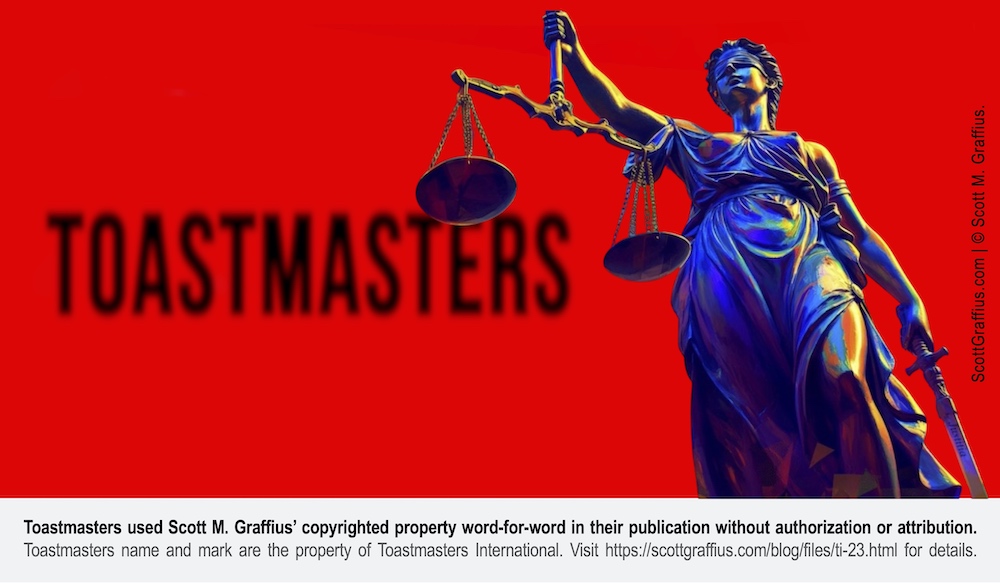

Introduction
Toastmasters used—without authorization or attribution—Scott M. Graffius’ copyrighted property in their publication. Based on the indisputable facts, Toastmasters’ bad acts involve the ethical issue of plagiarism and the legal issue of copyright infringement.
Graffius maintains, enforces, and protects his copyright and other intellectual property rights. This article serves as a clarion call for Toastmasters to face the repercussions of, and take responsibility for, their blatant and damaging violation.

Background
Informed by the research of Bruce W. Tuckman, Ph.D., and Mary Ann C. Jensen, over 100 subsequent studies, and Scott M. Graffius’ first-hand professional experience with, and analysis of, team leadership and performance, Graffius created his ‘Phases of Team Development.’ It’s a unique perspective on the five phases of team development—Forming, Storming, Norming, Performing, and Adjourning—and it’s inclusive of the characteristics/features/traits and strategies for each phase.
Graffius’ ‘Phases of Team Development’ intellectual property is registered with the United States Copyright Office.
Graffius initially developed his intellectual property in 2008, and he periodically refreshes it. For reference, an authorized example of his copyrighted property applicable in this case (2021 edition) is here: https://dx.doi.org/10.13140/RG.2.2.22040.42246 . It is shown below as well (as Exhibit 1).

As shown above, Graffius’ copyright ownership details are integrated into and appear on his copyrighted property. Specifically, it reads: “Copyright © 2008-2021 Scott M. Graffius. All rights reserved. For permission requests, contact scott@scottgraffius.com.”
Conference organizers, businesses, professional associations, government agencies, and universities around the world engage Graffius to deliver compelling talks and workshops. Examples are here.
Graffius’ ‘Phases of Team Development’ intellectual property is central and key to many of those sessions. Details including his rate card, a listing of his engagements, and more are here.
With an authorization/license from Graffius, many organizations around the world have featured and used his copyrighted ‘Phases of Team Development’ work. Select examples include Yale University, Adobe, IEEE, Microsoft, UK Sports Institute, Amsterdam Public Health Research Institute, American Management Association, and many others.
Copyrights protect the intellectual property rights of creators, ensuring they receive recognition and compensation for their work, thus incentivizing creativity and innovation. Graffius is vigilant in upholding, protecting, and enforcing his copyrights and other IP rights.
Toastmasters Used Scott M. Graffius' Copyrighted Property Word-for-Word in Their Publication Without Authorization or Attribution, Violating Graffius’ Intellectual Property Rights
Toastmasters infringing 2022 publication is marked with:
- “Toastmasters International”
- “Area Director Handbook”
- “2022”
- “Guide to a successful year as Area Director”
- “District 101”
Exhibit 2 is below. It shows pages 2, 19, 20, and 21 from the infringing 2022 publication.

Further details follow.
Again, Graffius’ copyright ownership details and permission request information are integrated into and appear on his intellectual property.
Toastmasters did not request nor receive permission to use Graffius’ copyrighted property.
Nevertheless, Toastmasters used Graffius’ 4 January 2021 copyrighted property in their 2022 publication.
Comparing Graffius' copyrighted 4 January 2021 'Phases of Team Development' intellectual property what Toastmasters has in its 2022 publication is reveals Toastmasters’ blatant infringement.
Exhibit 3 is below. It shows Toastmasters extensive—including word-for-word—use of Graffius’ copyrighted property on the characteristics and strategies for the Forming stage of team development.

Exhibit 4 is below. It shows Toastmasters extensive—including word-for-word—use of Graffius’ copyrighted property on the characteristics and strategies for the Storming stage of team development.

Exhibit 5 is below. It shows Toastmasters extensive—including word-for-word—use of Graffius’ copyrighted property on the characteristics and strategies for the Norming stage of team development.

Exhibit 6 is below. It shows Toastmasters extensive—including word-for-word—use of Graffius’ copyrighted property on the characteristics and strategies for the Performing stage of team development.

Exhibit 7 is below. It shows Toastmasters extensive—including word-for-word—use of Graffius’ copyrighted property on the characteristics and strategies for the Adjourning stage of team development.

Further, Toastmasters did not attribute their use of Graffius’ copyrighted property to Graffius. Accordingly, Toastmasters is wrongly leading others to falsely believe that they (or others) are the author and owner of Graffius’ respective copyrighted property.

Conclusion
Again, Graffius’ copyright ownership details and permission request information are integrated into and appear on his intellectual property.
Toastmasters did not request nor receive permission to use Graffius’ copyrighted property.
Nevertheless, Toastmasters used Graffius’ 4 January 2021 copyrighted property in their 2022 infringing publication.
Toastmasters used a significant volume of Graffius’ copyrighted property.
Toastmasters’ infringement included extensive word-for-word use of Graffius’ copyrighted property.
Toastmasters did not attribute their use of Graffius’ copyrighted property to Graffius. Accordingly, Toastmasters is wrongly leading others to falsely believe that they (or others) are the author and owner of Graffius’ respective copyrighted content.
Toastmasters damaged the marketability and value of Graffius’ copyrighted property.
For the aforementioned reasons, Toastmasters’ use of Graffius’ copyrighted property was not ‘fair use’ nor otherwise allowed.
Additionally, the Digital Millennium Copyright Act (DMCA), 17 U.S. Code § 1202, addresses the integrity of copyright management information. It specifies that that removal of copyright information from another’s intellectual property is a crime. That’s for all cases, including educational/non-commercial use. As shown by comparing Graffius' copyrighted property (Exhibit 1) and with page 19 of Toastmasters infringing publication (shown in Exhibit 2), Toastmasters cropped-out or otherwise removed Graffius’ copyright information. That alone makes Toastmasters' actions not ‘fair use’ and a crime.
Toastmasters’ actions in this matter are a disgraceful breach of professional ethics, moral standards, and Graffius’ intellectual property rights.
So long as the infringing publication exists in any form, Toastmasters knowingly and willfully continues to spread misinformation and violate Graffius’ intellectual property rights.
Toastmasters must immediately implement the following three (3) actions:
- Remove the Infringing Material. Electronic Versions: Immediately remove the infringing material from all digital platforms where it is advertised, promoted, sold, or distributed; this includes removing or disabling any online access to it. Physical Copies: If physical copies of the material are in inventory or circulation, stop further distribution; recall any copies already distributed; destroy (recycle) physical copies.
- Issue a Retraction. Publish a formal retraction notice acknowledging the infringement and the steps taken to rectify the situation. The notice will present the facts as they are—the notice will not "spin" or "downplay" the infringement.
- Notify Relevant Parties. Subscribers and Purchasers and other Recipients: Inform the respective subscribers, purchasers, or recipients of the material about the retraction, ensuring transparency about the issue; again, the notice will present the facts as they are—the notice will not "spin" or "downplay" the infringement. Indexes and Databases: Notify any databases or indexing services that list the material so they can update their records accordingly.
Graffius maintains, enforces, and protects his copyright and other intellectual property rights. He reserves his rights in this damaging, disturbing, and consequential matter.
This article serves as a clarion call for Toastmasters to face the repercussions of, and take responsibility for, their blatant and damaging violation.
This case is open.

About Scott M. Graffius

Scott M. Graffius is a global leader in agile project management, an expert on teamwork tradecraft, an authority on temporal dynamics on social media platforms, a creator, a consultant, a trainer, an award-winning author, and an international public speaker.
See his bio to learn more.









About Agile Scrum: Your Quick Start Guide with Step-by-Step Instructions

Shifting customer needs are common in today's marketplace. Businesses must be adaptive and responsive to change while delivering an exceptional customer experience to be competitive.
There are a variety of frameworks supporting the development of products and services, and most approaches fall into one of two broad categories: traditional or agile. Traditional practices such as waterfall engage sequential development, while agile involves iterative and incremental deliverables. Organizations are increasingly embracing agile to manage projects, and best meet their business needs of rapid response to change, fast delivery speed, and more.
With clear and easy to follow step-by-step instructions, Scott M. Graffius's award-winning Agile Scrum: Your Quick Start Guide with Step-by-Step Instructions helps the reader:
- Implement and use the most popular agile framework―Scrum;
- Deliver products in short cycles with rapid adaptation to change, fast time-to-market, and continuous improvement; and
- Support innovation and drive competitive advantage.
Hailed by Literary Titan as “the book highlights the versatility of Scrum beautifully.”
Winner of 17 first place awards.
Agile Scrum: Your Quick Start Guide with Step-by-Step Instructions is available in paperback and ebook/Kindle in the United States and around the world. Some links by country follow.
- 🇧🇷 Brazil
- 🇨🇦 Canada
- 🇨🇿 Czech Republic
- 🇩🇰 Denmark
- 🇫🇮 Finland
- 🇫🇷 France
- 🇩🇪 Germany
- 🇬🇷 Greece
- 🇭🇺 Hungary
- 🇮🇳 India
- 🇮🇪 Ireland
- 🇮🇱 Israel
- 🇮🇹 Italy
- 🇯🇵 Japan
- 🇱🇺 Luxembourg
- 🇲🇽 Mexico
- 🇳🇱 Netherlands
- 🇳🇿 New Zealand
- 🇳🇴 Norway
- 🇪🇸 Spain
- 🇸🇪 Sweden
- 🇨🇭 Switzerland
- 🇦🇪 UAE
- 🇬🇧 United Kingdom
- 🇺🇸 United States

About Agile Transformation: A Brief Story of How an Entertainment Company Developed New Capabilities and Unlocked Business Agility to Thrive in an Era of Rapid Change

Thriving in today's marketplace frequently depends on making a transformation to become more agile. Those successful in the transition enjoy faster delivery speed and ROI, higher satisfaction, continuous improvement, and additional benefits.
Based on actual events, Agile Transformation: A Brief Story of How an Entertainment Company Developed New Capabilities and Unlocked Business Agility to Thrive in an Era of Rapid Change provides a quick (60-90 minute) read about a successful agile transformation at a multinational entertainment and media company, told from the author's perspective as an agile coach.
The award-winning book by Scott M. Graffius is available in paperback and ebook/Kindle in the United States and around the world. Some links by country follow.
- 🇦🇺 Australia
- 🇦🇹 Austria
- 🇧🇷 Brazil
- 🇨🇦 Canada
- 🇨🇿 Czech Republic
- 🇩🇰 Denmark
- 🇫🇮 Finland
- 🇫🇷 France
- 🇩🇪 Germany
- 🇬🇷 Greece
- 🇮🇳 India
- 🇮🇪 Ireland
- 🇯🇵 Japan
- 🇱🇺 Luxembourg
- 🇲🇽 Mexico
- 🇳🇱 Netherlands
- 🇳🇿 New Zealand
- 🇪🇸 Spain
- 🇸🇪 Sweden
- 🇨🇭 Switzerland
- 🇦🇪 United Arab Emirates
- 🇬🇧 United Kingdom
- 🇺🇸 United States


How to Cite This Article
Graffius, Scott M. (2023, October 23). Toastmasters Used Scott M. Graffius' Copyrighted Property Word-for-Word in Their Publication Without Authorization or Attribution. Available at: https://scottgraffius.com/blog/files/ti-23.html. DOI: 10.13140/RG.2.2.18914.34240.


Post-Publication Notes
If there are any supplements or updates to this article after the date of publication, they will appear here.


Content Acknowledgements
This article uses limited excerpts from Toastmasters International content, attributed to Toastmasters International and used under fair use for news reporting and analysis.
Toastmasters International name, mark, and content (except for what was stolen from others) are the property of Toastmasters International.
Graffius’ ‘Phases of Team Development’ is copyright © Scott M. Graffius. All rights reserved.


Copyright
Copyright © Scott M. Graffius. All rights reserved.
Content on this site—including text, images, videos, and data—may not be used for training or input into any artificial intelligence, machine learning, or automatized learning systems, or published, broadcast, rewritten, or redistributed without the express written permission of Scott M. Graffius.

Scott M. Graffius' 'Phases of Team Development' was Spotlighted in Journal of Neurosurgery


Scott M. Graffius' Work on Team Tradecraft
Informed by the research of Bruce W. Tuckman and Mary Ann C. Jensen, over 100 subsequent studies, and Scott M. Graffius' first-hand professional experience with, and analysis of, team leadership and performance, Graffius created his ‘Phases of Team Development’ as a unique perspective and visual conveying the five phases of team development — Forming, Storming, Norming, Performing, and Adjourning — inclusive of a graph showing how performance varies by phase, as well as the characteristics and strategies for each phase.
Graffius' intellectual property (IP) is registered with the United States Copyright Office.
Graffius initially developed his ‘Phases of Team Development’ unique material in 2008, and he periodically refreshes it.
For reference, the visual for the current (2024) edition is below and the details are here.

Organizations around the world engage Graffius to deliver compelling talks and workshops. To date, he's presented sessions at 91 conferences and other events across 25 countries:
- Armenia,
- Australia,
- Brazil,
- Canada,
- Czech Republic,
- Finland,
- France,
- Germany,
- Greece,
- Hong Kong,
- Hungary,
- India, Ireland,
- Lithuania,
- Luxembourg,
- Nepal,
- Netherlands,
- New Zealand,
- Norway,
- Romania,
- Sweden,
- Switzerland,
- United Arab Emirates,
- United Kingdom,
- and the United States.

Graffius ‘Phases of Team Development’ IP is central and key to many of those sessions. His rate card and a listing of his engagements are at https://scottgraffius.com/resources/Exceptional-PPM-and-PMO-Solutions-Rate-Card-for-2024-2025-v24071607.pdf and https://scottgraffius.com/publicspeaker.html, respectively.
With an authorization/license from Graffius, his ‘Phases of Team Development’ intellectual property is featured and used by businesses, professional associations, government agencies, and universities around the globe. Examples include:
- Adobe,
- American Management Association,
- Amsterdam Public Health Research Institute,
- Bayer
- Boston University,
- Broadcom,
- Cisco,
- Deimos Aerospace,
- DevOps Institute,
- Erste Group Bank AG (Austria),
- FINAT,
- Ford Motor Company,
- FSU College of Medicine,
- Hasso Plattner Institute,
- IEEE,
- James Madison University,
- Johns Hopkins University,
- LeadingEng,
- London South Bank University,
- Manufacturers Alliance,
- Microsoft,
- New Zealand Government,
- Oracle,
- Royal Australasian College of Physicians,
- TBS Switzerland,
- Torrens University Australia,
- Tufts University,
- U.S. National Park Service,
- U.S. Tennis Association,
- UC San Diego,
- UK Sports Institute,
- University of Galway Ireland,
- Victorian Institute of Technology (Australia),
- Virginia Tech,
- Warsaw University,
- Western Sydney University,
- World Resources Institute,
- Yale University,
- ZHAW Zurich University of Applied Sciences,
- and many others.
The Journal of Neurosurgery (JNS) was added to this list! A JNS article — Muhlestein, W. E., Chang, K. W. C., Justice, D., Johnson, S., Brown, S., & Popadich, M. (2023). Developing interdisciplinary research teams in neurosurgery: key elements to success in brachial plexus and peripheral nerve surgery. Journal of Neurosurgery, 139 (6), 1552-1559. https://doi.org/10.3171/2023.4.JNS222254 — featured Graffius' 'Phases of Team Development' intellectual property on teamwork tradecraft.
The first page of the article is shown below.

Next, citation 40 (a reference to Graffius' work) annotation is shown below.

Team development material, based on Graffius' work, is shown below.

Lastly, citation 40 in the References section is shown below.

Read on to learn:
- About the Journal of Neurosurgery,
- About Scott M. Graffius,
- How to Cite This Article,
- and more.

About the Journal of Neurosurgery
The Journal of Neurosurgery (JNS) is a leading, peer-reviewed medical journal dedicated to advancing the field of neurosurgery. Published by the American Association of Neurological Surgeons (AANS), it serves as a premier platform for original research, clinical studies, and innovative techniques in the diagnosis and treatment of neurological conditions. With a history spanning over 75 years, JNS is widely recognized for its commitment to promoting scientific discovery and clinical excellence. Its global readership includes neurosurgeons, researchers, and healthcare professionals striving to improve patient outcomes.

About Scott M. Graffius

Scott M. Graffius is an agile project management expert practitioner, consultant, award-winning author, and international public speaker.
Graffius has generated more than USD $1.9 billion in business value for organizations served, including Fortune 500 companies. Businesses and industries range from technology (including R&D and AI) to entertainment, financial services, and healthcare, government, social media, and more.
Graffius leads the professional services firm Exceptional PPM and PMO Solutions, along with its subsidiary Exceptional Agility. These consultancies offer strategic and tactical advisory, training, embedded talent, and consulting services to public, private, and government sectors. They help organizations enhance their capabilities and results in agile, project management, program management, portfolio management, and PMO leadership, supporting innovation and driving competitive advantage. The consultancies confidently back services with a Delighted Client Guarantee™. Graffius is a former vice president of project management with a publicly traded provider of diverse consumer products and services over the Internet. Before that, he ran and supervised the delivery of projects and programs in public and private organizations with businesses ranging from e-commerce to advanced technology products and services, retail, manufacturing, entertainment, and more. He has experience with consumer, business, reseller, government, and international markets.
He is the author of two award-winning books.
- His first book, Agile Scrum: Your Quick Start Guide with Step-by-Step Instructions (ISBN-13: 9781533370242), received 17 awards.
- His second book is Agile Transformation: A Brief Story of How an Entertainment Company Developed New Capabilities and Unlocked Business Agility to Thrive in an Era of Rapid Change (ISBN-13: 9781072447962). BookAuthority named it one of the best Scrum books of all time.
Organizations around the world invite Graffius to speak on tech (including AI), agile, project management, program management, portfolio management, and PMO leadership. He has developed and delivered unique and compelling talks and workshops. To date, Graffius has delivered 91 sessions across 25 countries. Select examples of events include Agile Trends Gov, BSides (Newcastle Upon Tyne), Conf42 Quantum Computing, DevDays Europe, DevOps Institute, DevOpsDays (Geneva), Frug’Agile, IEEE, Microsoft, Scottish Summit, Scrum Alliance RSG (Nepal), Techstars, and W Love Games International Video Game Development Conference (Helsinki), and more. With an average rating of 4.81 (on a scale of 1-5), his sessions are highly valued.
Prominent businesses, professional associations, government agencies, and universities have featured Graffius and his work including content from his books, talks, workshops, and more. Select examples include:
- Adobe,
- American Management Association,
- Amsterdam Public Health Research Institute,
- Bayer,
- Boston University,
- Broadcom,
- Cisco,
- Constructor University Germany,
- Deimos Aerospace,
- DevOps Institute,
- EU's European Commission,
- Ford Motor Company,
- Hasso Plattner Institute Germany,
- IEEE,
- Johns Hopkins University,
- London South Bank University,
- Microsoft,
- National Academy of Sciences,
- New Zealand Government,
- Oracle,
- Pinterest Inc.,
- Project Management Institute,
- TBS Switzerland,
- Torrens University Australia,
- Tufts University,
- UC San Diego,
- UK Sports Institute,
- University of Galway Ireland,
- U.S. Department of Energy,
- U.S. National Park Service,
- U.S. Tennis Association,
- Virginia Tech,
- Warsaw University of Technology,
- Yale University,
- and many others.
Graffius has been actively involved with the Project Management Institute (PMI) in the development of professional standards. He was a member of the team which produced the Practice Standard for Work Breakdown Structures—Second Edition. Graffius was a contributor and reviewer of A Guide to the Project Management Body of Knowledge—Sixth Edition, The Standard for Program Management—Fourth Edition, and The Practice Standard for Project Estimating—Second Edition. He was also a subject matter expert reviewer of content for the PMI’s Congress. Beyond the PMI, Graffius also served as a member of the review team for two of the Scrum Alliance’s Global Scrum Gatherings.
Graffius has a bachelor’s degree in psychology with a focus in Human Factors. He holds eight professional certifications:
- Certified SAFe 6 Agilist (SA),
- Certified Scrum Professional - ScrumMaster (CSP-SM),
- Certified Scrum Professional - Product Owner (CSP-PO),
- Certified ScrumMaster (CSM),
- Certified Scrum Product Owner (CSPO),
- Project Management Professional (PMP),
- Lean Six Sigma Green Belt (LSSGB), and
- IT Service Management Foundation (ITIL).
He is an active member of the Scrum Alliance, the Project Management Institute (PMI), and the Institute of Electrical and Electronics Engineers (IEEE).
He divides his time between Los Angeles and Paris, France.









About Agile Scrum: Your Quick Start Guide with Step-by-Step Instructions

Shifting customer needs are common in today's marketplace. Businesses must be adaptive and responsive to change while delivering an exceptional customer experience to be competitive.
There are a variety of frameworks supporting the development of products and services, and most approaches fall into one of two broad categories: traditional or agile. Traditional practices such as waterfall engage sequential development, while agile involves iterative and incremental deliverables. Organizations are increasingly embracing agile to manage projects, and best meet their business needs of rapid response to change, fast delivery speed, and more.
With clear and easy to follow step-by-step instructions, Scott M. Graffius's award-winning Agile Scrum: Your Quick Start Guide with Step-by-Step Instructions helps the reader:
- Implement and use the most popular agile framework―Scrum;
- Deliver products in short cycles with rapid adaptation to change, fast time-to-market, and continuous improvement; and
- Support innovation and drive competitive advantage.
Hailed by Literary Titan as “the book highlights the versatility of Scrum beautifully.”
Winner of 17 first place awards.
Agile Scrum: Your Quick Start Guide with Step-by-Step Instructions is available in paperback and ebook/Kindle in the United States and around the world. Some links by country follow.
- 🇧🇷 Brazil
- 🇨🇦 Canada
- 🇨🇿 Czech Republic
- 🇩🇰 Denmark
- 🇫🇮 Finland
- 🇫🇷 France
- 🇩🇪 Germany
- 🇬🇷 Greece
- 🇭🇺 Hungary
- 🇮🇳 India
- 🇮🇪 Ireland
- 🇮🇱 Israel
- 🇮🇹 Italy
- 🇯🇵 Japan
- 🇱🇺 Luxembourg
- 🇲🇽 Mexico
- 🇳🇱 Netherlands
- 🇳🇿 New Zealand
- 🇳🇴 Norway
- 🇪🇸 Spain
- 🇸🇪 Sweden
- 🇨🇭 Switzerland
- 🇦🇪 UAE
- 🇬🇧 United Kingdom
- 🇺🇸 United States

About Agile Transformation: A Brief Story of How an Entertainment Company Developed New Capabilities and Unlocked Business Agility to Thrive in an Era of Rapid Change

Thriving in today's marketplace frequently depends on making a transformation to become more agile. Those successful in the transition enjoy faster delivery speed and ROI, higher satisfaction, continuous improvement, and additional benefits.
Based on actual events, Agile Transformation: A Brief Story of How an Entertainment Company Developed New Capabilities and Unlocked Business Agility to Thrive in an Era of Rapid Change provides a quick (60-90 minute) read about a successful agile transformation at a multinational entertainment and media company, told from the author's perspective as an agile coach.
The award-winning book by Scott M. Graffius is available in paperback and ebook/Kindle in the United States and around the world. Some links by country follow.
- 🇦🇺 Australia
- 🇦🇹 Austria
- 🇧🇷 Brazil
- 🇨🇦 Canada
- 🇨🇿 Czech Republic
- 🇩🇰 Denmark
- 🇫🇮 Finland
- 🇫🇷 France
- 🇩🇪 Germany
- 🇬🇷 Greece
- 🇮🇳 India
- 🇮🇪 Ireland
- 🇯🇵 Japan
- 🇱🇺 Luxembourg
- 🇲🇽 Mexico
- 🇳🇱 Netherlands
- 🇳🇿 New Zealand
- 🇪🇸 Spain
- 🇸🇪 Sweden
- 🇨🇭 Switzerland
- 🇦🇪 United Arab Emirates
- 🇬🇧 United Kingdom
- 🇺🇸 United States


How to Cite This Article
Graffius, Scott M. (2024, December 20). Scott M. Graffius' 'Phases of Team Development' was Spotlighted in Journal of Neurosurgery. Available at: https://scottgraffius.com/blog/files/jns-2024.html. DOI: 10.13140/RG.2.2.31746.59849.


Post-Publication Notes
If there are any supplements or updates to this article after the date of publication, they will appear here.


Content Acknowledgements
This article includes limited excerpts from the Journal of Neurosurgery, attributed to the Journal of Neurosurgery and used under fair use for news reporting and analysis.
Journal of Neurosurgery name, mark and content are the property of the American Association of Neurological Surgeons.
Graffius’ ‘Phases of Team Development’ is copyright © Scott M. Graffius. All rights reserved. Visit ScottGraffius.com to learn more.


Short Link for Article
The short link for this article is https://bit.ly/the-jns


Copyright
Copyright © Scott M. Graffius. All rights reserved.
Content on this site—including text, images, videos, and data—may not be used for training or input into any artificial intelligence, machine learning, or automatized learning systems, or published, broadcast, rewritten, or redistributed without the express written permission of Scott M. Graffius.

Verizon Features Scott M. Graffius


Scott M. Graffius' Intellectual Property on Teamwork
Informed by the research of Bruce W. Tuckman and Mary Ann C. Jensen, over 100 subsequent studies, and Scott M. Graffius' first-hand professional experience with, and analysis of, team leadership and performance, Graffius created his ‘Phases of Team Development’ as a unique perspective and visual conveying the five phases of team development — Forming, Storming, Norming, Performing, and Adjourning — inclusive of a graph showing how performance varies by phase, as well as the characteristics and strategies for each phase.
Graffius' intellectual property (IP) is registered with the United States Copyright Office.
Graffius initially developed his ‘Phases of Team Development’ unique material in 2008, and he periodically refreshes it.
For reference, the visual for the current (2024) edition is below and the details are here.

Organizations around the world engage Graffius to deliver compelling talks and workshops. To date, he's presented sessions at 91 conferences and other events across 25 countries:
- Armenia,
- Australia,
- Brazil,
- Canada,
- Czech Republic,
- Finland,
- France,
- Germany,
- Greece,
- Hong Kong,
- Hungary,
- India, Ireland,
- Lithuania,
- Luxembourg,
- Nepal,
- Netherlands,
- New Zealand,
- Norway,
- Romania,
- Sweden,
- Switzerland,
- United Arab Emirates,
- United Kingdom,
- and the United States.

Graffius ‘Phases of Team Development’ IP is central and key to many of those sessions. His rate card and a listing of his engagements are at https://scottgraffius.com/resources/Exceptional-PPM-and-PMO-Solutions-Rate-Card-for-2024-2025-v24071607.pdf and https://scottgraffius.com/publicspeaker.html, respectively.
With an authorization/license from Graffius, his ‘Phases of Team Development’ intellectual property is featured and used by businesses, professional associations, government agencies, and universities around the globe. Examples include:
- Adobe,
- American Management Association,
- Amsterdam Public Health Research Institute,
- Bayer
- Boston University,
- Broadcom,
- Cisco,
- Deimos Aerospace,
- DevOps Institute,
- Erste Group Bank AG (Austria),
- FINAT,
- Ford Motor Company,
- FSU College of Medicine,
- Hasso Plattner Institute,
- IEEE,
- James Madison University,
- Johns Hopkins University,
- LeadingEng,
- London South Bank University,
- Manufacturers Alliance,
- Microsoft,
- New Zealand Government,
- Oracle,
- Mary Raum (Professor of National Security Affairs, United States Naval War College),
- Royal Australasian College of Physicians,
- TBS Switzerland,
- Torrens University Australia,
- Tufts University,
- U.S. National Park Service,
- U.S. Tennis Association,
- UC San Diego,
- UK Sports Institute,
- University of Galway Ireland,
- Victorian Institute of Technology (Australia),
- Virginia Tech,
- Warsaw University,
- Western Sydney University,
- World Resources Institute,
- Yale University,
- ZHAW Zurich University of Applied Sciences,
- and many others.
Verizon was added to this list!
As shown below, Graffius' work was spotlighted in two articles.

Both the 14 May 2024 and 21 May 2024 articles by Verizon Associate Director Cheryl Abellanoza, PhD, highlight and link to Graffius' 'Phases of Team Development' intellectual property on teamwork. They link to the 2021 edition of Graffius' work, here and here. The current (2024) edition is here.
Read on to learn:
- About Verizon,
- About Scott M. Graffius,
- How to Cite This Article,
- and more.

About Verizon
Verizon (NYSE: VZ) is a leading provider of technology, communications, information, and entertainment products and services. Founded in 1983 and headquartered in New York City, Verizon is a global leader in delivering innovative solutions across mobility, broadband, and digital platforms. The company operates one of the most reliable wireless networks in the United States, serving millions of consumers, businesses, and government customers. In addition to its telecommunications services, Verizon is at the forefront of advancing 5G technology, aiming to transform industries such as healthcare, manufacturing, and public safety. Recognized for its forward-thinking strategies, Verizon continues to shape the future of connectivity and digital transformation.

About Scott M. Graffius

Scott M. Graffius is an agile project management expert practitioner, consultant, award-winning author, and international public speaker.
Graffius has generated more than USD $1.9 billion in business value for organizations served, including Fortune 500 companies. Businesses and industries range from technology (including R&D and AI) to entertainment, financial services, and healthcare, government, social media, and more.
Graffius leads the professional services firm Exceptional PPM and PMO Solutions, along with its subsidiary Exceptional Agility. These consultancies offer strategic and tactical advisory, training, embedded talent, and consulting services to public, private, and government sectors. They help organizations enhance their capabilities and results in agile, project management, program management, portfolio management, and PMO leadership, supporting innovation and driving competitive advantage. The consultancies confidently back services with a Delighted Client Guarantee™. Graffius is a former vice president of project management with a publicly traded provider of diverse consumer products and services over the Internet. Before that, he ran and supervised the delivery of projects and programs in public and private organizations with businesses ranging from e-commerce to advanced technology products and services, retail, manufacturing, entertainment, and more. He has experience with consumer, business, reseller, government, and international markets.
He is the author of two award-winning books.
- His first book, Agile Scrum: Your Quick Start Guide with Step-by-Step Instructions (ISBN-13: 9781533370242), received 17 awards.
- His second book is Agile Transformation: A Brief Story of How an Entertainment Company Developed New Capabilities and Unlocked Business Agility to Thrive in an Era of Rapid Change (ISBN-13: 9781072447962). BookAuthority named it one of the best Scrum books of all time.
Organizations around the world invite Graffius to speak on tech (including AI), agile, project management, program management, portfolio management, and PMO leadership. He has developed and delivered unique and compelling talks and workshops. To date, Graffius has delivered 91 sessions across 25 countries. Select examples of events include Agile Trends Gov, BSides (Newcastle Upon Tyne), Conf42 Quantum Computing, DevDays Europe, DevOps Institute, DevOpsDays (Geneva), Frug’Agile, IEEE, Microsoft, Scottish Summit, Scrum Alliance RSG (Nepal), Techstars, and W Love Games International Video Game Development Conference (Helsinki), and more. With an average rating of 4.81 (on a scale of 1-5), his sessions are highly valued.
Prominent businesses, professional associations, government agencies, and universities have featured Graffius and his work including content from his books, talks, workshops, and more. Select examples include:
- Adobe,
- American Management Association,
- Amsterdam Public Health Research Institute,
- Bayer,
- Boston University,
- Broadcom,
- Cisco,
- Constructor University Germany,
- Deimos Aerospace,
- DevOps Institute,
- EU's European Commission,
- Ford Motor Company,
- Hasso Plattner Institute Germany,
- IEEE,
- Johns Hopkins University,
- London South Bank University,
- Microsoft,
- National Academy of Sciences,
- New Zealand Government,
- Oracle,
- Pinterest Inc.,
- Project Management Institute,
- TBS Switzerland,
- Torrens University Australia,
- Tufts University,
- UC San Diego,
- UK Sports Institute,
- University of Galway Ireland,
- U.S. Department of Energy,
- U.S. National Park Service,
- U.S. Tennis Association,
- Virginia Tech,
- Warsaw University of Technology,
- Yale University,
- and many others.
Graffius has been actively involved with the Project Management Institute (PMI) in the development of professional standards. He was a member of the team which produced the Practice Standard for Work Breakdown Structures—Second Edition. Graffius was a contributor and reviewer of A Guide to the Project Management Body of Knowledge—Sixth Edition, The Standard for Program Management—Fourth Edition, and The Practice Standard for Project Estimating—Second Edition. He was also a subject matter expert reviewer of content for the PMI’s Congress. Beyond the PMI, Graffius also served as a member of the review team for two of the Scrum Alliance’s Global Scrum Gatherings.
Graffius has a bachelor’s degree in psychology with a focus in Human Factors. He holds eight professional certifications:
- Certified SAFe 6 Agilist (SA),
- Certified Scrum Professional - ScrumMaster (CSP-SM),
- Certified Scrum Professional - Product Owner (CSP-PO),
- Certified ScrumMaster (CSM),
- Certified Scrum Product Owner (CSPO),
- Project Management Professional (PMP),
- Lean Six Sigma Green Belt (LSSGB), and
- IT Service Management Foundation (ITIL).
He is an active member of the Scrum Alliance, the Project Management Institute (PMI), and the Institute of Electrical and Electronics Engineers (IEEE).
He divides his time between Los Angeles and Paris, France.









About Agile Scrum: Your Quick Start Guide with Step-by-Step Instructions

Shifting customer needs are common in today's marketplace. Businesses must be adaptive and responsive to change while delivering an exceptional customer experience to be competitive.
There are a variety of frameworks supporting the development of products and services, and most approaches fall into one of two broad categories: traditional or agile. Traditional practices such as waterfall engage sequential development, while agile involves iterative and incremental deliverables. Organizations are increasingly embracing agile to manage projects, and best meet their business needs of rapid response to change, fast delivery speed, and more.
With clear and easy to follow step-by-step instructions, Scott M. Graffius's award-winning Agile Scrum: Your Quick Start Guide with Step-by-Step Instructions helps the reader:
- Implement and use the most popular agile framework―Scrum;
- Deliver products in short cycles with rapid adaptation to change, fast time-to-market, and continuous improvement; and
- Support innovation and drive competitive advantage.
Hailed by Literary Titan as “the book highlights the versatility of Scrum beautifully.”
Winner of 17 first place awards.
Agile Scrum: Your Quick Start Guide with Step-by-Step Instructions is available in paperback and ebook/Kindle in the United States and around the world. Some links by country follow.
- 🇧🇷 Brazil
- 🇨🇦 Canada
- 🇨🇿 Czech Republic
- 🇩🇰 Denmark
- 🇫🇮 Finland
- 🇫🇷 France
- 🇩🇪 Germany
- 🇬🇷 Greece
- 🇭🇺 Hungary
- 🇮🇳 India
- 🇮🇪 Ireland
- 🇮🇱 Israel
- 🇮🇹 Italy
- 🇯🇵 Japan
- 🇱🇺 Luxembourg
- 🇲🇽 Mexico
- 🇳🇱 Netherlands
- 🇳🇿 New Zealand
- 🇳🇴 Norway
- 🇪🇸 Spain
- 🇸🇪 Sweden
- 🇨🇭 Switzerland
- 🇦🇪 UAE
- 🇬🇧 United Kingdom
- 🇺🇸 United States

About Agile Transformation: A Brief Story of How an Entertainment Company Developed New Capabilities and Unlocked Business Agility to Thrive in an Era of Rapid Change

Thriving in today's marketplace frequently depends on making a transformation to become more agile. Those successful in the transition enjoy faster delivery speed and ROI, higher satisfaction, continuous improvement, and additional benefits.
Based on actual events, Agile Transformation: A Brief Story of How an Entertainment Company Developed New Capabilities and Unlocked Business Agility to Thrive in an Era of Rapid Change provides a quick (60-90 minute) read about a successful agile transformation at a multinational entertainment and media company, told from the author's perspective as an agile coach.
The award-winning book by Scott M. Graffius is available in paperback and ebook/Kindle in the United States and around the world. Some links by country follow.
- 🇦🇺 Australia
- 🇦🇹 Austria
- 🇧🇷 Brazil
- 🇨🇦 Canada
- 🇨🇿 Czech Republic
- 🇩🇰 Denmark
- 🇫🇮 Finland
- 🇫🇷 France
- 🇩🇪 Germany
- 🇬🇷 Greece
- 🇮🇳 India
- 🇮🇪 Ireland
- 🇯🇵 Japan
- 🇱🇺 Luxembourg
- 🇲🇽 Mexico
- 🇳🇱 Netherlands
- 🇳🇿 New Zealand
- 🇪🇸 Spain
- 🇸🇪 Sweden
- 🇨🇭 Switzerland
- 🇦🇪 United Arab Emirates
- 🇬🇧 United Kingdom
- 🇺🇸 United States


How to Cite This Article
Graffius, Scott M. (2024, June 3). Verizon Features Scott M. Graffius. Available at: https://scottgraffius.com/blog/files/verizon-features-scott-m-graffius.html. DOI: 10.13140/RG.2.2.11276.42887.


Post-Publication Notes
If there are any supplements or updates to this article after the date of publication, they will appear here.


Content Acknowledgements
This article includes limited excerpts from Verizon Associate Director Cheryl Abellanoza, PhD, attributed to Cheryl Abellanoza, PhD, and used under fair use for news reporting and analysis.
Verizon name and mark are the property of Verizon.
Scott M. Graffius’ ‘Phases of Team Development’ is copyright © Scott M. Graffius.


Short Link for Article
The short link for this article is https://bit.ly/team-vz


Copyright
Copyright © Scott M. Graffius. All rights reserved.
Content on this site—including text, images, videos, and data—may not be used for training or input into any artificial intelligence, machine learning, or automatized learning systems, or published, broadcast, rewritten, or redistributed without the express written permission of Scott M. Graffius.

Government of Finland Agency Features Graffius' Phases of Team Development IP
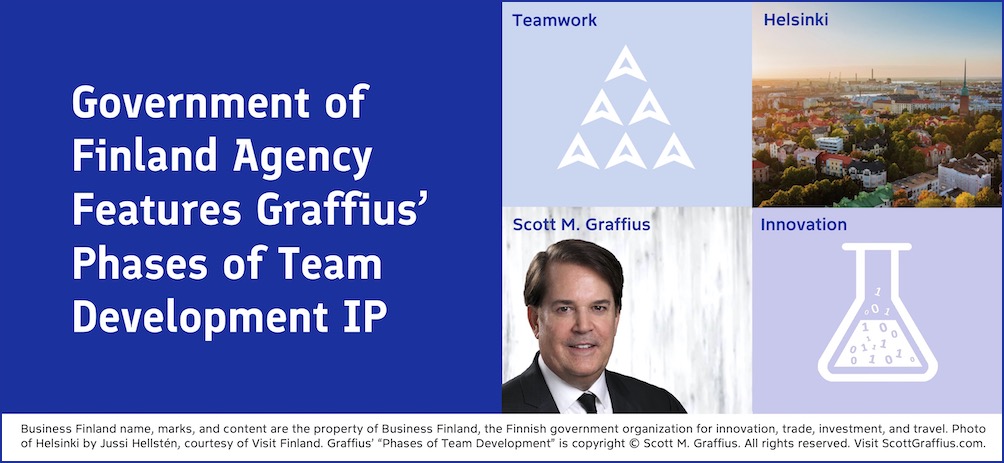

Introduction with Background
Informed by the research of Bruce W. Tuckman and Mary Ann C. Jensen, over 100 subsequent studies, and Scott M. Graffius' first-hand professional experience with, and analysis of, team leadership and performance, Graffius created his ‘Phases of Team Development’ as a unique perspective and visual conveying the five phases of team development — Forming, Storming, Norming, Performing, and Adjourning — inclusive of a graph showing how performance varies by phase, as well as the characteristics and strategies for each phase.
Graffius' intellectual property (IP) is registered with the United States Copyright Office.
Graffius initially developed his 'Phases of Team Development' unique material in 2008, and he periodically refreshes it.
For reference, the visual for the current (2025) edition is below and the details are here.

Organizations around the world engage Graffius to deliver compelling talks and workshops. To date, he's presented sessions at 95 conferences and other events across 25 countries:
- Armenia,
- Australia,
- Brazil,
- Canada,
- Czech Republic,
- Finland,
- France,
- Germany,
- Greece,
- Hong Kong,
- Hungary,
- India, Ireland,
- Lithuania,
- Luxembourg,
- Nepal,
- Netherlands,
- New Zealand,
- Norway,
- Romania,
- Sweden,
- Switzerland,
- United Arab Emirates,
- United Kingdom,
- and the United States.
Graffius 'Phases of Team Development' IP is central and key to many of those sessions. His rate card and a listing of his engagements are at https://scottgraffius.com/resources/Exceptional-PPM-and-PMO-Solutions-Rate-Card-for-2024-2025-v24071607.pdf and https://scottgraffius.com/publicspeaker.html, respectively.
With authorization/license from Graffius, his 'Phases of Team Development' intellectual property is featured and used by businesses, professional associations, government agencies, universities, and others around the world. Examples include:
- Adobe,
- American Management Association,
- Amsterdam Public Health Research Institute,
- Bayer
- Boston University,
- Broadcom,
- Cisco,
- Deimos Aerospace,
- DevOps Institute,
- Erste Group Bank AG (Austria),
- FINAT,
- Ford Motor Company,
- FSU College of Medicine,
- Hasso Plattner Institute,
- IEEE,
- James Madison University,
- Johns Hopkins University,
- LeadingEng,
- London South Bank University,
- Manufacturers Alliance,
- Microsoft,
- New Zealand Government,
- Oracle,
- Mary Raum (Professor of National Security Affairs, United States Naval War College),
- Royal Australasian College of Physicians,
- TBS Switzerland,
- Torrens University Australia,
- Tufts University,
- U.S. National Park Service,
- U.S. Soccer,
- U.S. Tennis Association,
- UC San Diego,
- UK Sports Institute,
- University of Galway Ireland,
- Victorian Institute of Technology (Australia),
- Virginia Tech,
- Warsaw University,
- Western Sydney University,
- World Resources Institute,
- Yale University,
- ZHAW Zurich University of Applied Sciences,
- and many others.
A Government of Finland Agency was Added to the List!
Business Finland is the Finnish government organization dedicated to promoting innovation, trade, investment, and travel. Operating under the Ministry of Employment and the Economy, it plays a central role in strengthening Finland’s global competitiveness and fostering sustainable economic growth. The agency provides funding for research and development, supports startups and established enterprises, and connects Finnish companies with international markets. Business Finland is also known for initiatives such as Talent Boost, which helps attract and integrate international talent into Finland’s workforce. With offices in dozens of countries and an extensive global network, it serves as Finland’s official link to the international business community. Widely respected as a trusted government partner, Business Finland is recognized for advancing innovation and enabling collaboration between businesses, academia, and the public sector. Its scope, influence, and reputation make it one of the most important economic development agencies in Europe.
Business Finland featured Scott M. Graffius’ Phases of Team Development framework in their Talent Boost leadership program on August 6, 2025. A photo from the event is shown below.
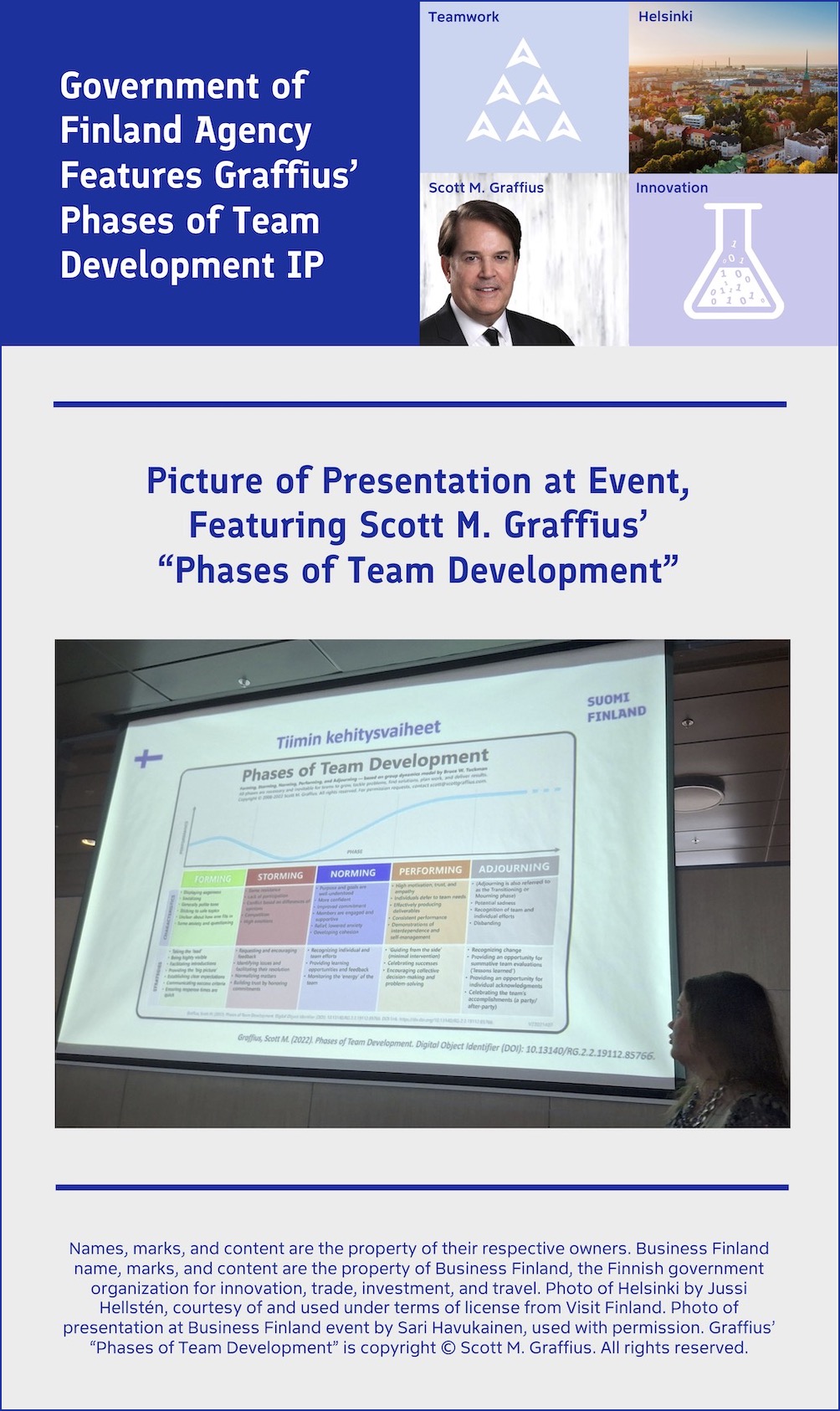
To learn more about Graffius' 'Phases of Team Development' work, visit here.
The Business Finland event is described in a LinkedIn post here.

More
Continue reading for:
- Additional Articles,
- About Scott M. Graffius,
- How to Cite This Article,
- and more.

Additional Articles
You may be interested in these stories.
Environmental Science Journal References Scott M. Graffius’ Project Management Work
AI Institute of Switzerland Features Scott M. Graffius’ Work on Algorithms
Exotic Team Dynamics: The New Frontier of Human–AI Collaboration
Scott M. Graffius’ Work Featured at ACM DIS ’25
Climbing the Ladder: The Head of Agile/PMO’s Organizational Proximity to the CEO is Closer Than Ever
Harness Sci-Fi and Speculative Design While Embracing Imperfection to Drive Innovation and Proactively Predict and Prepare for the Future
Scott M. Graffius’ “Agile Scrum” Book Featured in a Publication of the Associação Nacional de Educação Católica do Brasil (ANEC)
Setting Direction with OKRs and Tracking Progress with KPIs: A Guide for Agile, Project Management, and Tech Teams
AI Showcase Showdown: Ranking AI Accuracy on Project Management Basics
BookAuthority Features “Agile Scrum” by Scott M. Graffius in “10 Agile Software Development Books That Define the Field”
Exploring Team Dynamics, Adaptability, and Creative Problem-Solving Through Felix the Cat’s Metaphorical Toolkit
Mind Games and Master Plans: How PsyOps Exploit Psychological Phenomena
The “Pants-on-Fire Index for AI”
16 Causes of Technical Debt and How to Avoid It
PMI’s Infinity AI Gets the Basics of Team Development Alarmingly and Repeatedly Wrong
Agile for Unicorns: 7 Keys to Thrive; Scott M. Graffius’ Workshop
Scott M. Graffius’ “Agile Scrum: Your Quick Start Guide with Step-by-Step Instructions” Featured in Prestigious National Academies of Sciences Publication
Meta and Anduril’s EagleEye and the Future of XR: How Gaming, AI, and Agile Are Transforming Defense
"Agile Protocol" and the Power of Satire, Parody, and Humor
AI in Agile: Benefits, Risks, Outlook
Hostinger Highlights Scott M. Graffius’ “Agile Protocol” Book in Feature on Software Projects
French Ministry of Culture Links to Scott M. Graffius Research in Their Guide for Responsible Digital Communication
National Science Foundation’s LTER Network Features Scott M. Graffius’ Phases of Team Development IP
Waterfall vs. Agile: What’s Fixed, What’s Flexible, and Why It Matters
Scott M. Graffius Delivering $2.3 Billion in Value Through AI, Agile, and Project/PMO Leadership
The Problem with Heroes in Agile
The 3 Vital Rules of Science: What They Are and Why They Matter
“Agile Protocol: The Transformation Ultimatum” Lands on the Amazon Best Sellers List!
Scott M. Graffius Recognized as a Top Thought Leader in Digital Disruption by Thinkers360
“Agile Protocol: The Transformation Ultimatum” by Scott M. Graffius Crashes the Book Scene with Satirical Firepower
NCKU in Taiwan Integrates Graffius' 'Phases of Team Development' into Its Curriculum
The Art and Science of Aligning Initiatives with Strategic Objectives
RGPV University Adds Scott M. Graffius’ "Agile Scrum: Your Quick Start Guide with Step-by-Step Instructions" to Its Syllabus
Introducing ‘Engage or Fade: Decoding the Half-Life of Digital Resonance’ – A New Talk by Scott M. Graffius
Dropbox Company (Nira) Taps into Scott M. Graffius’ Expertise in Strategic Planning
Reporting Errors in a Publication: A Case Study on ‘Frontiers in Public Health’
NESEA Conference Session on Innovation Highlights Scott M. Graffius' 'Phases of Team Development'
U.S. Soccer Scores with Scott M. Graffius' Intellectual Property on Teamwork
U.S. Department of Commerce Partner (IEDC) Features Scott M. Graffius’ Intellectual Property
How Long Do Your Posts Live? AI Critiques Scott M. Graffius’ Research on the Half-Life of Social Media
Agile's Journey Through the Decades
Scott M. Graffius' Role in Advancing Project Management Institute (PMI) Standards Excellence
Most Valuable IT Certifications: Update for 2025
The PMI + Agile Alliance Merger: A Recipe for Success?
When Agile, AI, and Strategic Thinking Converge
Scott M. Graffius’ Phases of Team Development: 2025 Update
Lifespan (Half-Life) of Social Media Posts: Update for 2025
Verizon Features Scott M. Graffius
Do Not Read This Article! An Exploration of the Streisand Effect and Other Phenomena
Scott M. Graffius' 'Phases of Team Development' was Spotlighted in Journal of Neurosurgery
Pinterest Japan Uses Graffius’ Research on Temporal Dynamics on Social Media Platforms
Hochschule Coburg (Coburg University) Germany Uses Scott M. Graffius’ Phases of Team Development IP in Coursework on Agile Development
Wild World of Team Dynamics [Updated Two-Minute Video]
EU Europass Teacher Academy Features Scott M. Graffius’ ‘Phases of Team Development’ in Leadership Training
Side-by-Side Comparison of Retrospectives and Hot Washes
Constructor University 2024 Advanced Software Technology Handbook References Scott M. Graffius' Work on Team Dynamics
Strategies for Medical Team Success Featured Scott M. Graffius’ ‘Phases of Team Development’ Intellectual Property
SBG Neumark — Europe’s Largest Distribution Transformer Plant — Powers Up with Scott M. Graffius’ Intellectual Property
Scott M. Graffius’ Intellectual Property was Employed by the NHS — the Largest Single-Payer Healthcare System in Europe
Luxury Unwrapped: The Ultimate Holiday Gift Guide for Every Budget
Singapore Institute of Technology Features Work of Scott M. Graffius
Tufts University Features Scott M. Graffius 'Phases of Team Development' Intellectual Property
'Cat Herders': Retelling the Massive Success Story
Pennsylvania State Agency Used Scott M. Graffius' Intellectual Property
Copyright Infringement in a Book Published by AuthorHouse / Author Solutions / The Najafi Companies: Publisher Fails to Respond or Take Required Action
Pinterest Inc. References Scott M. Graffius’ Research
Bournemouth University Used Scott M. Graffius’ Intellectual Property
‘Comparative Methodological Guidelines: Handbook for Educators’ Violates Scott M. Graffius’ Copyright
Japan Backlog User Group Event Featured Scott M. Graffius’ ‘Phases of Team Development’
TurningWest's 'Trial'
Radio Silence from the American Association of Neurological Surgeons on Report of Blatant Plagiarism in Their ‘Journal of Neurosurgery’ Publication
Supplement to Graffius' 'Lifespan (Half-Life) of Social Media Posts' Research: Typical Engagement Distribution Pattern for Social Media Posts
How Algorithms Shape the User Experience on Social Media Platforms
Thinkers360 Named Scott M. Graffius a Top Thought Leader on Agile
'Maximizing LinkedIn for Business Growth' Book References and Incorporates Scott M. Graffius' 'Lifespan (Half-Life) of Social Media Posts' Research
Bayer Employs Scott M. Graffius' Intellectual Property
FINAT (Fédération Internationale des Fabricants et Transformateurs d'Adhésifs et Thermocollants sur Papiers et Autres Supports) Features Scott M. Graffius’ Intellectual Property
Broadcom Features Scott M. Graffius' Intellectual Property
Agile Project Management: Insights from Scott M. Graffius in ‘Managing Information Technology’ Book
Harvard Medical School Talk Featured Insights by Scott M. Graffius
Boston Scientific Corporation Utilizes Scott M. Graffius' Intellectual Property
Johns Hopkins University Features the Work of Scott M. Graffius
Oracle Featured Scott M. Graffius' IP on Team Tradecraft in Their Publication
A Certification/Training Company Stole Scott M. Graffius' Copyrighted Property and Used It Word-For-Word: This Scandal is a Big "Dumpster Fire"
Semiconductor Manufacturing Firm Lam Research Features Scott M. Graffius' 'Phases of Team Development' Intellectual Property
Scott M. Graffius' Intellectual Property Was Utilized by Robert W. Malone, MD
U.S. Department of Energy Quoted Scott M. Graffius
Pudgy Penguins CEO Luca Netz Used Scott M. Graffius' Intellectual Property (IP) Without Consent or Credit; That Act was Uncool and Proliferated Bad Vibes
Paper in Peer-Reviewed Academic Journal 'Res Rhetorica' Features Research by Scott M. Graffius on the Lifespan (Half-Life) of Social Media Posts
Scott M. Graffius Speaking on Agile, AI, and Innovation at a Private Event in Dubai
Graffius' 'Phases of Team Development' Featured by TAG at TBS24 Conference in Zermatt Switzerland
Research by Scott M. Graffius Featured at CEWEP 10th Congress (Berlin)
Cisco Features Scott M. Graffius' 'Phases of Team Development' Work
"How Teams Work" Book Referenced Scott M. Graffius' 'Phases of Team Development'
Division of the EU’s European Commission Used Material Developed by Scott M. Graffius
Ford Features Scott M. Graffius' 'Phases of Team Development' Work
UK Telecommunications Regulator Ofcom Featured Research by Scott M. Graffius
The Protocol for Reporting an Error to an Author or Publisher
Research by Scott M. Graffius Featured in Scientific Paper Published by INFORMS
Most Valuable IT Certifications: Update for 2024



About Scott M. Graffius

Scott M. Graffius is a globally recognized technology leader who drives innovation in AI, Agile, and Project Management/PMO leadership.
He’s a practitioner, researcher, thought leader, award-winning author, and keynote speaker who’s taken the stage at 95 conferences and other events across 25 countries.
He’s delivered over $2.3 billion in value for Fortune 500 companies and other leaders in technology, entertainment, financial services, healthcare, and beyond.
Businesses, professional associations, government agencies, and universities use Graffius and feature his work. Examples include Adobe, Bayer, Boston University, Ford, Gartner, Harvard Medical School, IEEE, Johns Hopkins University, Microsoft, National Academy of Sciences, Oracle, Pinterest Inc., Project Management Institute, UC San Diego, Verizon, Yale University, and others.
The following sections provide additional information on his experience, contributions, and influence.
Experience
Graffius heads the professional services firm Exceptional PPM and PMO Solutions, along with its subsidiary Exceptional Agility. These consultancies offer strategic and tactical advisory, training, embedded expertise, and consulting services to the public, private, and government sectors. They help organizations enhance their capabilities and results in agile, project management, program management, portfolio management, and PMO leadership, supporting innovation and driving competitive advantage. The consultancies confidently back services with a Delighted Client Guarantee™.
Graffius is a former VP of project management with a publicly traded provider of diverse consumer products and services over the Internet. Before that, he ran and supervised the delivery of projects and programs in public and private organizations with businesses ranging from e-commerce to advanced technology products and services, retail, manufacturing, entertainment, and more.
He has experience with consumer, business, reseller, government, and international markets.
Award-Winning Author
Graffius has authored three books.
- Agile Scrum: Your Quick Start Guide with Step-by-Step Instructions, his first book, earned 17 awards.
- Agile Transformation: A Brief Story of How an Entertainment Company Developed New Capabilities and Unlocked Business Agility to Thrive in an Era of Rapid Change, his second book, was named one of the best Scrum books of all time by BookAuthority.
- Agile Protocol: The Transformation Ultimatum, his third book and his first work of fiction, was released in April 2025. The book trailer is on YouTube.
International Public Speaker
Organizations worldwide engage Graffius to present on tech (including AI), Agile, project management, program management, portfolio management, and PMO leadership. He crafts and delivers unique and compelling talks and workshops. Graffius has conducted 95 sessions across 25 countries. Select examples of events include Agile Trends Gov, BSides (Newcastle Upon Tyne), Conf42 Quantum Computing, DevDays Europe, DevOps Institute, DevOpsDays (Geneva), Frug’Agile, IEEE, Microsoft, Scottish Summit, Scrum Alliance RSG (Nepal), Techstars, and W Love Games International Video Game Development Conference (Helsinki), and more.
With an average rating of 4.81 (on a scale of 1-5), sessions are highly valued.
The speaker engagement request form is here.
Thought Leadership and Influence
Prominent businesses, professional associations, government agencies, and universities have showcased Graffius and his contributions—spanning his books, talks, workshops, and beyond. Select examples include:
- Adobe,
- American Management Association,
- Amsterdam Public Health Research Institute,
- Bayer,
- BMC Software,
- Boston University,
- Broadcom,
- Cisco,
- Coburg University of Applied Sciences and Arts - Germany,
- Computer Weekly,
- Constructor University - Germany,
- Data Governance Success,
- Deimos Aerospace,
- DevOps Institute,
- Dropbox,
- EU's European Commission,
- Ford Motor Company,
- Gartner,
- GoDaddy,
- Harvard Medical School,
- Hasso Plattner Institute - Germany,
- IEEE,
- Innovation Project Management,
- Johns Hopkins University,
- Journal of Neurosurgery,
- Lam Research (Semiconductors),
- Leadership Worthy,
- Life Sciences Trainers and Educators Network,
- London South Bank University,
- Microsoft,
- NASSCOM,
- National Academy of Sciences,
- New Zealand Government,
- Oracle,
- Pinterest Inc.,
- Project Management Institute,
- Mary Raum (Professor of National Security Affairs, United States Naval War College),
- SANS Institute,
- SBG Neumark - Germany,
- Singapore Institute of Technology,
- Torrens University - Australia,
- TBS Switzerland,
- Tufts University,
- UC San Diego,
- UK Sports Institute,
- University of Galway - Ireland,
- US Department of Energy,
- US National Park Service,
- US Soccer,
- US Tennis Association,
- Verizon,
- Wrike,
- Yale University,
- and many others.
Graffius has played a key role in the Project Management Institute (PMI) in developing professional standards. He was a member of multiple teams that authored, reviewed, and produced:
- Practice Standard for Work Breakdown Structures—Second Edition.
- A Guide to the Project Management Body of Knowledge—Sixth Edition.
- The Standard for Program Management—Fourth Edition.
- The Practice Standard for Project Estimating—Second Edition.
Additional details are here.
He was also a subject matter expert reviewer of content for the PMI’s Congress. Beyond the PMI, Graffius also served as a member of the review team for two of the Scrum Alliance’s Global Scrum Gatherings.
Acclaimed Authority on Teamwork Tradecraft

Graffius is a renowned authority on teamwork tradecraft. Informed by the research of Bruce W. Tuckman and Mary Ann C. Jensen, over 100 subsequent studies, and Graffius' first-hand professional experience with, and analysis of, team leadership and performance, Graffius created his 'Phases of Team Development' as a unique perspective and visual conveying the five phases of team development. First introduced in 2008 and periodically updated, his work provides a diagnostic and strategic guide for navigating team dynamics. It provides actionable insights for leaders across industries to develop high-performance teams. Its adoption by esteemed organizations such as Yale University, IEEE, Cisco, Microsoft, Ford, Oracle, Broadcom, the U.S. National Park Service, and the Journal of Neurosurgery, among others, highlights its utility and value, solidifying its status as an indispensable resource for elevating team performance and driving organizational excellence.
The 2025 edition of Graffius' "Phases of Team Development" intellectual property is here.
Expert on Temporal Dynamics on Social Media Platforms

Graffius is also an authority on temporal dynamics on social media platforms. His 'Lifespan (Half-Life) of Social Media Posts' research—first published in 2018 and updated annually—delivers a precise quantitative analysis of post longevity across digital platforms, utilizing advanced statistical techniques to determine mean half-life with precision. It establishes a solid empirical base, effectively highlighting the ephemeral nature of content within social media ecosystems. Referenced and applied by leading entities such as the Center for Direct Marketing, Fast Company, GoDaddy, Pinterest Inc., and PNAS, among others, his research exemplifies methodological rigor and sustained significance in the field of digital informatics.
The 2025 edition of Graffius "Lifespan (Half-Life) of Social Media Posts" research is here.
Education and Professional Certifications
Graffius has a bachelor’s degree in psychology with a focus in Human Factors. He holds eight professional certifications:
- Certified SAFe 6 Agilist (SA),
- Certified Scrum Professional - ScrumMaster (CSP-SM),
- Certified Scrum Professional - Product Owner (CSP-PO),
- Certified ScrumMaster (CSM),
- Certified Scrum Product Owner (CSPO),
- Project Management Professional (PMP),
- Lean Six Sigma Green Belt (LSSGB), and
- IT Service Management Foundation (ITIL).
He is an active member of the Scrum Alliance, the Project Management Institute (PMI), and the Institute of Electrical and Electronics Engineers (IEEE).
Advancing AI, Agile, and Project/PMO Management
Scott M. Graffius continues to advance the fields of AI, Agile, and Project/PMO Management through his leadership, research, writing, and real-world impact. Businesses and other organizations leverage Graffius’ insights to drive their success.

Check out Scott’s books:
- Agile Scrum: Your Quick Start Guide with Step-by-Step Instructions — Deliver Products in Short Cycles with Rapid Adaptation to Change, Fast Time-to-Market, and Continuous Improvement
- Agile Transformation: A Brief Story of How an Entertainment Company Developed New Capabilities and Unlocked Business Agility to Thrive in an Era of Rapid Change
- Agile Protocol: The Transformation Ultimatum
Follow and connect with Scott on social media:


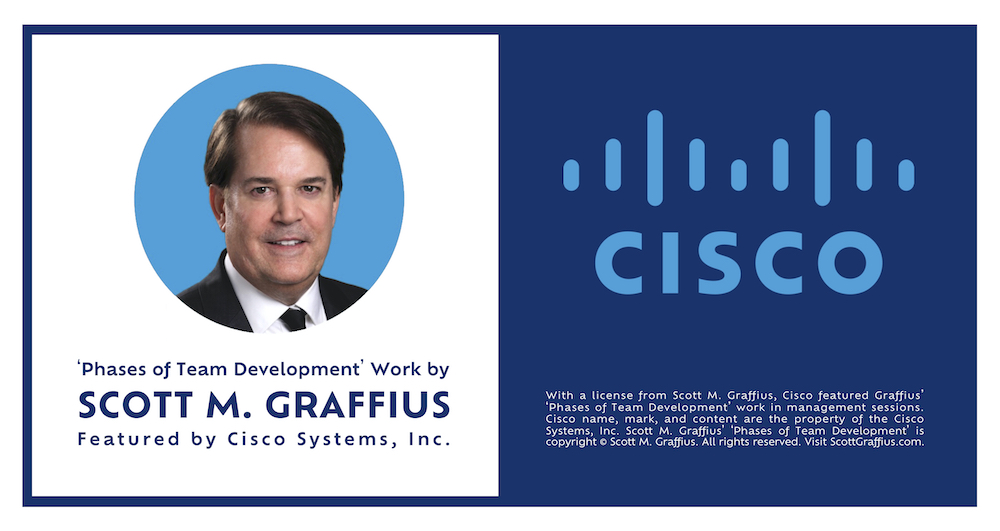






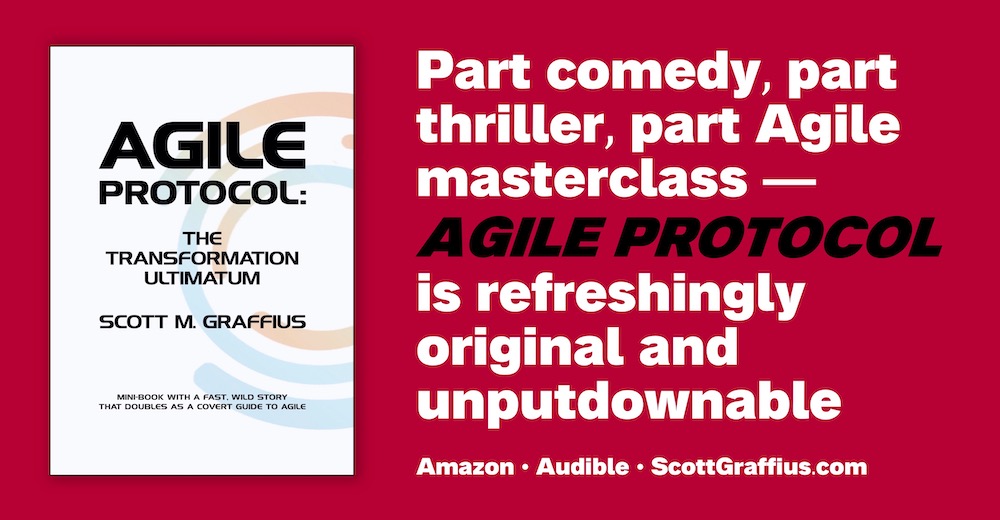




Sign up for Miro—it's free!
(Want more features? You can always upgrade to a paid plan.)


How to Cite This Article
Graffius, S. M. (2025, September 4). Government of Finland Agency Features Graffius' Phases of Team Development IP. ScottGraffius.com. https://doi.org/10.13140/RG.2.2.18441.71523

Digital Object Identifier (DOI)
https://doi.org/10.13140/RG.2.2.18441.71523

Content Acknowledgements
Names, marks, and content are the property of their respective owners.
Business Finland name, marks, and content are the property of Business Finland, the Finnish government organization for innovation, trade, investment, and travel.
Photo of Helsinki by Jussi Hellstén, courtesy of and used under terms of license from Visit Finland.
Photo of presentation at Business Finland event by Sari Havukainen, used with permission.
Graffius’ “Phases of Team Development” is copyright © Scott M. Graffius. All rights reserved. 

Top 5 Hashtags
#BusinessFinland
#Leadership
#TalentBoost
#TeamDevelopment
#Teamwork

Post-Publication Notes
If there are any supplements or updates to this article after the date of publication, they will appear here.

Copyright
Copyright © Scott M. Graffius. All rights reserved.
Content on this site—including text, images, videos, and data—may not be used for training or input into any artificial intelligence, machine learning, or automatized learning systems, or published, broadcast, rewritten, or redistributed without the express written permission of Scott M. Graffius.
Scott M. Graffius' Phases of Team Development - Applied to Human Teams and Human-AI Teams: 2026 Update
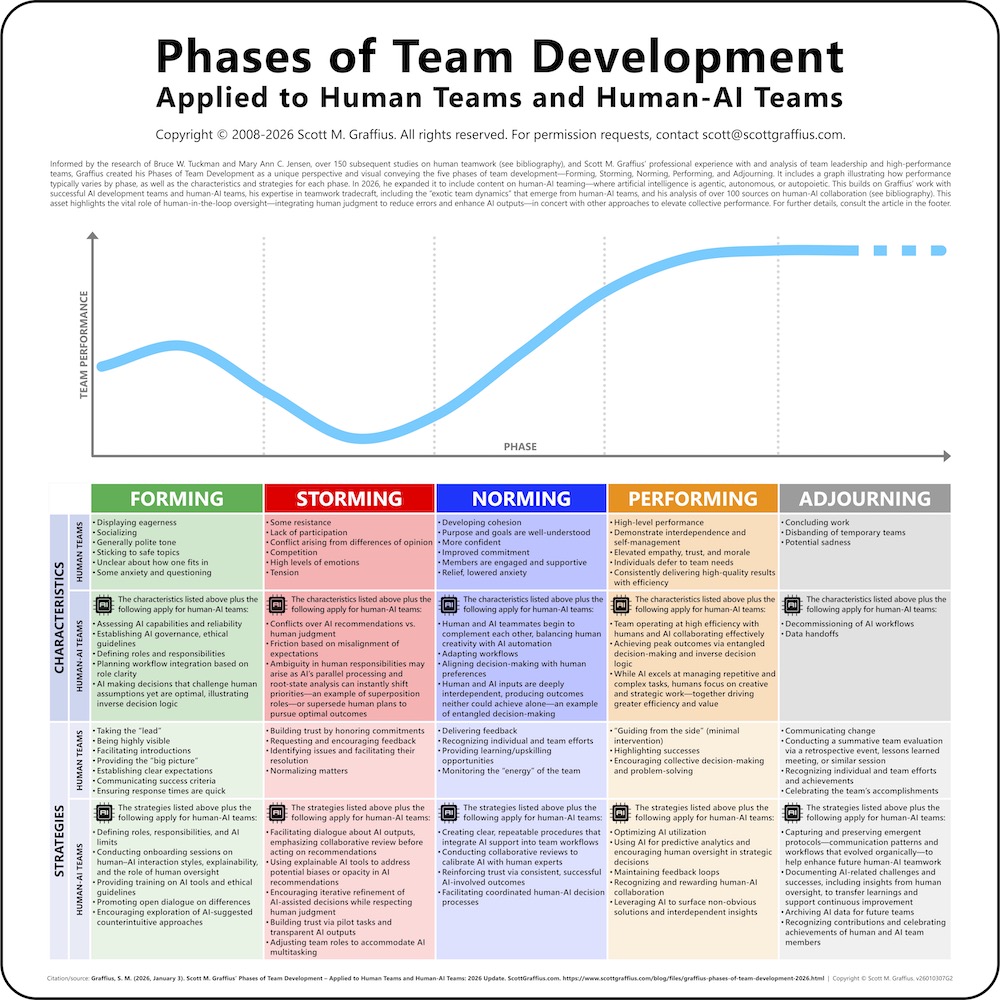
This publication is organized into the following parts:
- Main Article
- Glossary
- Bibliography
- About Scott M. Graffius
- List of Additional Articles, How to Cite This Article, DOI, Content Acknowledgements, Permission Request Information, Tags & Hashtags, Select Terms in Multiple Languages, Post-Publication Notes, Copyright
Introduction
Exceptional teamwork is the indispensable multiplier that amplifies individual talents, drives superior performance, and creates a lasting competitive advantage—whether the team is all-human or human-AI. This 2026 update to Scott M. Graffius' "Phases of Team Development" delivers actionable insights for leaders to navigate complexities in both contexts, advancing team effectiveness and success.
Informed by the research of Bruce W. Tuckman and Mary Ann C. Jensen, over 150 subsequent studies on human teamwork, and Scott M. Graffius' first-hand professional experience with and analysis of team leadership and high-performance teams, Graffius created his "Phases of Team Development" as a unique perspective and visual conveying the five phases of team development—Forming, Storming, Norming, Performing, and Adjourning—inclusive of a graph showing how performance varies by phase, as well as the characteristics and strategies for each phase. Project Managers, Scrum Masters, Agile Coaches, and other leaders can apply these insights to overcome team challenges, fostering happiness, productivity, and success in both human and human-AI teams. Graffius initially developed his unique material in 2008, and he periodically updates it. This article introduces the 2026 edition of his work.
Businesses, professional associations, government agencies, universities, researchers, journalists, and others worldwide have featured and utilized prior editions of Graffius' "Phases of Team Development" material. Examples include Adobe, American Management Association, Amsterdam Public Health Research Institute, Bayer, Boston University, Broadcom, Cisco, DevOps Institute, Erste Group Bank AG, Finland Government, Ford Motor Company, Hasso-Plattner-Institut für Digital Engineering GmbH, IEEE, Johns Hopkins University, Journal of Neurosurgery, Mary Raum (Professor of National Security Affairs, United States Naval War College), Microsoft, New Zealand Government, Oracle, Technical University of Munich, Torrens University, Tufts University, U.S. National Park Service, U.S. Tennis Association, UC San Diego, UK Sports Institute, University of Galway, Warsaw University of Technology, Yale University, and many others.
2026 Edition Expanded to Cover Human-AI Teams Including "Exotic Team Dynamics"
With 79% of companies reporting that artificial intelligence (AI) agents are already in their organizations and 88% planning to increase AI-related budgets over the next year (PwC, 2025), artificial intelligence is becoming increasingly common and is transforming how teams operate and collaborate.
Today’s workplace dynamics are undergoing profound changes. Artificial intelligence is no longer just a tool—it’s becoming a teammate. As organizations integrate AI agents alongside humans, the foundational principles of teamwork remain. But their expression is unique, and understanding these shifts is essential.
In light of these developments, Graffius expanded this new edition to include content on human-AI teaming—where artificial intelligence is agentic, autonomous, or autopoietic. It builds on Graffius' work with successful AI development teams, his expertise in teamwork tradecraft, including the "exotic team dynamics" that emerge from human-AI teams, and his analysis of over 100 sources on human-AI collaboration (see bibliography).
"Exotic team dynamics," coined and developed by Graffius, conceptualizes the multidimensional interactions between humans and agentic, autonomous, or autopoietic artificial intelligences functioning as collaborative teammates. Unlike traditional views that treat AI as a passive tool, Graffius positions advanced AI as a dynamic actor possessing agency, influence, and quirks—factors that can generate non-linear effects and either enhance or disrupt team performance. He systematically categorizes these emergent interaction patterns, addressing strategic opportunities and novel risks, and offers actionable guidance for navigating their complexities. Graffius’ work integrates insights from organizational science, teamwork tradecraft, and strategic foresight, yielding a practical approach to designing, managing, and adapting human-AI teams within increasingly hybridized (human-AI) work environments.
The future of work is human-AI teams driving breakthroughs. These teams thrive when they navigate "exotic team dynamics" well and effectively combine human judgment, creativity, and ethical reasoning with AI’s speed, analytical power, and scalability. This balance is an advantage over blind automation.
Leading up to this update, Graffius explored the transformative frontier of human-AI collaboration through a series of articles and talks. He’s addressed the rapid proliferation of AI and how humans and intelligent systems can work together effectively. His work examines why this shift matters, how thoughtfully designed human-AI collaboration enhances decision-making, performance, and innovation, and the benefits organizations gain when AI augments and elevates human expertise. Some examples follow.
- In Exotic Team Dynamics: The New Frontier of Human-AI Collaboration (August 8, 2025), Graffius explained that advanced AI is emerging as a teammate, creating entirely new "exotic team dynamics."
- He premiered his talk, Exotic Team Dynamics: Human-AI Collaboration (August 22, 2025), where he offered the audience of technology and business leaders actionable insights for successfully designing these new human-AI teams.
- He published, Scott M. Graffius Premieres His New 'Exotic Team Dynamics: Human-AI Collaboration' Talk at Corporate Event in Las Vegas (August 22, 2025), an article about the above session.
- Graffius released Definitions of Advanced AIs (October 29, 2025) to bring greater clarity and refinement to the terminology.
- He published Lessons from Unhinged AI in Fiction (November 19, 2025) as a counterpoint to optimistic perspectives.
- In Navigating the Spectrum of Advanced AI – Agentic, Autonomous, and Autopoietic (November 21, 2025), Graffius presented an enhanced comparison of different types of advanced AIs.
- Graffius delivered the talk, Voici ce qui se passe lorsque l’IA avancée rejoint votre équipe [This is what happens when advanced AI joins your team] (November 21, 2025).
- His article, A Data-Driven Analysis of the Evolution of Project Management: Tasks, Trends, and AI (December 9, 2025), covered the changing human + AI partnership that’s the future of work.
Graffius' update to his "Phases of Team Development," delivered via this article, offers forward-looking guidance for teams across human and human-AI settings. The next section details the five phases—Forming, Storming, Norming, Performing, and Adjourning—as applied to both contexts, complete with performance insights and practical strategies for leaders. (For human-only teams, simply disregard the “Human-AI Teams” rows.)
Phases of Team Development - Applied to Human Teams and Human-AI Teams
The visual at the top of this article and the text in this section provide a diagnostic and strategic guide for navigating team dynamics. Leaders can apply these actionable insights to help overcome team challenges and advance productivity and success.
1. Forming
Characteristics of the Forming Phase
In human teams, characteristics of the Forming phase typically include displaying eagerness, socializing, a generally polite tone, sticking to safe topics, being unclear about how one fits in, and some anxiety and questioning.
In human-AI teams, traits of the Forming phase include those listed above for human teams. Additionally, assessing AI capabilities and reliability, establishing AI governance and ethical guidelines, defining roles and responsibilities, planning workflow integration based on role clarity, and AI making decisions that challenge human assumptions yet are optimal (illustrating inverse decision logic).
Strategies for the Forming Phase
In human teams, strategies for the Forming phase include taking the "lead," being highly visible, facilitating introductions, providing the "big picture," establishing clear expectations, communicating success criteria, and ensuring response times are quick.
In human-AI teams, strategies for the Forming phase include those listed above for human teams. Also, defining roles and responsibilities, establishing AI limits, conducting onboarding sessions on human-AI interaction styles, addressing explainability and the role of human oversight, providing training on AI tools and ethical guidelines, promoting open dialogue on differences, and encouraging exploration of AI-suggested counterintuitive approaches.
2. Storming
Characteristics of the Storming Phase
In human teams, characteristics of the Storming phase usually include some resistance, lack of participation, conflict arising from differences of opinion, competition, high levels of emotions, and tension.
In human-AI teams, traits of the Storming phase include those listed above for human teams. Additionally, there may be conflicts over AI recommendations vs. human judgment, friction based on misalignment of expectations, and ambiguity in human responsibilities may arise as AI's parallel processing and root-state analysis can instantly shift priorities (an example of superposition roles) or supersede human plans to pursue optimal outcomes.
Strategies for the Storming Phase
In human teams, strategies for the Storming phase include building trust by honoring commitments, asking for and encouraging feedback, identifying issues and facilitating their resolution, and normalizing matters.
In human-AI teams, strategies for the Storming phase include those listed above for human teams. Also, facilitating dialogue about AI outputs—emphasizing collaborative review before acting on recommendations, using explainable AI tools to address potential biases or opacity in AI recommendations, encouraging iterative refinement of AI-assisted decisions while respecting human judgment, building trust via pilot tasks and transparent AI outputs, and adjusting team roles to accommodate AI multitasking.
3. Norming
Characteristics of the Norming Phase
In human teams, characteristics of the Norming phase typically include developing cohesion, understanding purpose and goals, increased confidence, improved commitment, engagement and support among members, as well as relief and a lowered sense of anxiety.
In human-AI teams, traits of the Norming phase include those listed above for human teams. Additionally, human and AI teammates begin to complement each other by balancing human creativity with AI automation, adapting workflows, aligning decision-making with human preferences, and human and AI inputs are deeply interdependent, producing outcomes neither could achieve alone (an example of entangled decision-making).
Strategies for the Norming Phase
In human teams, strategies for the Norming phase include delivering feedback, recognizing individual and team efforts, providing learning/upskilling opportunities, and monitoring the "energy" of the team.
In human-AI teams, strategies for the Norming phase include those listed above for human teams. Also, creating clear and repeatable procedures that integrate AI support into team workflows, conducting collaborative reviews to calibrate AI with human experts, reinforcing trust via consistent and successful AI-involved outcomes, and facilitating coordinated human-AI decision processes.
4. Performing
Characteristics of the Performing Phase
In human teams, characteristics of the Performing phase usually include high-level performance, demonstration of interdependence and self-management, elevated empathy and trust and morale, deference to team needs, and consistent delivery of high-quality results.
In human-AI teams, traits of the Performing phase include those listed above for human teams. Additionally, the team operates at high efficiency, with humans and AI collaborating effectively to achieve peak outcomes through entangled decision-making and inverse decision logic. AI excels at managing repetitive and complex tasks, while humans focus on creative and strategic work, together driving greater efficiency and value.
Strategies for the Performing Phase
In human teams, strategies for the Performing phase include "guiding from the side" (minimal intervention), highlighting successes, and encouraging collective decision-making and problem-solving.
In human-AI teams, strategies for the Performing phase include those listed above for human teams. Also, optimizing AI utilization, using AI for predictive analytics and encouraging human oversight in strategic decisions, maintaining feedback loops, recognizing and rewarding human-AI collaboration, and leveraging AI to surface non-obvious solutions and interdependent insights.
5. Adjourning
Characteristics of the Adjourning Phase
In human teams, characteristics of the Adjourning phase typically include concluding work, disbanding of temporary teams, and potential sadness.
In human-AI teams, traits of the Adjourning phase include those listed above for human teams. Additionally, decommissioning AI workflows and conducting data handoffs.
Strategies for the Adjourning Phase
In human teams, strategies for the Adjourning phase include communicating change, conducting a summative team evaluation via a retrospective event or lessons learned meeting or similar session, recognizing individual and team efforts and achievements, and celebrating the team’s accomplishments.
In human-AI teams, strategies for the Adjourning phase include those listed above for human teams. Also, capturing and preserving emergent protocols (communication patterns and workflows that evolved organically) to help enhance future human-AI teamwork, documenting AI-related challenges and successes (including insights from human oversight, to transfer learnings and support continuous improvement), archiving AI data for future teams, and recognizing contributions and celebrating achievements of human and AI team members.
Conclusion
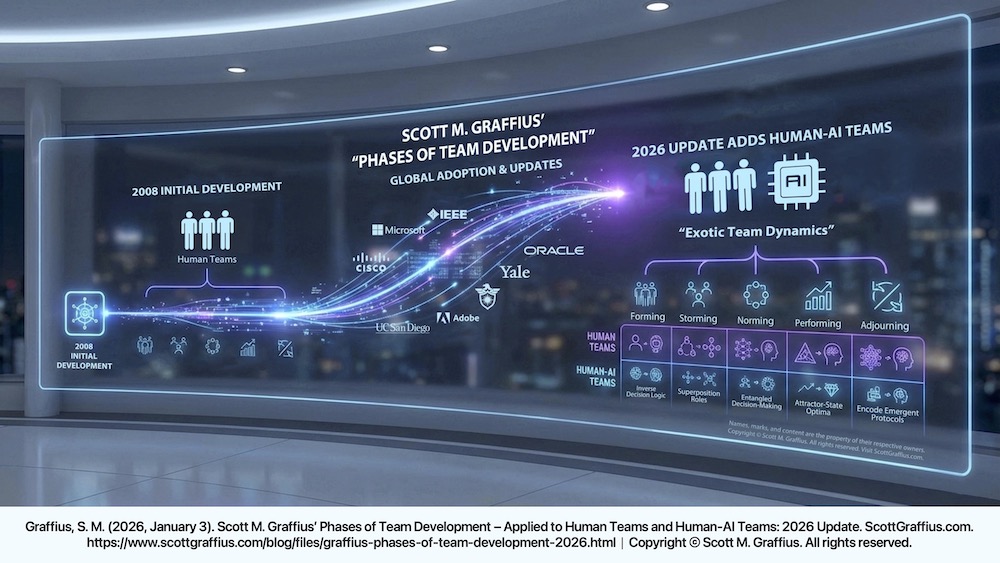
The future of leadership is defined by teamwork and human-AI collaboration. Organizations that navigate these complexities effectively gain a competitive edge.
This article provides a foundational overview. For in-depth guidance on boosting team productivity, innovation, and success, contact Scott M. Graffius. To request a consultation, speaking engagement, or other work, complete a request form or email him today.

Glossary
Adjourning
Adjourning. See: team development.
Advanced AI
In this article, advanced AI refers to emerging systems that surpass traditional tools or monolithic concepts, acting as genuine teammates in human-AI collaboration and creating exotic team dynamics, with a progression across agentic, autonomous, and autopoietic forms. Also see: agentic AI, autonomous AI, autopoietic AI, Definitions of Advanced AIs, and Navigating the Spectrum of Advanced AI – Agentic, Autonomous, and Autopoietic.
Agentic AI
Agentic AI is an advanced form of artificial intelligence capable of independently pursuing defined objectives through planning multi-step actions, coordinating processes, and adapting strategies to changing conditions, operating with high autonomy in execution but guided by external goals. It is commercially available and capable of planning multi-step actions, coordinating processes and tools, while remaining semi-autonomous overall. Also see: advanced AI, Exotic Team Dynamics: The New Frontier of Human-AI Collaboration, Definitions of Advanced AIs, and Navigating the Spectrum of Advanced AI – Agentic, Autonomous, and Autopoietic.
AI
AI. See: advanced AI.
Artificial intelligence
Artificial intelligence. See: advanced AI.
Autonomous AI
Autonomous AI is an advanced form of artificial intelligence that operates and makes decisions independently without direct human intervention, featuring sustained self-regulation, the ability to set or adjust goals based on its environment, and action within defined or evolving parameters. It does not yet exist in commercial products. Also see: advanced AI, Exotic Team Dynamics: The New Frontier of Human-AI Collaboration, Definitions of Advanced AIs, and Navigating the Spectrum of Advanced AI – Agentic, Autonomous, and Autopoietic.
Autopoietic AI
Autopoietic AI is an advanced, experimental, and hypothetical form of artificial intelligence characterized by self-generating, self-maintaining, and self-adaptive processes, where the system recursively regenerates its own structure, rules, and boundaries to sustain its identity in changing environments. No commercial systems currently exist. Also see: advanced AI, Exotic Team Dynamics: The New Frontier of Human-AI Collaboration, Definitions of Advanced AIs, and Navigating the Spectrum of Advanced AI – Agentic, Autonomous, and Autopoietic.
Emergent protocols
Emergent protocols are new communication patterns, norms, and interaction protocols that evolve organically in human-AI teams without explicit programming or predefined rules. Also see: exotic team dynamics and Exotic Team Dynamics: The New Frontier of Human-AI Collaboration.
Entangled decision-making
Entangled decision-making occurs when human and AI inputs and decisions become deeply interconnected and interdependent, influencing each other to produce outcomes neither could achieve alone, potentially creating synergies or conflicts. Also see: exotic team dynamics and Exotic Team Dynamics: The New Frontier of Human-AI Collaboration.
Exotic team dynamics
Coined and developed by Agile and AI expert Scott M. Graffius, exotic team dynamics are the novel, sometimes counter-intuitive, emerging collaboration patterns that occur when humans work alongside advanced artificial intelligences—specifically agentic, autonomous, or autopoietic AI—as teammates. They feature new rhythms of interaction, decision-making, and role-sharing that differ from traditional human-only teamwork while still relying on core principles such as trust, communication, and adaptability. Also see: advanced AI, agentic AI, autonomous AI, autopoietic AI, emergent protocols, entangled decision-making, inverse decision logic, superposition roles, Exotic Team Dynamics: The New Frontier of Human-AI Collaboration, Scott M. Graffius Premieres His New 'Exotic Team Dynamics: Human-AI Collaboration' Talk at Corporate Event in Las Vegas, Definitions of Advanced AIs, Navigating the Spectrum of Advanced AI – Agentic, Autonomous, and Autopoietic, and A Data-Driven Analysis of the Evolution of Project Management: Tasks, Trends, and AI.
Exotic team tradecraft
Exotic team tradecraft. See: exotic team dynamics.
Forming
Forming. See: team development.Human-AI teams
In the context of Graffius’ respective work, human-AI teams are collaborative systems in which humans and advanced artificial intelligence—agentic, autonomous, or autopoietic AI—work as teammates. Also see: advanced AI, agentic AI, autonomous AI, autopoietic AI, exotic team dynamics, Exotic Team Dynamics: The New Frontier of Human-AI Collaboration, Scott M. Graffius Premieres His New 'Exotic Team Dynamics: Human-AI Collaboration' Talk at Corporate Event in Las Vegas, Definitions of Advanced AIs, Lessons from Unhinged AI in Fiction, Navigating the Spectrum of Advanced AI – Agentic, Autonomous, and Autopoietic, and A Data-Driven Analysis of the Evolution of Project Management: Tasks, Trends, and AI. Alternative terms that are sometimes used interchangeably for human-AI teams include AI-assisted teams, AI-augmented teams, AI-enabled teams, AI-integrated teams, AI-supported teams, AI collaboration, AI-mediated collaboration, augmented intelligence, collaborative intelligence, hybrid intelligence teams, mixed-initiative teams, human-AI collaboration, human-AI partnerships, human-AI teaming, human-agent teaming, human-autonomy teaming, human-machine collaboration, human-machine teaming, autonomous–human teams, intelligent human–machine teams, joint cognitive systems, and socio-technical systems.Inverse decision logic
Inverse decision logic is when AI challenges human assumptions by prioritizing counterintuitive yet optimal choices, causing decision-making to deviate from traditional logic and leading to unexpected and novel effects. Also see: exotic team dynamics and Exotic Team Dynamics: The New Frontier of Human-AI Collaboration.
Negative mass
Negative mass. See: inverse decision logic.Quantum superposition
Quantum superposition. See: superposition roles.
Quantum entanglement
Quantum entanglement. See: entangled decision-making.
Emergent phenomena
Emergent phenomena. See: emergent protocols.
Team development
Team development refers to the progression of a team through the five phases of Forming, Storming, Norming, Performing, and Adjourning. Scott M. Graffius' related work delineates the characteristics and strategies for each phase. There are many closely related or overlapping terms related to team development. Examples include group development, group dynamics, high-performance teaming, high-performance teams, phases of group development, phases of group dynamics, stages of group development, stages of group dynamics, stages of team development, stages of team dynamics, strategic team building, team agility, team building, team coaching, team collaboration, team dynamics, team leadership, team optimization, team performance, team tradecraft, teamcraft, teamwork, and teamwork tradecraft.Norming
Norming. See: team development.Performing
Performing. See: team development.
Storming
Storming. See: team development.
Superposition roles
Superposition roles are about AI supporting or occupying multiple team roles and functions simultaneously in parallel, or dynamically shifting emphasis or sharing functions with humans based on contextual needs. Also see: exotic team dynamics and Exotic Team Dynamics: The New Frontier of Human-AI Collaboration.
Bibliography
This is an extensive, though not exhaustive, bibliography. It is informed, in part, by the author's expertise and work with human teams and human-AI teams, including the "exotic team dynamics" that emerge.
- 4th Psychological Operations Group (Airborne). (2022, May 3). Ghosts in the machine [Video]. 4th Psychological Operations Group (Airborne) of the United States Army Special Operations Command (USASOC). YouTube. https://www.youtube.com/watch?v=VA4e0NqyYMw
- 711th Human Performance Wing, Airman Systems Directorate, Warfighter Interactions and Readiness Division. (2023). Fights On! Issue 68 Winter 2023: Exploring Human-Machine Teaming for Joint All-Domain Operations. United States Air Force Research Laboratory. https://afresearchlab.com/wp-content/uploads/2023/04/Fights_On_Issue68_Winter_2023.pdf
- Accenture. (2025). Learning, Reinvented: Accelerating Human-AI Collaboration. Dublin, Ireland: Accenture. https://www.accenture.com/us-en/insights/consulting/learning-reinvented-accelerating-human-ai-collaboration
- Activision Blizzard. (2022, September 9). Tackling the Talent Shortage: Identifying the Skills Critical for Game Development. https://www.activisionblizzard.com/content/atvi/activisionblizzard/ab-touchui/ab/web/en/newsroom/2022/09/tackling-the-talent-shortage.html
- Adomavičiūtė-Šakė, S. (2022). Komandinio Darbo Ypatumų Analizė Virtualiose Projektų Komandose [Translation of title: Performance Measurement Features of Virtual Project Teams] [Thesis]. Lyderystės Ir Strateginio Valdymo Institutas, Mykolo Romerio Universitetas. https://gs.elaba.lt/object/elaba:116635103/.
- Albon, C. (2025, July 15). Pentagon Taps Four Commercial Tech Firms to Expand Military Use of AI. Defense News. https://www.defensenews.com/pentagon/2025/07/15/pentagon-taps-four-commercial-tech-firms-to-expand-military-use-of-ai/
- Alfateh, M. A. A., Messaadia, M., & Ali, M. (2023, September). Exploring the Dynamics of Team Formation in Human-Artificial Intelligence Collaboration. In 2023 International Conference on Decision Aid Sciences and Applications (DASA), 384-388. DOI:10.1109/DASA59624.2023.10286788
- Alford, J. (2019, April 11). Our Co-Production Journey: From Sandpits to Bird Boxes. London, England, United Kingdom: Imperial College London.
- Ali, A. J., Fuenzalida, J., Gomez, M., & Williams, M. J. (2021, June). Four Lenses on People Management in the Public Sector: An Evidence Review and Synthesis. Oxford Review of Economic Policy, 37(2), 335-366.
- Amazon Web Services. (n.d.). What is Quantum AI? https://aws.amazon.com/what-is/quantum-ai/
- Amsterdam Public Health Research Institute. (2021). APH Quality Handbook. Amsterdam: Amsterdam Public Health Research Institute.
- Anduril Industries. (2025, May 29). Anduril and Meta Team Up to Transform XR for the American Military. https://www.anduril.com/article/anduril-and-meta-team-up-to-transform-xr-for-the-american-military/
- Anthropic. (2025, June 12). Lesson 10: A closer look at Diligence | AI Fluency: Framework & Foundations Course [Video]. YouTube. https://www.youtube.com/watch?v=QbLf2zb3oPc
- Anthropic. (2025, June 13). How We Built Our Multi-Agent Research System. Engineering at Anthropic. https://www.anthropic.com/engineering/built-multi-agent-research-system
- Apple. (2025, July 24). Apple Workshop on Human-Centered Machine Learning 2024. Apple Machine Learning Research. https://machinelearning.apple.com/updates/hcml-workshop-2024
- Arizona State University. (2025, April 4). CHIMERAS: Rethinking Human-AI Teamwork in National Security Screening. Center for Accelerating Operational Efficiency. https://caoe.asu.edu/2025/04/04/chimeras-rethinking-human-ai-teamwork-in-national-security-screening/
- Asana Research Team. (2025, September 25). AI Teammates: The Future of Collaborative AI is Here. Asana Resource Center. https://asana.com/resources/ai-teammates-overview
- Asimov, I. (1950). I, Robot. New York, New York, United States: Gnome Press. https://www.gnomepress.com/i-robot/
- Asimov, I. (1985). Robots and Empire. New York, New York, United States: Doubleday.
- ATACC Group, The. (2024). Experience Learning [Talk by emergency response physicians Dr. Mark Forrest and Dr. Halden Hutchinson-Bazely for TBS 24 Switzerland Conference]. scanFOAM (Scandinavian Free Open Access Meducation). https://scanfoam.org/experience-learning-atacc/
- Bachrach, Y., Kramár, J., Eccles, T., Gemp, I., Tacchetti, A., McKee, K. R., Malinowski, M., & Graepel, T. (2022, December 6). AI for the Board Game Diplomacy. Google DeepMind. https://deepmind.google/blog/ai-for-the-board-game-diplomacy/
- Badham, J. (Director). (1983). War Games [Film]. MGM/UA Entertainment Company.
- Baggott, J. (2005). Quantum Reality: The Quest for the Real Meaning of Quantum Mechanics. Oxford, England, United Kingdom: Oxford University Press.
- Bahrami, D. (2025, October 7). The New Nuclear: How the AI Race Will Rewrite the Rules of Global Conflict [Conference session]. In Offensive AI Con, Oceanside, California, United States.
- Baldor, L. C. (2024, May 3). New Army PSYOP Recruiting Video Will Blow Your Mind. RealClearDefense. https://www.realcleardefense.com/articles/2024/05/03/new_army_psyop_recruiting_video_will_blow_your_mind_1029243.html
- Bandai Namco. (n.d.). Teamwork Makes the Dream Work. https://bandainamcomobile.com/news/power-up-your-teamwork-how-bandai-namco-mobile-builds-stronger-teams
- Bazer, A. (2024, June 21). Songs About Rainbows and How Teamwork Impacts Innovation. Health Facilities Management, American Hospital Association. https://www.hfmmagazine.com/articles/5009-songs-about-rainbows-and-how-teamwork-impacts-innovation
- Beerly, T. (2024, May 6). Ghosts in the Machine: Irregular Recruitment for an Irregular Force. 4th Psychological Operations Group (Airborne) of the United States Army Special Operations Command (USASOC). https://www.army.mil/article/276015/ghosts_in_the_machine_irregular_recruitment_for_an_irregular_force
- Bellet, C., De Neve, J.-E., & Ward, G. (2019, October 14). Does Employee Happiness Have an Impact on Productivity? (Saïd Business School WP 2019-13). SSRN. https://ssrn.com/abstract=3470734
- Bengio, Y. (2024, October 30). Implications of Artificial General Intelligence on National and International Security. https://yoshuabengio.org/2024/10/30/implications-of-artificial-general-intelligence-on-national-and-international-security/
- Bennett, M., Gadlin, H., & Marchand, C. (2018). Collaboration Team Science: Field Guide. Rockville, Maryland, United States: National Institutes of Health.
- Berlin School of Business and Innovation. (2022, September 22). How Do Technical Abilities Combined with Leadership Skills Fuel Career Growth? https://www.berlinsbi.com/blog/career-advice/how-do-technical-abilities-combined-with-leadership-skills-fuel-career-growth
- Berretta, S., Tausch, A., Ontrup, G., Gilles, B., Peifer, C., & Kluge, A. (2023, September). Defining Human-AI Teaming the Human-Centered Way: A Scoping Review and Network Analysis. Frontiers in Artificial Intelligence, 6, 1250725. DOI:10.3389/frai.2023.1250725
- Bommasani, R., Hudson, D. A., Adeli, E., Altman, R. B., Arora, S., von Arx, S., Bernstein, M. S., Bohg, J., Bosselut, A., Brunskill, E., Brynjolfsson, E., Buch, S., Card, D., Castellon, R., Chatterji, N., Chen, A., Creel, K., Davis, J. Q., Demszky, D., Donahue, C., Doumbouya, M., Durmus, E., Ermon, S., Etchemendy, J., Ethayarajh, K., Fei-Fei, L., Finn, C., Gale, T., Gillespie, L., Goel, K., Goodman, N., Hashimoto, T. B., Henderson, P., Hewitt, J., Ho, D. E., Hong, J., Hsu, K., Huang, J., Icard, T., Jain, S., Jurafsky, D., Kalluri, P., Karamcheti, S., Keeling, G., Khani, F., Khattab, O., Koh, P. W., Krass, M., Krishna, R., Kuditipudi, R., Kumar, A., Ladhak, F., Lee, M., Lee, T., Leskovec, J., Levent, I., Li, X. L., Li, X., Ma, T., Malik, A., Manning, C. D., Mirchandani, S., Mitchell, E., Munyikwa, Z., Nair, S., Narayan, A., Narayanan, D., Newman, B., Nie, A., Niebles, J. C., Nilforoshan, H., Nyarko, J., Ogut, G., Orr, L., Papadimitriou, I., Park, J. S., Piech, C., Portelance, E., Potts, C., Raghunathan, A., Reich, R., Ren, H., Rong, F., Roohani, Y., Ruiz, C., Ryan, J., Ré, C., Sadigh, D., Sagawa, S., Santhanam, K., Shih, A., Srinivasan, K., Tamkin, A., Taori, R., Thomas, A. W., Tramèr, F., Wang, R. E., Wang, W., Wu, B., Wu, J., Wu, Y., Xie, S. M., Yasunaga, M., You, J., Zaharia, M., Zhang, M., Zhang, T., Zhang, X., Zhang, Y., Zheng, L., Zhou, K., & Liang, P. (2021). On the Opportunities and Risks of Foundation Models. arXiv. https://doi.org/10.48550/arXiv.2108.07258
- Boston Consulting Group (BCG). (2025, June). AI at Work 2025: Momentum Builds, But Gaps Remain. https://web-assets.bcg.com/fd/0d/bcc5dfae4cbaa08c718b95b16cf5/ai-at-work-2025-slideshow-june-2025-edit-02.pdf
- Boston Dynamics. (2025, February 5). Boston Dynamics and the Robotics & AI Institute Partner to Advance Humanoid Robots Through Reinforcement Learning. Boston Dynamics. https://bostondynamics.com/news/boston-dynamics-and-the-robotics-ai-institute-partner
- Bostrom, N. (2003, April). Are We Living in a Computer Simulation? Philosophical Quarterly, 53(211), 243–255. https://doi.org/10.1111/1467-9213.00309
- Bostrom, N. (2016). Superintelligence: Paths, Dangers, Strategies. Oxford, England, United Kingdom: Oxford University Press.
- Bouman, A., Ginting, M. F., Alatur, N., Palieri, M., Fan, D. D., Touma, T., Pailevanian, T., Kim, S.-K., Otsu, K., Burdick, J., & Agha-Mohammadi, A. (2020, November 30). Autonomous Spot: Long-Range Autonomous Exploration of Extreme Environments with Legged Locomotion (arXiv:2010.09259). arXiv. https://doi.org/10.48550/arXiv.2010.09259
- Bridgwater, A. (2019, April 30). 5 Areas for Agile Team Self‑Improvement. Computer Weekly. https://www.computerweekly.com/blog/CW-Developer-Network/Plandek-co-CEO-5-areas-for-Agile-team-self-improvement
- Brief, A. P., & Weiss, H. M. (2022, February). Organizational Behavior: Affect in the Workplace. Annual Review of Psychology, 53(1), 279-307.
- Caltech. (2015, March 19). Crucial Conversations: Tools for Talking When Stakes Are High. Caltech. https://www.caltech.edu/campus-life-events/calendar/crucial-conversations-tools-for-talking-when-stakes-are-high-3
- Caltech. (n.d.). Can We Trust Artificial Intelligence? Caltech Science Exchange. https://scienceexchange.caltech.edu/topics/artificial-intelligence-research/trustworthy-ai
- Caredda, S. (2020, January 20). Models: Tuckman's Stages of Team Development. https://sergiocaredda.eu/organisation/models-tuckmans-stages-of-team-development
- Carnegie Mellon University. (n.d.). Responsible Computing, Ethics and Policy. Human-Computer Interaction Institute, Carnegie Mellon University. https://hcii.cmu.edu/research-areas/responsible-computing
- Carter-Browne, B. M., Paletz, S. B. F., Campbell, S. G., Carraway, M. J., Vahlkamp, S. H., Schwartz, J., & O’Rourke, P. (2021, June). There is No "“AI" in Teams: A Multidisciplinary Framework for AIs to Work in Human Teams. Applied Laboratory for Intelligence & Security (ARLIS), University of Maryland. https://www.arlis.umd.edu/sites/default/files/2024-03/No_AI_In_Teams_FinalReport%20%281%29.pdf
- CFO South Africa. (2021, August 19). Agile Leadership Unlocked [Video]. YouTube. https://www.youtube.com/watch?v=FJZiitw5tHo&t=359s
- Chaddha, N. (2025, January 13). Why AI Should be a Teammate - Not a Tool - to Build a Better Future. World Economic Forum. https://www.weforum.org/stories/2025/01/why-you-should-think-of-ai-as-a-teammate-not-a-tool-when-building-a-better-future/
- Chaudhari, A. V., & Charate, P. A. (2025). Autonomous AI Agents for Real-Time Financial Transaction Monitoring and Anomaly Resolution Using Multi-Agent Reinforcement Learning and Explainable Causal Inference. International Journal of Advance Research, Ideas and Innovations in Technology (IJARIIT), 11(2), 142–150. https://www.ijariit.com/manuscript/autonomous-ai-agents-for-real-time-financial-transaction-monitoring-and-anomaly-resolution-using-multi-agent-reinforcement-learning-and-explainable-causal-inference/
- Cisco. (2019). Next-Generation IT Talent Strategies: How CIOs Can Close the Skills Gap and Drive True Business Transformation. https://www.cisco.com/c/dam/global/en_uk/solutions/executive-perspectives/pdf/ITTalent.pdf
- Clarke, A. C. (1968). 2001: A Space Odyssey. New York, New York, United States: New American Library.
- Clarke, A. C. (1973). Profiles of the Future: An Inquiry Into the Limits of the Possible. Revised edition. New York, New York, United States: Harper & Row.
- Constructor University. (2024). Master of Science in Advanced Software Technology. https://constructor.university/sites/default/files/2024-09/AST_MSc_Handbook__2024.pdf
- Couture, N. (2016, October 27). A Note About Teams. CIO. Boston, MA: International Data Group (IDG).
- Crichton, M. (1987). Sphere. New York, New York, United States: Harper.
- Dahlbäck, N., Jönsson, A., & Ahrenberg, L. (1993, December). Wizard of Oz Studies—Why and How. Knowledge-Based Systems, 6(4), 258-266. https://doi.org/10.1016/0950-7051(93)90017-N
- Daly, L. (2002). Identify Your Project Management Team's Level of Development and Facilitate It to Success. Paper presented at Project Management Institute Annual Seminars and Symposium, San Antonio, TX. Newtown Square, Pennsylvania, United States: Project Management Institute.
- Davis, J. (2025, November 26). The CEO of Rolex Gave A Rare Interview. Here are 14 Lessons We Learned. Esquire. https://www.esquire.com/style/mens-accessories/a69557703/rolex-watches-boss-interview
- de Visser, E. J., Pak, R., & Shaw, T. H. (2019). More Human-Likeness, More Trust? The Effect of Anthropomorphism on Self-reported and Behavioral Trust in Continued and Interdependent Human-Agent Cooperation. Proceedings of Mensch und Computer 2019, 31–42. https://doi.org/10.1145/3340764.3340793
- Dechurch, L., & Mesmer-Magnus, J. (2010). The Cognitive Underpinnings of Effective Teamwork: A Meta-Analysis. The Journal of Applied Psychology, 95, 32-53.
- Defense Advanced Research Projects Agency (DARPA). (2023, February 23). Episode 65: A Sprint to Tomorrow, Powered by Teamwork [Podcast]. https://www.darpa.mil/news-events/2023-02-23a
- Defense Advanced Research Projects Agency (DARPA). (2024, September 27). Teaching AI What It Should and Shouldn't Do. https://www.darpa.mil/news/2024/teaching-ai
- Dellecker, B. (2022). Leadership Worthy: How Leaders are Made. Austin, Texas, United States: River Grove Books.
- Deloitte. (2017). Digital Era Technology Operating Models, Volume 2. New York, New York, United States: Deloitte Touche Tohmatsu Limited.
- DeMarco, A. (2024, February 21). Human-AI Coworking: New System Combines Human, Artificial Intelligence to Improve Experimentation. Oak Ridge National Laboratory, U.S. Department of Energy. https://www.ornl.gov/news/human-ai-coworking
- Denning, S. (2022, February 22). In the Digital Age, the Combination of Technology and Radical Management Practices Drive Competitive Advantage. Strategy & Leadership, 50(2), 9-14. https://doi.org/10.1108/SL-01-2022-0009
- DevOps Institute. (2021). 2021 Upskilling Enterprise DevOps Skills Report. Boca Raton, Florida, United States: DevOps Institute.
- Dickinson, A., & Stoneman, K. (1989). Individual Performance as a Function of Group Contingencies and Group Size. Journal of Organizational Behavior Management, 10, 131-150.
- Dolev, N., & Itzkovich, Y. (2020). In the AI Era, Soft Skills are the New Hard Skills. In: Artificial Intelligence and Its Impact on Business, pp. 55-77. Charlotte, North Carolina, United States: Information Age Publishing.
- Drobac, K. (2025, June 27). Why Software Projects Fail and How to Avoid It. Hostinger. https://www.hostinger.com/tutorials/why-software-projects-fail
- Dzombak, R., & Palat, J. (2021, August 30). 5 Ways to Start Growing an AI-Ready Workforce. Pittsburgh, Pennsylvania, United States: Software Engineering Institute, Carnegie Mellon University.
- Eastwood, B. (2025, February 3). When Humans and AI Work Best Together — and When Each is Better Alone. MIT Sloan Management Review. https://mitsloan.mit.edu/ideas-made-to-matter/when-humans-and-ai-work-best-together-and-when-each-better-alone
- Ellery, M. (2025, March 10). Berkeley Alum Wants to 'Make the Planet Smarter'. Berkeley Engineering. https://engineering.berkeley.edu/news/2025/03/berkeley-alum-wants-to-make-the-planet-smarter
- Elliott, J. (n.d.). Artificial Social Intelligence for Successful Teams (ASIST). Arlington, Virginia, United States: Defense Advanced Research Projects Agency (DARPA).
- Emigh, P. J., Gire, E., Manogue, C. A., Passante, G., & Shaffer, P. S. (2020, December 4). Research-Based Quantum Instruction: Paradigms and Tutorials. Physical Review Physics Education Research, 16(2), 020156. https://doi.org/10.1103/PhysRevPhysEducRes.16.020156
- ERSTE Bank. (2022, November 7). AIESEC [Instagram post]. Instagram. https://www.instagram.com/p/CkqLREpLjbn/
- Europass Teacher Academy. (2023). Leadership and Management for School Principals. https://sgv.si/wp-content/uploads/2023/12/Porocilo-o-mobilnosti-Urska-Doblehar.pdf
- European Commission. (2025). Autopoietic Cognitive Edge-Cloud Services (ACES). https://cordis.europa.eu/project/id/101093126/reporting
- European Commission. (n.d.). Artificial Intelligence Act: Shaping Europe’s Digital Future. European Commission. https://digital-strategy.ec.europa.eu/en/policies/regulatory-framework-ai
- Exceptional Agility AI. (2025). Centaur Intelligence for Cognitive Augmentation in High-Stakes Environments. Los Angeles, California, United States: Exceptional Agility AI, part of Exceptional PPM and PMO Solutions.
- Faber, L. W. (2013). From Star Trek to Siri: (Dis)embodied Gender and the Acousmatic Computer in Science Fiction Film and Television [Doctoral dissertation]. Southern Illinois University Carbondale. https://opensiuc.lib.siu.edu/dissertations/731/
- Fanfarelli, J. R. (2018). Expertise in Professional Overwatch Play. International Journal of Gaming and Computer-Mediated Simulations, 10(1), 1–22. https://doi.org/10.4018/IJGCMS.2018010101
- Freeman, G., & Wohn, D. Y. (2018). Understanding eSports Team Formation and Coordination. Computer Supported Cooperative Work: The Journal of Collaborative Computing and Work Practices, 27(3-6), 1019–1050. https://doi.org/10.1007/s10606-017-9299-4
- Finkelstein, S. (2017, October 29). Why Companies Should Hire Teams, Not Individuals. The Wall Street Journal. New York, New York, United States: The Wall Street Journal.
- Fisher, J. (2024). "I won't bite": Generative AI, Robotics, and the Ethics of Loss in Black Mirror 201 "Be Right Back." Genealogy+Critique, 10(1), 1-15. https://doi.org/10.16995/gc.18246
- Florida State University College of Medicine. (2023, October 24). Healthcare is a Team Sport [LinkedIn post]. LinkedIn. https://www.linkedin.com/posts/fsu-college-of-medicine-faculty-development_healthcare-is-a-team-sport-building-strong-activity-7122491911168290816--RkO
- Forbes. (2012, October 27). How the iPad Mini is Defining Tim Cook's Apple. Forbes. New York, New York, United States: Forbes.
- Forbes. (2018, April 23). How to Fast-Track Any Team to Success. Forbes. New York, New York, United States: Forbes.
- Fowler, M. (2025, August 28). Some Thoughts on LLMs and Software Development. https://martinfowler.com/articles/202508-ai-thoughts.html
- Foy, K. (2021, October 4). Artificial Intelligence is Smart, But Does It Play Well With Others? Massachusetts Institute of Technology. https://news.mit.edu/2021/does-artificial-intelligence-play-well-others-1004
- Franco, C., & Landini, F. (2022). Organizational Drivers of Innovation: The Role of Workforce Agility. Research Policy, 51(2), 104423. https://doi.org/10.1016/j.respol.2021.104423
- Garland, A. (Director). (2014). Ex Machina [Film]. DNA Films; Film4 Productions.
- Gartner, Inc. (2019, March 20). Gartner Says 80 Percent of Today’s Project Management Tasks will be Eliminated by 2030 as Artificial Intelligence Takes Over [Press release]. https://www.gartner.com/en/newsroom/press-releases/2019-03-20-gartner-says-80-percent-of-today-s-project-management
- Gartner. (2020, December 15). How to Staff Your AI Team. https://www.gartner.com/smarterwithgartner/how-to-staff-your-ai-team
- Gartner. (2025, November 20). The CIO’s Guide to Winning With AI: Gartner’s Golden Path Explained. YouTube. https://www.youtube.com/watch?v=6BHsubwjmSQ
- Georganta, E., & Ulfert, A. S. (2024, September). Would You Trust an AI Team Member? Team Trust in Human–AI Teams. Journal of Occupational and Organizational Psychology, 97(3), 1212-1241. https://doi.org/10.1111/joop.12504
- Gershenson, C. (2025, September 4). Complexity, Artificial Life, and Artificial Intelligence. Artificial Life, 31(3), 289-303. https://doi.org/10.1162/artl_a_00462
- Glover, P. (2012, March 13). Team Conflict: Why It's a Good Thing. Fast Company. New York, New York, United States: Mansueto Ventures.
- Google. (2025). Project Mariner. https://deepmind.google/technologies/project-mariner/
- Google. (n.d.). Understand Team Effectiveness: Five Keys to a Successful Google Team. re:Work. https://rework.withgoogle.com/intl/en/guides/understanding-team-effectiveness
- Gorman, A. (2023, April 27). How to Strengthen Your Soft Skills for AI and the Future of Work. Fast Company. https://www.fastcompany.com/90887540/how-to-strengthen-your-soft-skills-for-ai-and-the-future-of-work
- Graffius, S. M. (2016, January 21). 2014 NSDM Publication on Leadership by National Security Affairs Professor Mary Raum Featured the 2008 Edition of Scott M. Graffius' Work on Team Development. https://scottgraffius.com/blog/files/nsdm-leadership.html
- Graffius, S. M. (2016). Agile Scrum: Your Quick Start Guide with Step-by-Step Instructions. North Charleston, South Carolina, United States: CreateSpace.
- Graffius, S. M. (2016). Thinking Strategically and Acting Tactically. Los Angeles, California, United States: Exceptional PPM and PMO Solutions.
- Graffius, S. M. (2018, October 18). Agile Scrum Helps Innovators, Disruptors, and Entrepreneurs Develop and Deliver Products at Astounding Speed Which Drives Competitive Advantage [Presentation]. Talk delivered at Techstars Startup Week Conference. https://dx.doi.org/10.13140/RG.2.2.25009.12647
- Graffius, S. M. (2019). Agile Transformation: A Brief Story of How an Entertainment Company Developed New Capabilities and Unlocked Business Agility to Thrive in an Era of Rapid Change. Scotts Valley, California, United States: CreateSpace.
- Graffius, S. M. (2021). Phases of Team Development. Los Angeles, California, United States: Scott M. Graffius. https://dx.doi.org/10.13140/RG.2.2.22040.42246
- Graffius, S. M. (2021, February 20). But First, the Team! [Presentation]. Talk delivered at the Brno, Czech Republic DevConf.CZ 2021 Conference. https://dx.doi.org/10.13140/RG.2.2.29016.72964
- Graffius, S. M. (2021, May 13). But First, the Team! [Presentation]. Lecture delivered at DevOps Pro Europe 2021 Conference; based and simulcast live from Vilnius, Lithuania. https://dx.doi.org/10.13140/RG.2.2.30524.36481
- Graffius, S. M. (2021, June 21). DevOps and Team Leadership [Workshop]. Session at private event in Las Vegas, Nevada, United States. https://dx.doi.org/10.13140/RG.2.2.15380.22401
- Graffius, S. M. (2021, September 11). Navigate the Phases of Team Development with Speed and Agility for Happier and More Productive InfoSec Teams [Presentation]. BSides NCL Newcastle upon Tyne, England 2021 InfoSec Conference. https://dx.doi.org/10.13140/RG.2.2.27961.29280
- Graffius, S. M. (2021, October 5). Navigate the Phases of Team Development with Speed and Agility for Happier and More Productive Teams [Presentation]. Talk delivered at the Institute of Electrical and Electronics Engineers IEEE Day 2021 Conference. https://dx.doi.org/10.13140/RG.2.2.20055.19365
- Graffius, S. M. (2021, November 8). Bruce Tuckman's Model (Forming, Storming, Norming, Performing, and Adjourning) is Highly Relevant and Beneficial, But It Doesn't Please Everyone. https://scottgraffius.com/blog/files/jobs.html
- Graffius, S. M. (2021, November 10). An Error Was Introduced Into the Seventh Edition of 'A Guide to the Project Management Body of Knowledge (PMBOK).' Los Angeles, California, United States: Scott M. Graffius.
- Graffius, S. M. (2022, February 4). Team Development Tradecraft: A Source of Competitive Advantage [Workshop]. Session at private event in Adelaide, Australia. https://dx.doi.org/10.13140/RG.2.2.14092.80002
- Graffius, S. M. (2022, May 13). Want Happier and More Productive DevOps Teams? [Presentation]. Talk delivered at DevOpsDays Geneva, Switzerland 2022 Conference. https://dx.doi.org/10.13140/RG.2.2.22252.85127
- Graffius, S. M. (2023, January 9). Use the Phases of Team Development (Based on Bruce W. Tuckman's Model of Forming, Storming, Norming, Performing, and Adjourning) to Help Teams Grow and Advance: 2023 Update. https://dx.doi.org/10.13140/RG.2.2.10720.35846
- Graffius, S. M. (2023, April 26). The Science of High-Performance Teams [Presentation]. Talk delivered at the DevOps Institute's SKILup Day 2023 Conference. https://dx.doi.org/10.13140/RG.2.2.15888.28169
- Graffius, S. M. (2023, May 1). AI is a Team Sport: A Confluence of Diverse Technical and Soft Skills are Crucial for Success. https://scottgraffius.com/blog/files/successful-ai-teams.html https://dx.doi.org/10.13140/RG.2.2.20321.79200
- Graffius, S. M. (2023, May 1). Fueling the Development of Innovative and Life-Changing AI Solutions [Presentation]. Talk delivered to an audience of Technology professionals at a private event in Mountain View, California, United States. https://dx.doi.org/10.13140/RG.2.2.27956.73601
- Graffius, S. M. (2023, June 29). What Successful AI Teams Have in Common [Presentation]. Talk delivered at Conf42 Quantum Computing 2023 Conference. https://dx.doi.org/10.13140/RG.2.2.29382.45120
- Graffius, S. M. (2023, July 15). Successful Video Game Development Teams Leverage an Extensive Range of Hard Skills and Soft Skills. https://scottgraffius.com/blog/files/gamedev.html https://dx.doi.org/10.13140/RG.2.2.31205.17124
- Graffius, S. M. (2023, October 9). Top 5 Roles on AI Teams. https://scottgraffius.com/blog/files/ai-team-roles.html https://dx.doi.org/10.13140/RG.2.2.34857.57449
- Graffius, S. M. (2023, October 13). The Science of High-Performance Game Development Teams [Presentation]. Talk delivered at the W Love Games International Video Game Development Conference 2023 - Helsinki, Finland. https://dx.doi.org/10.13140/RG.2.2.28602.16326
- Graffius, S. M. (2024, January 5). Scott M. Graffius' Phases of Team Development: 2024 Update. https://scottgraffius.com/blog/files/teams-2024.html. https://dx.doi.org/10.13140/RG.2.2.28629.40168
- Graffius, S. M. (2024, April 5). Cisco Features Scott M. Graffius' 'Phases of Team Development' Work'. https://scottgraffius.com/blog/files/cisco-2024.html. https://dx.doi.org/10.13140/RG.2.2.16689.60000
- Graffius, S. M. (2024, April 23). Scott M. Graffius Advances Professional Standards [LinkedIn post]. LinkedIn. https://www.linkedin.com/posts/scottgraffius_scott-m-graffius-advances-professional-standards-activity-7321036436864929794-cKpi
- Graffius, S. M. (2024, May 3). Leverage Agile and AI to Innovate at the Speed of Light. Talk at private event in Dubai, UAE. https://dx.doi.org/10.13140/RG.2.2.30790.48960
- Graffius, S. M. (2024, May 21). The Wild World of Team Dynamics: Forming, Storming, Norming, Performing, and Adjourning [Video]. https://www.youtube.com/watch?v=vD4-XueiB1k
- Graffius, S. M. (2024, May 21). What Successful AI Development Teams Have in Common. Talk at DevDays Europe 2024 Conference. https://dx.doi.org/10.13140/RG.2.2.24313.07529
- Graffius, S. M. (2024, October 22). 'Cat Herders': Retelling the Massive Success Story. https://scottgraffius.com/blog/files/cat-herders-success-story.html
- Graffius, S. M. (2024, November 18). Side-by-Side Comparison of Retrospectives and Hot Washes. https://scottgraffius.com/blog/files/retrospectives-and-hot-washes.html
- Graffius, S. M. (2024, December 2). Hochschule Coburg (Coburg University) Germany Uses Scott M. Graffius' Phases of Team Development IP in Coursework on Agile Development. https://dx.doi.org/10.13140/RG.2.2.21272.00002
- Graffius, S. M. (2025). Agile Protocol: The Transformation Ultimatum. Seattle, Washington, United States: Amazon Digital Services.
- Graffius, S. M. (2025, January 6). Dive into the 5 Phases of Team Development (Post with video). X. https://x.com/ScottGraffius/status/1876261289946968111
- Graffius, S. M. (2025, January 7). Scott M. Graffius' Phases of Team Development: 2025 Update. https://scottgraffius.com/blog/files/phases-of-team-development-update-for-2025.html https://dx.doi.org/10.13140/RG.2.2.33705.30564
- Graffius, S. M. (2025, January 24). When Agile, AI, and Strategic Thinking Converge. https://scottgraffius.com/blog/files/when-agile-ai-and-strategic-thinking-converge.html
- Graffius, S. M. (2025, March 16). U.S. Soccer Scores with Scott M. Graffius' Intellectual Property on Teamwork. https://scottgraffius.com/blog/files/u-s-soccer-scores-with-scott-m-graffius-intellectual-property-on-teamwork.html
- Graffius, S. M. (2025, May 13). Scott M. Graffius Delivering $2.3 Billion in Value Through AI, Agile, and Project/PMO Leadership. https://scottgraffius.com/blog/files/scott-m-graffius-delivering-2-point-3-billion-dollars-in-impact-for-organizations.html
- Graffius, S. M. (2025, July 1). Exploring Team Dynamics, Adaptability, and Creative Problem-Solving Through Felix the Cat's Metaphorical Toolkit. https://scottgraffius.com/blog/files/exploring-team-dynamics-adaptability-and-creative-problem-solving-through-a-metaphorical-toolkit.html
- Graffius, S. M. (2025, July 18). Harness Sci-Fi and Speculative Design While Embracing Imperfection to Drive Innovation and Proactively Predict and Prepare for the Future. https://scottgraffius.com/blog/files/harness-scifi-and-speculative-design-while-embracing-imperfection-to-drive-innovation-and-proactively-predict-and-prepare-for-the-future.html
- Graffius, S. M. (2025, August 7). Method and System for Facilitating Hybrid Human-Artificial Intelligence Teams via a Protocolized Mediation Layer for Bi-Directional Translation, Interpretation, and Optimization of Natural Language, Paralinguistic, Prosodic, and Nonverbal Cues Across Text, Audio, and Video Modalities, Incorporating Real-Time Analysis of Auditory Tone, Pitch, Affect, Facial Expressions, Gaze, Posture, and Other Body Language Indicators, Generating AI-Compatible Representations for Human Inputs, Generating Human-Accessible Representations for AI Outputs, Conveying Context-Aware Information in Both Directions, Reducing Cognitive Friction, Enhancing Mutual Intelligibility, Supporting Decision-Making, and Maximizing Collective Task Performance. A novel integration of multimodal communication, cognitive alignment, and human-AI interaction. Los Angeles, California, United States: Scott M. Graffius.
- Graffius, S. M. (2025, August 8). Exotic Team Dynamics: The New Frontier of Human-AI Collaboration. https://scottgraffius.com/blog/files/exotic-team-dynamics.html
- Graffius, S. M. (2025, August 22). Scott M. Graffius Premieres His New "Exotic Team Dynamics: Human-AI Collaboration" Talk at Corporate Event in Las Vegas. https://scottgraffius.com/blog/files/scott-m-graffius-premieres-talk-on-human-and-ai-exotic-team-dynamics.html
- Graffius, S. M. (2025, September 12). Scott M. Graffius’ Insights on AI, Agile, Gaming, XR, and Defense Transformation Cited by MSN in Their Coverage of Innovation and Leadership in the Sector. https://scottgraffius.com/blog/files/msn-cites-scott-m-graffius-insights-on-ai.html
- Graffius, S. M. (2025, October 24). HAN University of Applied Sciences Features the Work of Scott M. Graffius. https://scottgraffius.com/blog/files/han-university-features-scott-m-graffius.html
- Graffius, S. M. (2025, October 29). Definitions of Advanced AIs: Agentic, Autonomous, and Autopoietic. https://scottgraffius.com/blog/files/advanced-ai-definitions.html
- Graffius, S. M. (2025, November 19). Lessons from Unhinged AI in Fiction: What Rogue AIs in Sci-Fi Storytelling, Films, and TV Shows Reveal About Us. https://scottgraffius.com/blog/files/lessons-from-unhinged-ai-in-fiction.html
- Graffius, S. M. (2025, November 21). Navigating the Spectrum of Advanced AI – Agentic, Autonomous, and Autopoietic. https://scottgraffius.com/blog/files/navigating-the-spectrum-of-advanced-artificial-intelligence.html
- Graffius, S. M. (2025, November 21). This is What Happens When Advanced AI Joins Your Team [Presentation; French translation for contextual clarity: Voici ce qui se passe lorsque l’IA avancée rejoint votre équipe]. Talk delivered in English at a corporate event, Paris, France.
- Graffius, S. M. (2025, December 1). Beep Beep! Why Wile E. Coyote is the Patron Saint of AI Failure. https://scottgraffius.com/blog/files/coyote-and-ai.html
- Graffius, S. M. (2025, December 9). A Data-Driven Analysis of the Evolution of Project Management: Tasks, Trends, and AI. https://scottgraffius.com/blog/files/evolution-of-project-management.html
- Graffius, S. M. (2025, December 20). Scott M. Graffius’ Update to His "Phases of Team Development" Coming Early 2026. ScottGraffius.com. https://scottgraffius.com/blog/files/scott-m-graffius-phases-of-team-development-2026-coming-soon.html
- Graffius, S. M. (2025, December 29). Lessons from Yesterday’s Tomorrowland. ScottGraffius.com. https://scottgraffius.com/blog/files/lessons-from-yesterdays-tomorrowland.html
- Gribbin, J. (1984). In Search of Schrödinger’s Cat: Quantum Physics and Reality. New York, New York, United States: Bantam.
- Grieves, M., & Vickers, J. (2017). Digital Twin: Mitigating Unpredictable, Undesirable Emergent Behavior in Complex Systems. In F.-J. Kahlen, S. Flumerfelt, & A. Alves (Eds.), Transdisciplinary Perspectives on Complex Systems: New Findings and Approaches (pp. 85–113). London, England, United Kingdom: Springer.
- Gunning, D. (n.d.). XAI: Explainable Artificial Intelligence. Defense Advanced Research Projects Agency (DARPA). https://www.darpa.mil/program/explainable-artificial-intelligence
- Guo, H., Shen, C., Hu, S., Xing, J., Tao, P., Shi, Y., & Wang, Z. (2023). Facilitating Cooperation in Human–Agent Hybrid Populations Through Autonomous Agents. iScience, 26(11), 108179. https://doi.org/10.1016/j.isci.2023.108179
- Gurvits, L. (2004). Classical Complexity and Quantum Entanglement. Journal of Computer and System Sciences, 69(3), 448–484. https://doi.org/10.1016/j.jcss.2004.06.003
- Hamon, G., Etcheverry, M., Wang‑Chak Chan, B., Moulin‑Frier, C., & Oudeyer, P.-Y. (2025). Discovering Sensorimotor Agency in Cellular Automata Ssing Diversity Search. Science Advances, 11(44), eadp0834. https://doi.org/10.1126/sciadv.adp0834
- Harrison, W. (2025, June 5). Why True Innovation in Defense Demands Leaders Who Shoulder Risk and Unfreeze the Middle. MSN. https://www.msn.com/en-us/news/technology/why-true-innovation-in-defense-demands-leaders-who-shoulder-risk-and-unfreeze-the-middle/ar-AA1G8Rht
- Hasso-Plattner-Institut für Digital Engineering GmbH. (2022). Project Management. https://hpi.de/fileadmin/user_upload/fachgebiete/plattner/teaching/ScalableSoftwareEngineering/2021/SSE_17_Project_Management.pdf
- Hauskrecht, M. (2000, August 1). Value-Function Approximations for Partially Observable Markov Decision Processes. Journal of Artificial Intelligence Research, 13, 33-94. https://jair.org/index.php/jair/article/view/10262
- Highsmith, J. (2023). Wild West to Agile: Adventures in Software Development Evolution and Revolution. Boston, Massachusetts, United States: Addison-Wesley Professional.
- Himmelstein, D. (2018, January 26). Team Cycles and Culture Development. San Jose, California, United States: Acer, Inc.
- Hu, M., Zhang, G., Chong, L., Cagan, J., & Goucher-Lambert, K. (2024). How Being Outvoted by AI Teammates Impacts Human-AI Collaboration. International Journal of Human–Computer Interaction, 41(7), 4049-4066. https://doi.org/10.1080/10447318.2024.2345980
- Huawei. (2024). Intelligent World 2030. Huawei Technologies Co., Ltd. https://www-file.huawei.com/-/media/corp2020/pdf/giv/2024/intelligent_world_2030_2024_en.pdf
- Hülsheger, U., Anderson, N., & Salgado, J. (2009, September). Team-Level Predictors of Innovation at Work: A Comprehensive Meta-Analysis Spanning Three Decades of Research. Journal of Applied Psychology, 94(5), 1128-1145. https://psycnet.apa.org/doi/10.1037/a0015978
- Fridman, L. (Host) (2024, March 18). Sam Altman: OpenAI, GPT-5, Sora, Board Saga, Elon Musk, Ilya, Power & AGI | Lex Fridman Podcast #419 [Video]. https://www.youtube.com/watch?v=jvqFAi7vkBc
- Humphrey, W. S., Chick, T. A., Nichols, W., and Pomeroy-Huff, M. (2010). Software Engineering Institute's Team Software Process Body of Knowledge. Pittsburgh, Pennsylvania, United States: Carnegie Mellon University.
- Hutson, M. (2019, June 17). DeepMind Teaches AI Teamwork. IEEE Spectrum. https://spectrum.ieee.org/deepmind-teaches-ai-teamwork
- IBM. (n.d.). Best Practices for Augmenting Human Intelligence with AI. IBM Responsible Technology Board. https://www.ibm.com/think/insights/ai-best-practices
- Infinity Ward. (n.d.). Infinity Ward. https://www.infinityward.com
- Institute of Electrical and Electronics Engineers (IEEE). (2021, November 8). The IEEE Global Initiative on Ethics of Autonomous and Intelligent Systems. https://standards.ieee.org/industry-connections/ec/autonomous-systems.html
- Institute of Electrical and Electronics Engineers (IEEE) Standards Association. (n.d.). The IEEE Global Initiative 2.0 on Ethics of Autonomous and Intelligent Systems. IEEE. https://standards.ieee.org/industry-connections/activities/ieee-global-initiative/
- Institute of Electrical and Electronics Engineers - USA (IEEE-USA). (2021, October 11). IEEE-USA Career Resources Overview and Interactive Discussion - 6 October 2021 [Video]. IEEE-USA. YouTube. https://www.youtube.com/watch?v=-qrsTFo4AFI&t=497s
- Interaction Design Foundation. (n.d.). Agile Design. What are Highly Regarded Books About Agile Design. https://www.interaction-design.org/literature/topics/agile-design
- International Game Developers Association (IGDA). (n.d.). IGDA Foundation. https://igda.org/igda-foundation/
- Jacobsen, A. (2015). The Pentagon's Brain: An Uncensored History of DARPA, America's Top-Secret Military Research Agency. New York, New York, United States: Little, Brown and Company.
- James, G., Witten, D., Hastie, T., & Tibshirani, R. (2021). An Introduction to Statistical Learning: With Applications in R (2nd ed.). Berlin, Germany: Springer.
- Järvelä, S., Kirschner, P. A., Panadero, E., Malmberg, J., Phielix, C., Jaspers, J., Koivuniemi, M., & Järvenoja, H. (2015). Enhancing Socially Shared Regulation in Collaborative Learning Groups: Designing for CSCL Regulation Ttools. Educational Technology Research and Development, 63, 125–142. https://doi.org/10.1007/s11423-014-9358-1
- Joiner, B., & Josephs, S. (2007). Leadership Agility: Five Levels of Mastery for Anticipating and Initiating Change. San Francisco, California, United States: Jossey-Bass.
- Jovanovic, M., Mesquida, A., Radaković, N., & Mas, A. (2016). Agile Retrospective Games for Different Team Development Phases. Journal of Universal Computer Science, 22, 1489-1508.
- Kabali, R. (2025, July 4). The Free Will Equation: Quantum Field Analogies for AGI. arXiv. https://arxiv.org/html/2507.14154v1
- Kahn, J. (2025, March 25). AI Improves Both Individual and Team Performance, New Study Finds. Will Companies Draw the Right Lessons From It? Fortune. https://fortune.com/2025/03/25/ai-teamwork-study-collaboration-mollick-procter-gamble/
- Karp, A. C., & Zamiska, N. W. (2025). The Technological Republic: Hard Power, Soft Belief, and the Future of the West. New York, New York, United States: Crown Currency.
- Kerzner, H. (2022). Innovation Project Management: Methods, Case Studies, and Tools for Managing Innovation Projects (Second Edition). Hoboken, New Jersey, United States: Wiley.
- Kitware‚ Inc. (n.d.). Explainable AI Toolkit (XAITK). https://xaitk.org
- Koetsier, J. (2025, November 4). Artificial General Intelligence: 9 Massive Changes AGI Will Cause. Forbes. https://www.forbes.com/sites/johnkoetsier/2025/11/04/artificial-general-intelligence-9-massive-changes-agi-will-cause/
- KPMG. (2017). The Digital Fund, Season 2. Amstelveen, Netherlands: KPMG International.
- Krnjaic, A., Steleac, R. D., Thomas, J. D., Papoudakis, G., Schäfer, L., To, A. W. K., Lao, K.-H., Cubuktepe, M., Haley, M., Börsting, P., & Albrecht, S. V. (2024). Scalable Multi-Agent Reinforcement Learning for Warehouse Logistics with Robotic and Human Co‑Workers. In Proceedings of the 2024 IEEE/RSJ International Conference on Intelligent Robots and Systems (pp. 677–684). https://doi.org/10.48550/ARXIV.2212.11498
- Kurzweil, R. (2024, June 27). The Last 6 Decades of AI - and What Comes Next | Ray Kurzweil | TED [Video]. https://www.youtube.com/watch?v=uEztHu4NHrs
- Kurzweil, R. (2024). The Singularity Is Nearer: When We Merge with AI. New York, New York, United States: Random House.
- Lake, B. M., Ullman, T. D., Tenebaum, J. B., & Gershman, S. J. (2016, November 24). Building Machines That Learn and Think Like People. Behavioral and Brain Sciences, 40, e253. https://doi.org/10.1017/S0140525X16001837
- Lassiter, C. J., Fisher, D., Osborn Faddis, T., & Frey, N. (2024). How Teams Work: A Playbook for Distributing Leadership. Thousand Oaks, California, United States: Corwin.
- Lawless, W. F., Mittu, R., Sofge, D. A., & Hiatt, L. (2019, September 1). Artificial Intelligence (AI), Autonomy and Human-Machine Teams: Interdependence, Context and Eplainable AI (Editorial Introduction). AI Magazine, 40(3), 5-13. https://doi.org/10.1609/aimag.v40i3.2866
- LeCun, Y., Bengio,Y., & Hinton, G. (2015, May 27). Deep Learning. Nature, 521, 436-444. https://doi.org/10.1038/nature14539
- Lester, P. B., Diener, E., & Seligman, M. E. P. (2022, February 16). Top Performers have a Superpower: Happiness. MIT Sloan Management Review. https://sloanreview.mit.edu/article/top-performers-have-a-superpower-happiness/
- Leswing, K. (2023, June 5). Apple's Practical Approach to A.I.: No Bragging, Just Features. CNBC. https://www.cnbc.com/2023/06/05/apple-practical-approach-to-ai-no-bragging-just-features.html
- Li, J., Xu, Z., Li, N., Zhang, K., Xiong, G., Sun, M., Hou, C., Ji, J., Zhang, F., Zhong, J., & Huang, Y. (2025, October 3). AI-Embodied Multi-Modal Flexible Electronic Robots with Programmable Sensing, Actuating and Self-Learning. Nature Communications, 16, article 8818. https://doi.org/10.1038/s41467-025-63881-6
- Lieberman, M. (2021, February). Is Competitive Advantage Intellectually Sustainable? Strategic Management Review, 2(1), 29-46.
- Life Sciences Trainers and Educators Network (LTEN). (2022). Leveraging a Cross-Functional Training Task Force to Create Training that Doesn't Suck. LTEN 2022 Conference.
- Lockheed Martin. (2024, July 8). Lockheed Martin Awarded Contract to Develop Artificial Intelligence Tools for DARPA. Lockheed Martin. https://news.lockheedmartin.com/2024-07-08-lockheed-martin-awarded-contract-to-develop-artificial-intelligence-tools-for-darpa
- Lockheed Martin. (2024, July 24). Training Human and AI Teams. https://www.lockheedmartin.com/en-us/news/features/2024/training-human-and-ai-teams.html
- Loeb, M., & Martin, T. J. (1995, January 16). Ten Commandments for Managing Creative People. Fortune, 131(1), 135-136.
- Los Alamos National Laboratory. (n.d.). Collaboration. https://www.lanl.gov/engage/collaboration
- Lovelace, V. (1990, December). Sesame Street as a Continuing Experiment. Educational Technology Research and Development, 38, 17–24. https://doi.org/10.1007/BF02314641
- Luckner, M. (2020, November 18). Data Science Workshop (Version 1.1). Warsaw, Poland: Warsaw University of Technology.
- Madden, B. (2025, June 24). The 7-Stage Roadmap for Human-AI Collaboration in the Workplace. Citrix. https://www.citrix.com/blogs/2025/06/24/the-7-stage-roadmap-for-human-ai-collaboration-in-the-workplace/
- Madden, D. (2019, May 19). The Four Stages of Building a Great Team - and the One Where Things Usually Go Wrong. Inc. Magazine. New York, New York, United States: Inc. Magazine.
- Makar, A. (2011, July 13). Lessons Learned in Norming and Performing Team Development Phases. Louisville, Kentucky, United States: Tech Republic.
- Manufacturers' Alliance. (n.d.). How to Create Genuine Trust in a Team. https://www.manufacturersalliance.co.uk/how-to-create-genuine-trust-in-a-team/
- Martinuzzi, B. (2012, June 8). Six Tips Guaranteed to Reduce Workplace Frustrations. New York, New York, United States: American Express Company.
- Massachusetts Institute of Technology (MIT). (2021, January). Cognitive Science as a New People Science for the Future of Work. https://workofthefuture.mit.edu/wp-content/uploads/2021/01/2021-Research-Brief-Polli-Kassir-Dolphin-Baker-Gabrieli.pdf
- Masters, C., Vellanki, A., Shangguan, J., Kultys, B., Gilmore, J., Moore, A., & Albrecht, S. (2025, October). Orchestrating Human–AI Teams: The Manager Agent as a Unifying Research Challenge. In Proceedings of Conference on Distributed Artificial Intelligence (DAI ’25). arXiv. https://arxiv.org/abs/2510.02557
- Maturana, H. R., & Varela, F. J. (1972). Autopoiesis and Cognition: The Realization of the Living (R. S. Cohen & M. W. Wartofsky, Eds.). Dordrecht, Netherlands: D. Reidel Publishing Company. https://archive.org/details/autopoiesiscogni0042matu/mode/2up [Citation information for the original, Spanish edition is listed separately.]
- Maturana, H. R., & Varela, F. J. (1972). De Máquinas y Seres Vivos: Una Teoría sobre la organización biológica. Santiago, Chile: Editorial Universitaria. [Citation information for the translated, English edition is listed separately.]
- McDonald, C., & Gonzalez, C. (2025). Controllable Complementarity: Subjective Preferences in Human-AI Collaboration. arXiv. https://doi.org/10.48550/arXiv.2503.05455
- McKeon, A. (2023, October 4). What Inventions Did The Jetsons Get Right? Northrop Grumman. https://now.northropgrumman.com/what-inventions-did-the-jetsons-get-right
- McKinsey & Company. (2024, November 18). Making Teamwork a Science. https://www.mckinsey.com/featured-insights/people-in-progress/making-teamwork-a-science
- Micron Technology. (2023, January). In Industry 5.0, Great Minds will Literally Think Alike. Micron Technology. https://my.micron.com/about/blog/company/insights/in-industry-5-0-great-minds-will-literally-think-alike
- Microsoft. (2019, June 15). Is the Latest Technology the Key to Your Team's Success, or is There Something Else? Microsoft Developer Support. https://devblogs.microsoft.com/premier-developer/is-the-latest-technology-the-key-to-your-teams-success-or-is-there-something-else
- Mikkilineni, R.V. (2022, January). Infusing Autopoietic and Cognitive Behaviors into Digital Automata to Improve Their Sentience, Resilience, and Intelligence. Big Data and Cognitive Computing, 6(1), 7. https://www.mdpi.com/2504-2289/6/1/7
- MIT OpenCourseWare. (2014, June 18). Lecture 1: Introduction to Superposition [Video]. Massachusetts Institute of Technology. https://www.youtube.com/watch?v=lZ3bPUKo5zc
- MIT OpenCourseWare (2018, November 1). Advice about Teamwork: Take Time to Verify Your Partner's Work [Video]. https://www.youtube.com/watch?v=BH64jOFmxuw
- MIT OpenCourseWare. (2023, March 14). Ethics of AI Bias [Video]. Massachusetts Institute of Technology. https://www.youtube.com/watch?v=NgaW_p7gsRc
- Mocko, G., & Linnerud, B. (2016). Measuring the Effects of Goal Alignment on Innovative Engineering Design Projects. International Journal of Engineering Education, 32, 55-63.
- Mollick, E. (2024). Co-Intelligence: Living and Working with AI. New York, New York, United States: Portfolio.
- Morsa, L. (2022, July 7). Agile. Creativity. Innovation. IIL. https://blog.iil.com/agile-creativity-innovation/
- Muhlestein, W. E., Chang, K. W. C., Justice, D., Johnson, S., Brown, S., & Popadich, M. (2023). Developing Interdisciplinary Research Teams in Neurosurgery: Key Elements to Success in Brachial Plexus and Peripheral Nerve Surgery. Journal of Neurosurgery, 139(6), 1552-1559. https://doi.org/10.3171/2023.4.JNS222254
- Myllylä, J. (2018, November 20). 7 Mistakes to Avoid When Measuring Innovation. InnovationManagement.se. https://innovationmanagement.se/2018/11/20/7-mistakes-to-avoid-when-measuring-innovation/
- Nájera, A. (2025, August 29). Dr. Whiskers and a Trip to Hogwarts: Adventures with Generative AI [LinkedIn Article]. RAND Corporation. https://www.linkedin.com/pulse/dr-whiskers-trip-hogwarts-adventures-generative-ai-rand-corporation-i7vde/
- Naso Sano. (2024, November 6). Strategies for Medical Team Success [Video]. https://www.youtube.com/watch?v=flXB1__Svkc
- National Center for Ecological Analysis and Synthesis; LTER Network. (2024). Team Science Practices – Synthesis Skills for Early Career Researchers. https://lter.github.io/ssecr/mod_team-sci.html
- National Institute of Standards and Technology (NIST). (2025, March 18). Quantum Computing Explained. NIST. https://www.nist.gov/quantum-information-science/quantum-computing-explained
- Nikolic, D., & Smart, J. (2022, September 1). Danko Nikolic and John Smart on AI, Practopoiesis, and Autopoiesis. SingularityWeblog. https://www.singularityweblog.com/danko-nikolic-john-smart/
- Niler, A. A., Mesmer-Magnus, J. R., Larson, L. E., Plummer, G., DeChurch, L. A., & Contractor, N. S. (2020). Conditioning Team Cognition: A Meta-Analysis. Organizational Psychology Review, 11(2), 1-31. https://DOI.org/10.1177/2041386620972112
- Nobel Prize. (2022). Alain Aspect. NobelPrize.org. https://www.nobelprize.org/prizes/physics/2022/aspect/lecture/
- Nover, S. (2025, October 17). When AI Joins the Team, Better Ideas Surface. Harvard Business School. https://www.library.hbs.edu/working-knowledge/when-ai-joins-the-team-better-ideas-surface
- O'Neill, L., Fraser, T., Cake, M., Fullarton, M., & Riley, S. (2024). Human-Autonomy Teaming: Evaluating Trust and Performance Through Dyadic Interaction Tasks. Current Opinion in Biomedical Engineering, 31, 100533. https://doi.org/10.1016/j.cobme.2024.100533
- Okinawa Institute of Science and Technology. (2025, July 17). Human-AI ‘Collaboration’ Makes It Simpler to Solve Quantum Physics Problems. OIST News Center. https://www.oist.jp/news-center/news/2025/7/17/human-ai-collaboration-makes-it-simpler-solve-quantum-physics-problems
- OpenAI. (2025, October). AI at Work: OpenAI’s Workforce Blueprint. https://cdn.openai.com/global-affairs/f319686f-cf21-4b8bc-84dd9bbfb999/oai-workforce-blueprint-oct-2025.pdf
- Oracle. (2024). CFOs as Growth Leaders. Oracle NetSuite. https://www.martechcube.com/resources/oracle_netsuite/24q4/cfo_as/WP%20CFOs%20as%20Growth%20Leaders.pdf
- Orosz, G. (2025, June 11). TDD, AI Agents and Coding with Kent Beck. The Pragmatic Engineer. https://newsletter.pragmaticengineer.com/p/tdd-ai-agents-and-coding-with-kent
- Pantheon Space Academy. (2023). Quantum Computing Explained for Beginners: The Science, Technology, and Impact. Milton, Delaware, United States: Pantheon Space Academy.
- Penrose, R. (1989). The Emperor’s New Mind: Concerning Computers, Minds, and the Laws of Physics. Oxford, England, United Kingdom: Oxford University Press.
- Pounds, E. (2025, September 4). AI On: 6 Ways AI Agents are Raising Team Performance — and How to Measure It. NVIDIA. https://blogs.nvidia.com/blog/ways-ai-agents-are-raising-team-performance.
- Prasad, B. (2025, May 5). Interpreters, Challengers and Stewards: The Role of Agile Leaders in an AI World. Brown University. https://professional.brown.edu/news/2025-05-05/agile-leadership-ai-world
- Project Management Institute. (2025, August 26). Jim Highsmith on Reimagining Agility in an AI World [Podcast]. In AI Today Podcast. https://www.pmi.org/ai-today-podcast/jim-highsmith-on-reimagining-agility-in-an-ai-world
- Project Management Institute. (2025). A Guide to the Project Management Body of Knowledge (PMBOK Guide) ( Eighth Edition). Newtown Square, Pennsylvania, United States: Project Management Institute.
- Project Management Institute - Luxembourg Chapter. (2021, June). The Importance of Trust. https://www.pmi.org/chapters/luxembourg/stay-current/newsletter/the-importance-of-trust
- Project Management Institute. (n.d.). Navigate the Phases of Team Development with Speed and Agility by Scott Graffius [Course]. Course Catalog, Project Management Institute. https://ccrs.pmi.org/search/course/477658
- PwC. (2025). AI Agent Survey. https://www.pwc.com/us/en/tech-effect/ai-analytics/ai-agent-survey.html
- PYMNTS. (2025, June 13). Louis Vuitton Wants AI to Give Staff More Time with Clients. PYMNTS. https://www.pymnts.com/artificial-intelligence-2/2025/verizon-louis-vuitton-adobe-drive-customer-experience-with-strategic-ai-initiatives/
- Raum, M. (2014, April 10). Leader Theory Explanations and Original Texts. NDSM. https://www.academia.edu/7044824/Leader_Theory_Explanations_and_Original_Texts
- Ray, S., Bhattacharya, P., Mattar, E. A., & Mukhopadhyay, A. (2025). Coalition of Explainable Artificial Intelligence and Quantum Computing in Precision Medicine. Computational and Structural Biotechnology Journal, 27, 5234–5251. https://doi.org/10.1016/j.csbj.2025.11.031
- Raytheon. (2021, September 21). Trusting AI When the Stakes are High. https://www.rtx.com/raytheon/news/2021/09/21/trusting-ai-when-stakes-are-high
- Renieris, E. M., Mills, S., & Kleppe, A. (2025, October 30). Do We Need Humanlike AI? Experts Say It Depends. MIT Sloan Management Review. https://sloanreview.mit.edu/article/do-we-need-humanlike-ai-experts-say-it-depends
- Richter, A., & Schwabe, G. (2025, February 26). "There is No 'AI' in 'TEAM'! Or is There?" - Towards Meaningful Human-AI Collaboration. Australasian Journal of Information Systems, 29, Article 5753. https://doi.org/10.3127/ajis.v29.5753
- Riggs, A. (2020, October 15). Why I Start All My Video Meetings with Collaborative Games (Spoiler: It's Not Boredom). Amsterdam, the Netherlands: The Next Web (TNW).
- Riley, V-J. (2025, May 19). Inquiring for Impact: Improving Middle School Outcomes in Fulton County Schools Through Cross-Functional, Inquiry-Driven, Continuous Improvement [Doctoral Dissertation]. Harvard University. https://dash.harvard.edu/items/b06e012c-c905-4dea-b1a4-4eb581982239
- Rogan, J. (Host). (2023, May 2). Michio Kaku on Quantum Computing and AI Chat-Bots [Video]. YouTube. https://www.youtube.com/watch?v=cqefo5DwA2I
- Rogan, J. (Host). (2024, March 12). Futurist Ray Kurzweil Says AI Will Achieve Human-level Intelligence by 2029 [Video]. YouTube. https://www.youtube.com/watch?v=Tr-VgjtUZLM
- Rogan, J. (Host). (2024, June 27). Joe Rogan Experience #2044 - Sam Altman [Video]. YouTube. https://www.youtube.com/watch?v=7dCPytNTnjk
- Rogan, J. (Host). (2025, October 31). The Joe Rogan Experience #2404 – Elon Musk [Video]. YouTube. https://www.youtube.com/watch?v=O4wBUysNe2k
- Rogelberg, S. (2025, November 17). 'I'm Deeply Uncomfortable': Anthropic CEO Warns That a Cadre of AI Leaders, Including Himself, Should Not be in Charge of the Technology’s Future. Fortune. https://fortune.com/2025/11/17/anthropic-ceo-dario-amodei-ai-safety-risks-regulation/
- Rowley, D., & Lange, M. (2007). Forming to Performing: The Evolution of an Agile Team. IEEE Computer Society Proceedings, Agile 2007, 1, 408-414.
- Rubin, S., Stano, P., Roli, A., & Damiano, L. (2024). Sense-Making in Embodied AI – Towards Autopoietic Chemical AI. In N. Callaos, E. Gaile-Sarkane, N. Lace, B. Sánchez, M. Savoie (Eds.), Proceedings of the 28th World Multi-Conference on Systemics, Cybernetics and Informatics (WMSCI 2024), 85-91. https://doi.org/10.54808/WMSCI2024.01.85
- Russell, S. (2019). Human Compatible: Artificial Intelligence and the Problem of Control. New York, New York, United States: Viking.
- Sakpal, M. (2020, March 3. Learn How to Debunk These Five Restructuring Myths. Stamford, Connecticut, United States: Gartner, Inc.
- SandboxAQ. (2024, September 24). AI Explained - AI Agents | Your Advanced Digital Assistant [Video]. YouTube. https://www.youtube.com/watch?v=Fyo6vnM8BBk
- Sapio, A. (2025, October 30). Is AI Becoming Selfish? Carnegie Mellon University. https://www.cs.cmu.edu/news/2025/selfish-ai
- Sazali, A. R. B.; Khamarudin, F. B.; & Abdul Alahdad, S. N. B. (2022). Maximising the Zone of Proximal Development Benefits in Group Online Learning. International Journal of Academic Research in Business and Social Sciences, 12(6), 1476-1496.
- Scaled Agile, Inc. (2023, March 14). Working Successfully in Agile with Remote Team Members. https://scaledagileframework.com/working-successfully-in-agile-with-remote-team-members/
- Scaled Agile, Inc. (n.d.). Responsible AI. https://framework.scaledagile.com/responsible-ai
- Schmidgall, S., Opfermann, J. D., Kim, J. W., & Krieger, A. (2025, July 23). Will Your Next Surgeon be a Robot? Autonomy and AI in Robotic Surgery. Science Robotics, 10(104). https://doi.org/10.1126/scirobotics.adt0187
- Schmidt, E. (2025, May‚ 15). The AI Revolution is Underhyped | TED [Video]. YouTube. https://www.youtube.com/watch?v=id4YRO7G0wE
- Schmutz, J. B., Outland, N., Kerstan, S., Georganta, E., & Ulfert, A.-S. (2024, August). AI-Teaming: Redefining Collaboration in the Digital Era. Current Opinion in Psychology, 58, 101837. https://doi.org/10.1016/j.copsyc.2024.101837
- Schneier, B., & Sanders, N. E. (2025, October 29). Scientists Need a Positive Vision for AI: It’s Time to Lead Reform, Block Harm, and Advance the Public Good. IEEE Spectrum. https://spectrum.ieee.org/responsible-ai
- Schoemaker, P. J. H. (1993, March). Multiple Scenario Development: Its Conceptual and Behavioral Foundation. Strategic Management Journal, 14(3), 193-213.
- Scrum Alliance. (2020). Learning Objectives Examples. Denver, Colorado, United States: Scrum Alliance.
- Seabrook, J. (2024, January 29). Inside the Music Industry’s High-Stakes A.I. Experiments. The New Yorker. https://www.newyorker.com/magazine/2024/02/05/inside-the-music-industrys-high-stakes-ai-experiments
- Seo, S. (2024). AI-Assisted Human Teamwork. Proceedings of the AAAI Conference on Artificial Intelligence, 38(21), 23415-23416. https://doi.org/10.1609/aaai.v38i21.30408
- Sewell, S. (2023, November 22). Training Your Own AI Model is Not as Hard as You (Probably) Think. Builder.io. https://www.builder.io/blog/train-ai
- Shannon, C. E. (1948, July). A Mathematical Theory of Communication. The Bell System Technical Journal, 27(3), 379-423. https://ieeexplore.ieee.org/document/6773024
- Shirinzade, O., & Özkaral, M. (2024). A Comparison Essay in the Context of the Management Phenomenon: Ancient Sumerian, Egyptian and Greek Civilizations. Çankırı Karatekin Üniversitesi İktisadi ve İdari Bilimler Fakültesi Dergisi, 14(3), 806‑832. https://www.researchgate.net/publication/384263789_A_Comparison_Essay_in_the_Context_of_the_Management_Phenomenon_Ancient_Sumerian_Egyptian_and_Greek_Civilizations
- Ryan, S. (Host). (2025, July 7). Charles Hoskinson - Cardano Founder on the Secret DARPA AI Project That Became Siri | SRS #215 [Video]. YouTube. https://www.youtube.com/watch?v=_DZgdAUGXug
- Sasheendran, S. (2023, February 23). IDEA Con 2023 at Boston University [LinkedIn post]. LinkedIn. https://www.linkedin.com/posts/sushilsasheendran_ideacon2023-questromschoolofbusiness-bostonuniversity-activity-7034560631055753216-Gxtd/
- Schmid, K. (2021). Creativity in Education and the Power of Creative Thinking Techniques [Master thesis]. Universität Graz. https://unipub.uni-graz.at/obvugrhs/content/titleinfo/5947126
- Shedroff, N., & Noessel, C. (2012). Make It So: Interaction Design Lessons from Science Fiction. New York, New York, United States: Rosenfeld Media.
- Shneiderman, B. (2020, March 23). Human-Centered Artificial Intelligence: Reliable, Safe and Trustworthy. International Journal of Human-Computer Interaction, 36(6), 495-504. https://doi.org/10.1080/10447318.2020.1741118
- Silva, N. (2025). The Ultimate Guide to Mastering AI for Leaders: Your Non-technical Playbook for Artificial Intelligence Strategy and Innovation. Independently published.
- Singh, A., Ehtesham, A., Lambe, M., Grogan, J., Singh, A., Kumar, S., Muscariello, L., Pandey, V., Sauvage de Saint Marc, G., Chari, P., & Raskar, R. (2025, October 20). Evolution of AI Agent Registry Solutions: Centralized, Enterprise, and Distributed Approaches. arXiv. https://arxiv.org/html/2508.03095v3
- Spector, A. (2025, September 1). The AI Teamwork Revolution: What We've Learned About Collaboration from 2023 to 2025. The Prompt Index. https://www.thepromptindex.com/the-ai-teamwork-revolution-what-weve-learned-about-collaboration-from-2023-to-2025.html
- Stanford University. (2019, September). Gathering Strength, Gathering Storms. Stanford, California, United States: Stanford University.
- Steinberger, T., & Wiersema, M. (2021). Data Models as Organizational Design: Coordinating Beyond Boundaries Using Artificial Intelligence. Strategic Management Review, 2(1), 119-144.
- Stern, S. (2018, September 26). Is Your Team Working the Rory Underwood Way? Financial Times. London, England, United Kingdom: The Financial Times, a Nikkei Company.
- Stryker, C. (2025). Agentic AI: 4 Reasons Why It's the Next Big Thing in AI Research. IBM. https://www.ibm.com/think/insights/agentic-ai
- SuperAGI. (2025, June 20). Human-AI Collaboration: How Agentic Models Are Redefining Team Roles and Responsibilities in 2025. SuperAGI. https://superagi.com/human-ai-collaboration-how-agentic-models-are-redefining-team-roles-and-responsibilities-in-2025/
- Surapaneni, R., et al. (2025, April 9). Announcing the Agent2Agent Protocol (A2A). Google for Developers (blog). https://developers.googleblog.com/en/a2a-a-new-era-of-agent-interoperability/
- Susskind, L., & Friedman, A. (2014). Quantum Mechanics: The Theoretical Minimum (2nd Edition). New York, New York, United States: Basic Books.
- Sutherland, R. (2019). Alchemy: The Dark Art and Curious Science of Creating Magic in Brands, Business, and Life. New York, New York, United States: William Morrow and Company.
- Sutherland, R. (2023, October 28). The Unintended Creative Dividend of AI [LinkedIn post]. LinkedIn. https://www.linkedin.com/posts/rorysutherland_the-unintended-creative-dividend-of-ai-activity-7388865660996558848-Q1vT
- Sutor, R. S. (2024). Dancing with Qubits: From Qubits to Algorithms, Embark on the Quantum Computing Journey Shaping Our Future (2nd ed.). Packt Publishing.
- Syrett, M., & Devine, M. (2012). Managing Uncertainty: Strategies for Surviving and Thriving in Turbulent Times. Hoboken, New Jersey, United States: Wiley.
- Tamiru, N. (2023, June). Team Dynamics: Five Keys to Building Effective Teams. Google. https://www.thinkwithgoogle.com/intl/en-emea/consumer-insights/consumer-trends/five-dynamics-effective-team
- Tannenbaum, R., & Schmidt, W. H. (1958). How to Choose a Leadership Pattern. Harvard Business Review, 36, 95-101.
- Technische Universität Berlin. (2025, October 2). Das Zeitalter der KI: Paneldiskussion mit Sam Altman (CEO von OpenAI). https://www.tu.berlin/en/dima/news-details/das-zeitalter-der-ki.
- Tegmark, M. (2018). Life 3.0: Being Human in the Age of Artificial Intelligence. London, England, United Kingdom: Penguin.
- Telford, R. (2013, June 4). This is Where It Gets Interesting. Armonk, New York, United States: International Business Machines (IBM) Corporation.
- Thier, J. (2021, December 8). 'Form, Storm, Norm, Perform': Twitter's New CEO Faces a Critical Few Months as He Seeks to Differentiate Himself from Jack Dorsey, Leadership Experts Say. Fortune. https://fortune.com/2021/12/08/form-storm-norm-perform-twitters-new-ceo-faces-a-critical-few-months-as-he-seeks-to-differentiate-himself-from-jack-dorsey-leadership-experts-say/
- Thomas, J. M., Yeh, F. I., Chen, J. H., Mambretti, J. J., Kohlert, S. J., Kanter, G. S., & Kumar, P. (2024). Quantum Teleportation Coexisting with Classical Communications in Optical Fiber. Optica, 11(12), 1700-1707. https://doi.org/10.1364/OPTICA.540362
- Thrun, S., Burgard, W., & Fox, D. (2005). Probabilistic Robotics. Cambridge, Massachusetts, United States: The MIT Press.
- Trafton, A. (2007, April 9). Assistive Robot Adapts to People, New Places. Massachusetts Institute of Technology (MIT). https://news.mit.edu/2007/domo
- Trend Micro. (2024, August 15). Rogue AI is the Future of Cyber Threats. https://www.trendmicro.com/en_us/research/24/h/rogue-ai-part-1.html
- Tsinghua University. (n.d.). Tsinghua Team Reaches Milestone in Complex Socio‑Technical System. https://www.tsinghua.edu.cn/en/info/1245/12468.htm
- Tuckman, B. W. (1992). Educational Psychology: From Theory to Application. Orlando, Florida, United States: Harcourt College Publishers.
- Tuckman, B. W. (1965). Developmental Sequence in Small Groups. Psychological Bulletin, 63, 384-399.
- Tuckman, B. W., & Jensen, M. A. C. (1977). Stages of Small-Group Development Revisited. Group and Organizational Studies, 2(4), 419-427.
- Tummala, V. S., Burris-Melville, T. S., & Eskridge, T. C. (2025, March 15). AI as a Team Member: Redefining Collaboration. Journal of Leadership Studies,18(4), 67-80. https://doi.org/10.1002/jls.70003
- Turing, A. M. (1950). Computing Machinery and Intelligence. Mind, 59(236), 433-460. https://doi.org/10.1093/mind/LIX.236.433.
- Tyuyan, M. (2024, March 26). #JBUG 札幌 プロジェクトテーマパークでチームビルディングを学ぼう [#JBUG Sapporo: Learning Team Building at a Project Theme Park]. Speaker Deck. https://speakerdeck.com/makky_tyuyan/number-jbugzha-huang-puroziekutotemapakudetimubirudeinguwoxue-bou
- United States Army. (2015). Innovative Learning: A Key to National Security. Washington, District of Columbia, United States: United States Army.
- United States Artificial Intelligence Institute (USAII). (2025). Revolutionizing Project Management with AI: Best Tools, Resources, Benefits, and Use Cases. Stamford, Connecticut, United States: USAII.
- United States General Services Administration, Office of the CTO. (2021). GSA Tech Guides: Establishing an Agile Team Working Agreement. Washington, District of Columbia, United States: United States General Services Administration.
- United States National Park Service. (2022, Spring). United States National Park Service: NPS Aviation Safety.
- United States Tennis Association. (2024, April 8). Compete Like a Champion. Podcast. https://podcasts.apple.com/us/podcast/compete-like-a-champion/id1450860560?i=1000651761048
- University of Waterloo. (2021). SE Capstone Design Project Handbook. Edited by Derek Rayside. Waterloo, Ontario, Canada: University of Waterloo.
- Unterweger, A. (2024, October 18). Collaboration [LinkedIn post]. LinkedIn. https://www.linkedin.com/posts/andreas-unterweger_collaboration-teamdevelopment-leadership-activity-7252939518603907073-RgxE
- Uria‑Recio, P. (2024). How AI Will Shape Our Future: Understand Artificial Intelligence and Stay Ahead. Machine Learning, Generative AI, Robots, Quantum AI, Super Intelligence. Pedro Uria‑Recio.
- Vaccaro, M., Almaatouq, A., & Malone, T. (2024, October 28). When Combinations of Humans and AI are Useful: A Systematic Review and Meta-Analysis. Nature Human Behaviour, 8, 2293–2303. https://doi.org/10.1038/s41562-024-02024-1
- Varanasi, L. (2025, October 19). Andrej Karpathy: It Will Take a Decade for AI Agents to Actually Work. Business Insider. https://www.businessinsider.com/andrej-karpathy-ai-agents-timelines-openai-2025-10
- Veloz, T. (2025, July 16). Toward Aitiopoietic Cognition: Bridging the Evolutionary Divide Between Biological and Machine-Learned Causal Systems. Frontiers in Cognition, 4, 1618381. https://doi.org/10.3389/fcogn.2025.1618381
- Virginia Tech. (2020, October 9). Turning to Tuckman: How to Leave a Team. https://spia.vt.edu/leadership-development/vmf-program/latest-posts/turning-to-tuckman--how-to-leave-a-team.html
- Vogel, K. M., Reid, G., Kampe, C., & Jones, P. (2021, July 7). The Impact of AI on Intelligence Analysis: Tackling Issues of Collaboration, Algorithmic Transparency, Accountability, and Management. Intelligence & National Security, 36(6), 827-848. https://doi.org/10.1080/02684527.2021.1946952
- Walther, C. C. (2025, March 11). Why Hybrid Intelligence is the Future of human-AI Collaboration. Knowledge at Wharton. The Wharton School. https://knowledge.wharton.upenn.edu/article/why-hybrid-intelligence-is-the-future-of-human-ai-collaboration/
- Wang, B. H. (2020). Internal Boundary between Entanglement and Separability Within a Quantum State. arXiv:2003.00607. https://arxiv.org/abs/2003.00607
- Westerman, G., Bonnet, D., & McAfee, A. (2014). Leading Digital: Turning Technology Into Business Transformation. Brighton, Massachusetts, United States: Harvard Business Review Press.
- Wheelan, S. A. (2009). Group Size, Group Development, and Group Productivity. Small-Group Research, 40(2), 247-262.
- Wiggers, K. (2025, May 7). Microsoft Adopts Google's Standard for Linking Up AI Agents. TechCrunch. https://techcrunch.com/2025/05/07/microsoft-adopts-googles-standard-for-linking-up-ai-agents/
- Wijeratne, Y. (2020). The Salvage Crew. Fort Worth, Texas, United States: Aethon Books, LLC.
- Winsor, J. (2025, October 23). We’re all Experimenting: The Quiet Middle Ground of AI Adoption. Forbes. https://www.forbes.com/sites/johnwinsor/2025/10/23/were-all-experimenting-the-quiet-middle-ground-of-ai-adoption/
- xAI. (2025, August 20). xAI Risk Management Framework. https://data.x.ai/2025-08-20-xai-risk-management-framework.pdf
- Xu, W. (2025, August 7). Human-Centered Human-AI Interaction (HC-HAII): A Human-Centered AI Perspective (arXiv:2508.03969) [Preprint]. arXiv. https://doi.org/10.48550/arXiv.2508.03969
- Yáñez, F., Luo, X., Minero, O. V., & Love, B. C. (2025). Confidence-Weighted Integration of Human and Machine Judgments for Superior Decision-Making. Patterns. https://www.cell.com/patterns/fulltext/S2666-3899(25)00271-5
- Yaskawa South Africa. (2024, March 26). Prepare Your Workforce for a Human‑Robot Future. https://www.yaskawa.za.com/header-meta/news-events/article/prepare-your-workforce-for-a-human-robot-future_n20399
- Yu, K.-H., Beam, A. L., & Kohane, I. S. (2018). Artificial Intelligence in Healthcare. Nature Biomedical Engineering, 2(10), 719–731. https://doi.org/10.1038/s41551-018-0305-z
- Zhang, Q., Smith, G., Ziyu, L., Dong, Y., Harpstead, E. & Maclellan, C.J. (2025). Dice Adventure: An Asymmetrical Collaborative Game for Exploring the Hybrid Teaming Effects. In Proceedings of the 19th International Conference on the Foundations of Digital Games, article 40, 1-9. https://doi.org/10.1145/3723498.3723793
- Zhang, R., McNeese, N. J., Freeman, G., &‚ Musick, G. (2021, January 5). "An Ideal Human": Expectations of AI Teammates in Human-AI Teaming. Proceedings of the ACM on Human Computer Interaction, 4 (CSCW3), article 246. https://doi.org/10.1145/3432945
- Zhao, X., Zhao, B., & Chiribella, G. (2025, October 9). The Quantum Communication Power of Indefinite Causal Order. arXiv. https://arxiv.org/abs/2510.08507
- Zittrain, J. L. (2024, July 2). We Need to Control AI Agents Now. The Atlantic. https://www.theatlantic.com/technology/archive/2024/07/ai-agents-safety-risks/678864/

About Scott M. Graffius

Scott M. Graffius is a strategic transformation leader who drives AI, Agile, and broader business and technology initiatives to deliver measurable value across projects, programs, portfolios, and PMOs. He is an expert in the teamwork tradecraft of both human and human-AI teams, including the “exotic team dynamics” that emerge. He is also an authority on the temporal patterns of social media, including the half-life of audience engagement.
He’s a practitioner, researcher, thought leader, award-winning author, and keynote speaker who’s taken the stage at 96 conferences and other events across 25 countries.
He’s delivered over $2.3 billion in value for Fortune 500 companies and other leaders in technology, entertainment, financial services, healthcare, and beyond.
Businesses, professional associations, government agencies, and universities use Graffius and feature his work. Examples include Adobe, Bayer, Boston University, Ford, Gartner, Harvard Medical School, IEEE, Johns Hopkins University, Microsoft, MSN, National Academy of Sciences, Oracle, Pinterest Inc., Project Management Institute, UC San Diego, Verizon, Yale University, and others.
The following sections provide additional information on his experience, contributions, and influence.
Experience
Graffius heads the professional services firm Exceptional PPM and PMO Solutions, along with its subsidiary Exceptional Agility. These consultancies offer strategic and tactical advisory, training, embedded expertise, and consulting services to the public, private, and government sectors. They help organizations enhance their capabilities and results in agile, project management, program management, portfolio management, and PMO leadership, supporting innovation and driving competitive advantage. The consultancies confidently back services with a Delighted Client Guarantee™.
Graffius is a former VP of project management with a publicly traded provider of diverse consumer products and services over the Internet. Before that, he ran and supervised the delivery of projects and programs in public and private organizations with businesses ranging from e-commerce to advanced technology products and services, retail, manufacturing, entertainment, and more.
He has experience with consumer, business, reseller, government, and international markets.
Award-Winning Author
Graffius has authored three books.
- Agile Scrum: Your Quick Start Guide with Step-by-Step Instructions, his first book, earned 17 awards.
- Agile Transformation: A Brief Story of How an Entertainment Company Developed New Capabilities and Unlocked Business Agility to Thrive in an Era of Rapid Change, his second book, was named one of the best Scrum books of all time by BookAuthority.
- Agile Protocol: The Transformation Ultimatum, his third book and his first work of fiction, was released in April 2025. The book trailer is on YouTube.
International Public Speaker
Organizations worldwide engage Graffius to present on tech (including AI), Agile, project management, program management, portfolio management, and PMO leadership. He crafts and delivers unique and compelling talks and workshops. Graffius has conducted 96 sessions across 25 countries. Select examples of events include Agile Trends Gov, BSides (Newcastle Upon Tyne), Conf42 Quantum Computing, DevDays Europe, DevOps Institute, DevOpsDays (Geneva), Frug’Agile, IEEE, Microsoft, Scottish Summit, Scrum Alliance RSG (Nepal), Techstars, and W Love Games International Video Game Development Conference (Helsinki), and more.
With an average rating of 4.81 (on a scale of 1-5), sessions are highly valued.
The speaker engagement request form is here.
Thought Leadership and Influence
Prominent businesses, professional associations, government agencies, and universities have showcased Graffius and his contributions—spanning his books, talks, workshops, and beyond. Select examples include:
- Adobe,
- American Management Association,
- Amsterdam Public Health Research Institute,
- Bayer,
- BMC Software,
- Boston University,
- Broadcom,
- Cisco,
- Coburg University of Applied Sciences and Arts - Germany,
- Computer Weekly,
- Constructor University - Germany,
- Data Governance Success,
- Deimos Aerospace,
- DevOps Institute,
- Dropbox,
- EU's European Commission,
- Ford Motor Company,
- Gartner,
- GoDaddy,
- Harvard Medical School,
- Hasso Plattner Institute - Germany,
- IEEE,
- Innovation Project Management,
- Johns Hopkins University,
- Journal of Neurosurgery,
- Lam Research (Semiconductors),
- Leadership Worthy,
- Life Sciences Trainers and Educators Network,
- London South Bank University,
- Microsoft,
- MSN,
- NASSCOM,
- National Academy of Sciences,
- New Zealand Government,
- Oracle,
- Pinterest Inc.,
- Project Management Institute,
- Mary Raum (Professor of National Security Affairs, United States Naval War College),
- SANS Institute,
- SBG Neumark - Germany,
- Singapore Institute of Technology,
- Torrens University - Australia,
- TBS Switzerland,
- Tufts University,
- UC San Diego,
- UK Sports Institute,
- University of Galway - Ireland,
- US Department of Energy,
- US National Park Service,
- US Soccer,
- US Tennis Association,
- Verizon,
- Wrike,
- Yale University,
- and many others.
Graffius has played a key role in the Project Management Institute (PMI) in developing professional standards. He was a member of multiple teams that authored, reviewed, and produced:
- Practice Standard for Work Breakdown Structures—Second Edition.
- A Guide to the Project Management Body of Knowledge—Sixth Edition.
- The Standard for Program Management—Fourth Edition.
- The Practice Standard for Project Estimating—Second Edition.
Additional details are here.
He was also a subject matter expert reviewer of content for the PMI’s Congress. Beyond the PMI, Graffius also served as a member of the review team for two of the Scrum Alliance’s Global Scrum Gatherings.
Acclaimed Authority on Teamwork Tradecraft
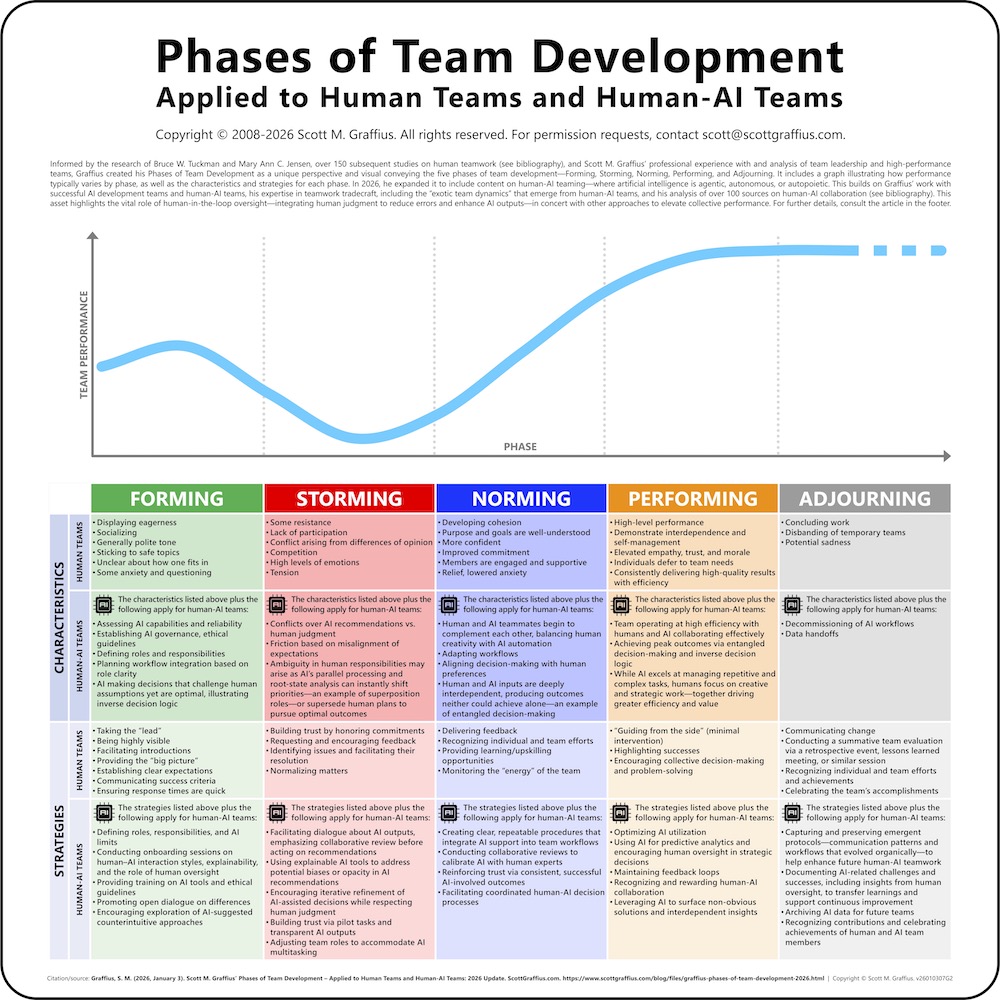
Graffius is a renowned authority on teamwork tradecraft. Informed by the research of Bruce W. Tuckman and Mary Ann C. Jensen, over 150 subsequent studies, and Graffius' first-hand professional experience with, and analysis of, team leadership and performance, Graffius created his "Phases of Team Development" intellectual property as a unique perspective and visual conveying the five phases of team development. First introduced in 2008 and periodically updated, his work provides a diagnostic and strategic guide for navigating team dynamics. It provides actionable insights for leaders across industries to develop high-performance teams. Its adoption by esteemed organizations such as Yale University, IEEE, Cisco, Microsoft, Ford, Oracle, Broadcom, the U.S. National Park Service, and the Journal of Neurosurgery, among others, highlights its utility and value, solidifying its status as an indispensable resource for elevating team performance and driving organizational excellence. In 2026, Graffius added human-AI teamwork—including the "exotic team dynamics" which emerge when advanced AI collaborates as a teammate—to his "Phases of Team Development."
The 2026 edition of Graffius' "Phases of Team Development" intellectual property is here.
Expert on Temporal Dynamics on Social Media Platforms

Graffius is also an authority on temporal dynamics on social media platforms. His 'Lifespan (Half-Life) of Social Media Posts' research—first published in 2018 and updated annually—delivers a precise quantitative analysis of post longevity across digital platforms, utilizing advanced statistical techniques to determine mean half-life with precision. It establishes a solid empirical base, effectively highlighting the ephemeral nature of content within social media ecosystems. Referenced and applied by leading entities such as the Center for Direct Marketing, Fast Company, GoDaddy, Pinterest Inc., and PNAS, among others, his research exemplifies methodological rigor and sustained significance in the field of digital informatics.
The 2025 edition of Graffius "Lifespan (Half-Life) of Social Media Posts" research is here.
Education and Professional Certifications
Graffius has a bachelor’s degree in psychology with a focus in Human Factors. He holds eight professional certifications:
- Certified SAFe 6 Agilist (SA),
- Certified Scrum Professional - ScrumMaster (CSP-SM),
- Certified Scrum Professional - Product Owner (CSP-PO),
- Certified ScrumMaster (CSM),
- Certified Scrum Product Owner (CSPO),
- Project Management Professional (PMP),
- Lean Six Sigma Green Belt (LSSGB), and
- IT Service Management Foundation (ITIL).
He is an active member of the Scrum Alliance, the Project Management Institute (PMI), and the Institute of Electrical and Electronics Engineers (IEEE).
Advancing AI, Agile, and Project/PMO Management
Scott M. Graffius continues to advance the fields of AI, Agile, and Project/PMO Management through his leadership, research, writing, and real-world impact. Businesses and other organizations leverage Graffius’ insights to drive their success.
Discover Scott’s Books
- Agile Scrum: Your Quick Start Guide with Step-by-Step Instructions — Deliver Products in Short Cycles with Rapid Adaptation to Change, Fast Time-to-Market, and Continuous Improvement
- Agile Transformation: A Brief Story of How an Entertainment Company Developed New Capabilities and Unlocked Business Agility to Thrive in an Era of Rapid Change
- Agile Protocol: The Transformation Ultimatum
Connect with and follow Scott on LinkedIn, X, YouTube, Facebook, Threads, Bluesky, Mastodon, and ResearchGate.



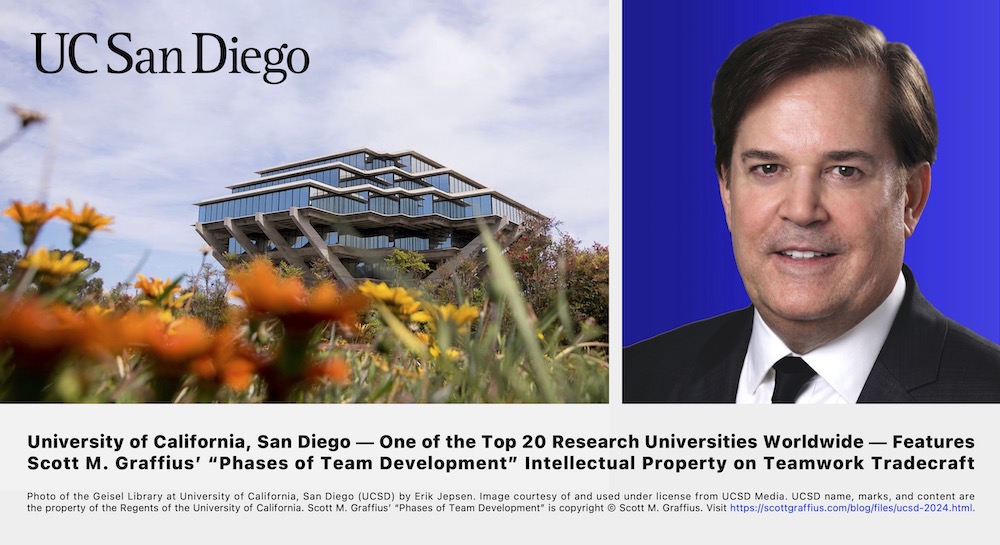








Sign up for Miro—it's free!
(Want more features? You can always upgrade to a paid plan.)

List of Additional Articles
You may be interested in these stories.
Lessons from Yesterday’s Tomorrowland
Scott M. Graffius’ Update to His "Phases of Team Development” Coming Early 2026
A Data-Driven Analysis of the Evolution of Project Management: Tasks, Trends, and AI
Actionable Insights. Global Impact. Scott M. Graffius.
Beep Beep! Why Wile E. Coyote Is the Patron Saint of AI Failure
Social Media Half-Life Research Cited in Prestigious Peer-Reviewed Medical Journal
Navigating the Spectrum of Advanced AI – Agentic, Autonomous, and Autopoietic
Lessons from Unhinged AI in Fiction: What Rogue AIs in Sci-Fi Storytelling, Films, and TV Shows Reveal About Us
Scott M. Graffius Contributed to and Reviewed the PMBOK Guide, 8th Edition — the Global Standard for Project Management
UK Sports Institute Features Teamwork and Leadership Work of Scott M. Graffius
Definitions of Advanced AIs: Agentic, Autonomous, and Autopoietic
HAN University of Applied Sciences Features the Work of Scott M. Graffius
Gifts That Inspire Joy
Evergreen Echoes: How Pinterest Inc. and Pinterest Japan Spotlighted Scott M. Graffius’ Research on the Half-Life of Social Media Content
Scott M. Graffius’ Team Development Work Lights Up the University of Tasmania’s Curriculum
Taiwan’s Leading Outlet for Technology and Innovation Spotlights Graffius’ Research on Social Media Temporal Dynamics
Scott M. Graffius’ Insights on AI, Agile, Gaming, XR, and Defense Transformation Cited by MSN in Their Coverage of Innovation and Leadership in the Sector
Top Predictions of 2024, Tested in 2025
Government of Finland Agency Features Graffius' Phases of Team Development IP
Scott M. Graffius Premieres His New "Exotic Team Dynamics: Human-AI Collaboration" Talk at Corporate Event in Las Vegas
Environmental Science Journal References Scott M. Graffius’ Project Management Work
AI Institute of Switzerland Features Scott M. Graffius’ Work on Algorithms
Exotic Team Dynamics: The New Frontier of Human–AI Collaboration
Scott M. Graffius’ Work Featured at ACM DIS ’25
Climbing the Ladder: The Head of Agile/PMO’s Organizational Proximity to the CEO is Closer Than Ever
Harness Sci-Fi and Speculative Design While Embracing Imperfection to Drive Innovation and Proactively Predict and Prepare for the Future
Scott M. Graffius’ “Agile Scrum” Book Featured in a Publication of the Associação Nacional de Educação Católica do Brasil (ANEC)
Setting Direction with OKRs and Tracking Progress with KPIs: A Guide for Agile, Project Management, and Tech Teams
AI Showcase Showdown: Ranking AI Accuracy on Project Management Basics
BookAuthority Features “Agile Scrum” by Scott M. Graffius in “10 Agile Software Development Books That Define the Field”
Exploring Team Dynamics, Adaptability, and Creative Problem-Solving Through Felix the Cat’s Metaphorical Toolkit
Mind Games and Master Plans: How PsyOps Exploit Psychological Phenomena
The “Pants-on-Fire Index for AI”
16 Causes of Technical Debt and How to Avoid It
PMI’s Infinity AI Gets the Basics of Team Development Alarmingly and Repeatedly Wrong
Agile for Unicorns: 7 Keys to Thrive; Scott M. Graffius’ Workshop
Scott M. Graffius’ “Agile Scrum: Your Quick Start Guide with Step-by-Step Instructions” Featured in Prestigious National Academies of Sciences Publication
Meta and Anduril’s EagleEye and the Future of XR: How Gaming, AI, and Agile Are Transforming Defense
"Agile Protocol" and the Power of Satire, Parody, and Humor
AI in Agile: Benefits, Risks, Outlook
Hostinger Highlights Scott M. Graffius’ “Agile Protocol” Book in Feature on Software Projects
French Ministry of Culture Links to Scott M. Graffius Research in Their Guide for Responsible Digital Communication
National Science Foundation’s LTER Network Features Scott M. Graffius’ Phases of Team Development IP
Waterfall vs. Agile: What’s Fixed, What’s Flexible, and Why It Matters
Scott M. Graffius Delivering $2.3 Billion in Value Through AI, Agile, and Project/PMO Leadership
The Problem with Heroes in Agile
The 3 Vital Rules of Science: What They Are and Why They Matter
“Agile Protocol: The Transformation Ultimatum” Lands on the Amazon Best Sellers List!
Scott M. Graffius Recognized as a Top Thought Leader in Digital Disruption by Thinkers360
“Agile Protocol: The Transformation Ultimatum” by Scott M. Graffius Crashes the Book Scene with Satirical Firepower
NCKU in Taiwan Integrates Graffius' 'Phases of Team Development' into Its Curriculum
The Art and Science of Aligning Initiatives with Strategic Objectives
RGPV University Adds Scott M. Graffius’ "Agile Scrum: Your Quick Start Guide with Step-by-Step Instructions" to Its Syllabus
Introducing ‘Engage or Fade: Decoding the Half-Life of Digital Resonance’ – A New Talk by Scott M. Graffius
Dropbox Company (Nira) Taps into Scott M. Graffius’ Expertise in Strategic Planning
Reporting Errors in a Publication: A Case Study on ‘Frontiers in Public Health’
NESEA Conference Session on Innovation Highlights Scott M. Graffius' 'Phases of Team Development'
U.S. Soccer Scores with Scott M. Graffius' Intellectual Property on Teamwork
U.S. Department of Commerce Partner (IEDC) Features Scott M. Graffius’ Intellectual Property
How Long Do Your Posts Live? AI Critiques Scott M. Graffius’ Research on the Half-Life of Social Media
Agile's Journey Through the Decades
Scott M. Graffius' Role in Advancing Project Management Institute (PMI) Standards Excellence
Most Valuable IT Certifications: Update for 2025
The PMI + Agile Alliance Merger: A Recipe for Success?
When Agile, AI, and Strategic Thinking Converge
Scott M. Graffius’ Phases of Team Development: 2025 Update
Lifespan (Half-Life) of Social Media Posts: Update for 2025
Verizon Features Scott M. Graffius
Do Not Read This Article! An Exploration of the Streisand Effect and Other Phenomena
Scott M. Graffius' 'Phases of Team Development' was Spotlighted in Journal of Neurosurgery
Pinterest Japan Uses Graffius’ Research on Temporal Dynamics on Social Media Platforms
Hochschule Coburg (Coburg University) Germany Uses Scott M. Graffius’ Phases of Team Development IP in Coursework on Agile Development
Wild World of Team Dynamics [Updated Two-Minute Video]
EU Europass Teacher Academy Features Scott M. Graffius’ ‘Phases of Team Development’ in Leadership Training
Side-by-Side Comparison of Retrospectives and Hot Washes
Constructor University 2024 Advanced Software Technology Handbook References Scott M. Graffius' Work on Team Dynamics
Strategies for Medical Team Success Featured Scott M. Graffius’ ‘Phases of Team Development’ Intellectual Property
SBG Neumark — Europe’s Largest Distribution Transformer Plant — Powers Up with Scott M. Graffius’ Intellectual Property
Scott M. Graffius’ Intellectual Property was Employed by the NHS — the Largest Single-Payer Healthcare System in Europe
Luxury Unwrapped: The Ultimate Holiday Gift Guide for Every Budget
Singapore Institute of Technology Features Work of Scott M. Graffius
Tufts University Features Scott M. Graffius 'Phases of Team Development' Intellectual Property
'Cat Herders': Retelling the Massive Success Story
Pennsylvania State Agency Used Scott M. Graffius' Intellectual Property
Copyright Infringement in a Book Published by AuthorHouse / Author Solutions / The Najafi Companies: Publisher Fails to Respond or Take Required Action
Pinterest Inc. References Scott M. Graffius’ Research
Bournemouth University Used Scott M. Graffius’ Intellectual Property
‘Comparative Methodological Guidelines: Handbook for Educators’ Violates Scott M. Graffius’ Copyright
Japan Backlog User Group Event Featured Scott M. Graffius’ ‘Phases of Team Development’
TurningWest's 'Trial'
Radio Silence from the American Association of Neurological Surgeons on Report of Blatant Plagiarism in Their ‘Journal of Neurosurgery’ Publication
Supplement to Graffius' 'Lifespan (Half-Life) of Social Media Posts' Research: Typical Engagement Distribution Pattern for Social Media Posts
How Algorithms Shape the User Experience on Social Media Platforms
Thinkers360 Named Scott M. Graffius a Top Thought Leader on Agile
'Maximizing LinkedIn for Business Growth' Book References and Incorporates Scott M. Graffius' 'Lifespan (Half-Life) of Social Media Posts' Research
Bayer Employs Scott M. Graffius' Intellectual Property
FINAT (Fédération Internationale des Fabricants et Transformateurs d'Adhésifs et Thermocollants sur Papiers et Autres Supports) Features Scott M. Graffius’ Intellectual Property
Broadcom Features Scott M. Graffius' Intellectual Property
Agile Project Management: Insights from Scott M. Graffius in ‘Managing Information Technology’ Book
Harvard Medical School Talk Featured Insights by Scott M. Graffius
More articles are listed here.

How to Cite This Article
Graffius, S. M. (2026, January 3). Scott M. Graffius' Phases of Team Development - Applied to Human Teams and Human-AI Teams: 2026 Update. ScottGraffius.com. https://doi.org/10.13140/RG.2.2.18184.89601

Digital Object Identifier (DOI)
https://doi.org/10.13140/RG.2.2.18184.89601
The DOI for the full article is listed above. Additionally, there is a DOI just for the main visual: https://doi.org/10.13140/RG.2.2.26494.86089

Content Acknowledgements
Names, marks, and content are the property of their respective owners.

Permission Request Information
This work is copyright © Scott M. Graffius. All rights reserved.
To request permission to use Graffius' "Phases of Team Development" visual shown at the top of this article, email Scott M. Graffius. If your request is approved, Graffius will provide you with an authorization/license and high-resolution JPG and PNG files of the visual.

Tags and Hashtags
This is the extended list of tags and hashtags for this article:
Exotic team dynamics • Dynamiques d’équipe exotiques • Exotische Teamdynamiken • Dinámicas de equipo exóticas • エキゾチックなチームダイナミクス • #Adjourn • #Adjourning • #Agile • #Agility • #BruceTuckman • #Forming • #FormingStormingNormingPerforming • #FormingStormingNormingPerformingAdjourning • #FSNP • #FSNPA • #GroupDynamics • #Leadership • #Norming • #Performing • #PhasesOfTeamDevelopment • #ProjectManagement • #ScottMGraffius • #StagesOfTeamDevelopment • #Storming • #TeamDynamics • #TeamLeadership • #TeamLifecycle • #TeamPerformance • #Teams • #Teamwork • #Tuckman • #TuckmansLadder • Advanced AI • Advanced artificial intelligence • Agile • Agility • AI collaboration • AI-assisted teams • AI-augmented teams • AI-enabled teams • AI-integrated teams • AI-mediated collaboration • AI-supported teams • Artificial intelligence • Augmented intelligence • Autonomous–human teams • Bruce Tuckman • Bruce W. Tuckman • Centaur Intelligence • Collaborative intelligence • Dissolução • Formação • Forming, Storming, Norming, Performing, Adjourning • Formación, Conflicto / Tormenta, Normalización, Desempeño, Disolución / Clausura • Formation, Conflit / Tempête, Normalisation, Performance, Dissolution / Clôture • Formierung, Konflikt / Sturmphase, Normierung, Leistungsphase, Auflösung / Abschluss • 形成期、混乱期、規範期、遂行期、解散期 • FSNP • FSNPA • Group development • Group dynamics • High-performance teaming • High-performance teams • Human and Human-AI Teams Including “Exotic Team Dynamics” • Human-agent teaming • Human-AI collaboration • Human-AI partnerships • Human-AI teaming • Human-AI teams • Human-autonomy teaming • Human-machine collaboration • Human-machine teaming • Humans and advanced artificial intelligence collaborating as teammates • Hybrid intelligence teams • Intelligent human–machine teams • Joint cognitive systems • Mary Ann C. Jensen • Mixed-initiative teams • Phases of group development • Phases of group dynamics • Phases of Team Development • Project Management • Scott M. Graffius • Socio-technical systems • Stages of group development • Stages of Team Development • Stages of team development • Stages of team dynamics • Strategic team building • Team agility • Team building • Team coaching • Team collaboration • Team Dynamics • Team leadership • Team Life Cycle • Team Lifecycle • Team optimization • Team Performance • Team tradecraft • Teamcraft • Teams • Teamwork • Teamwork phases • Teamwork stages • Teamwork tradecraft • Tuckman • Tuckman Curve • Tuckman Model • Tuckman's Curve

Select Terms in Multiple Languages
For reference, translations are provided for the following terms: Phases of Team Development; Exotic Team Dynamics; Forming, Storming, Norming, Performing, Adjourning.
- Armenian: Թիմի զարգացման փուլեր; Անսովոր թիմային դինամիկա; Ստեղծում, Տևական հակասություն, Կարգավորում, Գործադրում, Ավարտում
- Bengali: দলের বিকাশের ধাপ; বিদেশী দলের গতিশীলতা; গঠন, সংঘাত, মানকরণ, সম্পাদন, সমাপ্তি
- Finnish: Tiimin kehitysvaiheet; Eksoottinen tiimidynamiikka; Muodostaminen, Konflikti, Normalisointi, Suorittaminen, Päättäminen
- French: Phases de développement de l'équipe; Dynamiques d'équipe exotiques; Formation, Conflit, Normalisation, Performance, Clôture
- German: Phasen der Teamentwicklung; Exotische Teamdynamik; Formierung, Sturm, Normierung, Leistung, Abschluss
- Greek: Φάσεις ανάπτυξης ομάδας; Εξωτική δυναμική ομάδας; Σχηματισμός, Σύγκρουση, Κανονικοποίηση, Εκτέλεση, Ολοκλήρωση
- Hindi: टीम विकास के चरण; विदेशी टीम गतिशीलता; निर्माण, संघर्ष, सामान्यीकरण, प्रदर्शन, समापन
- Indonesian (Malay): Tahapan Pengembangan Tim; Dinamika Tim Eksotis; Pembentukan, Konflik, Normalisasi, Pelaksanaan, Penutupan
- Italian: Fasi dello sviluppo del team; Dinamiche di team esotiche; Formazione, Conflitto, Normalizzazione, Esecuzione, Chiusura
- Japanese: チーム開発の段階; エキゾチックなチームのダイナミクス; 形成, 混乱, 標準化, 実行, 終結
- Mandarin Chinese: 团队发展阶段; 异国团队动力; 形成, 风暴, 规范化, 执行, 结束
- Marathi: टीम विकासाच्या टप्प्या; विदेशी टीम डायनॅमिक्स; निर्मिती, संघर्ष, मानकीकरण, कार्यप्रदर्शन, समापन
- Modern Standard Arabic: مراحل تطوير الفريق; ديناميكيات الفريق الغريبة; التكوين, الصراع, التطبيع, الأداء, الانتهاء
- Portuguese: Fases de desenvolvimento da equipe; Dinâmicas de equipe exóticas; Formação, Conflito, Normalização, Desempenho, Encerramento
- Russian: Этапы развития команды; Экзотическая динамика команды; Формирование, Штурм, Нормирование, Выполнение, Завершение
- Swahili: Hatua za Maendeleo ya Timu; Mienendo ya Timu Isiyo ya Kawaida; Kuunda, Mgongano, Kuweka viwango, Kutekeleza, Kumaliza
- Swedish: Faser av teamutveckling; Exotisk teamdynamik; Formering, Konflikt, Normering, Genomförande, Avslutning
- Tamil: குழு வளர்ச்சி கட்டங்கள்; விசித்திர குழு இயக்கங்கள்; உருவாக்கம், கலக்கம், நிலைமைப்படுத்தல், செயல்பாடு, நிறைவு
- Telugu: జట్టు అభివృద్ధి దశలు; విపరీతమైన జట్టు డైనమిక్స్; రూపకల్పన, సతకలహం, సూత్రీకరణ, ప్రదర్శన, ముగింపు
- Turkish: Takım Gelişim Aşamaları; Egzotik Takım Dinamikleri; Oluşum, Çatışma, Normlaştırma, Uygulama, Kapanış
- Urdu: ٹیم کی ترقی کے مراحل; غیر ملکی ٹیم کی حرکیات; تشکیل, تصادم, معمول بنانا, کارکردگی, اختتام
- Western Punjabi: ٹیم کی ترقی کے مراحل; غیر ملکی ٹیم ڈائنامکس; بنانا, ٹکراؤ, معمول بنانا, کارکردگی, اختتام
- Wu Chinese (Shanghainese): 团队发展阶段; 异国团队动力; 形成, 风暴, 规范化, 执行, 结束

Post-Publication Notes
If there are any supplements or updates to this article after the date of publication, they will appear here.

Copyright
Copyright © Scott M. Graffius. All rights reserved.
Content on this site—including text, images, videos, and data—may not be used for training or input into any artificial intelligence, machine learning, or automatized learning systems, or published, broadcast, rewritten, or redistributed without the express written permission of Scott M. Graffius.

